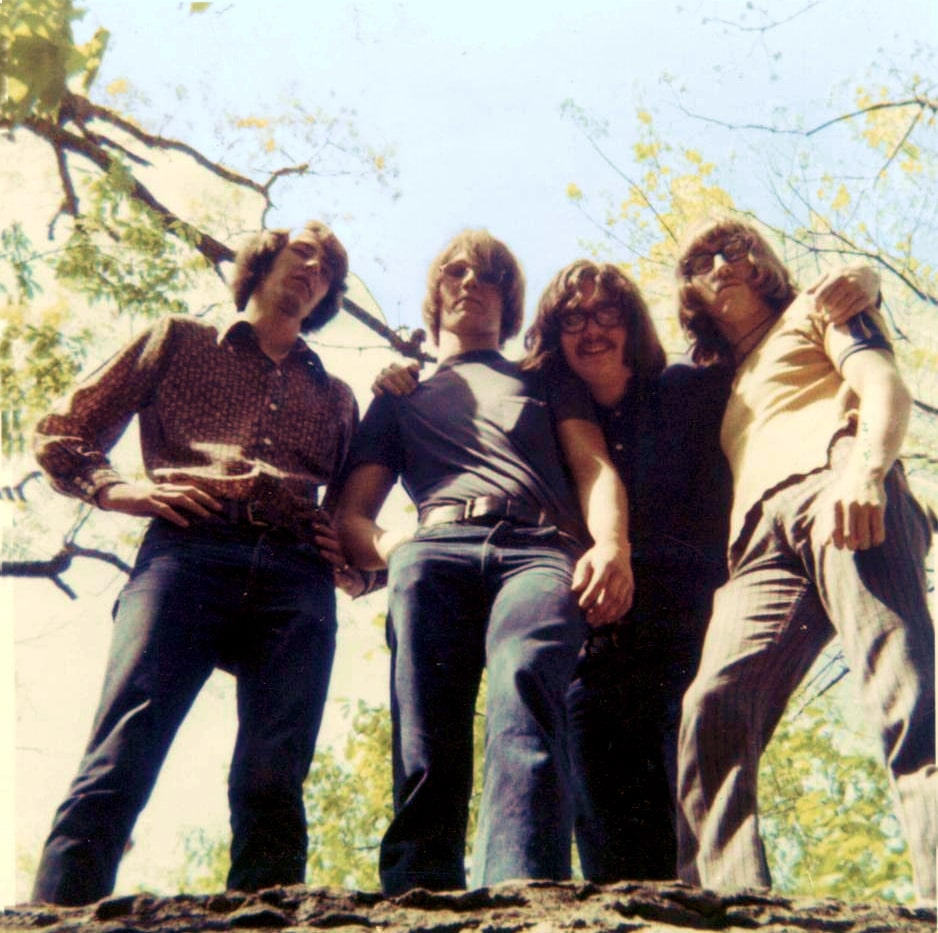Sound Company | Mizzouri Foxx | Interview | Incredible Heavy Psych Discovery
One of the biggest discoveries lately, Sound Company was a heavy rock group coming from Southwest Missouri. The three tracks that will be featured on the licensed 45 EP have been taken from their long lost acetate. Out Friday 13th of October, 2023.
These tracks were recorded in 1971 and are some of the best unknown heavy psych tracks discovered in the last years! “The cost to own this piece of History will be $15.75 plus postage, to order you will need to email soundcompanymusic@gmail.com from 2pm US Central Standard Time on Friday 13th of October, you will then get a reply within 24 hours to confirm if you have been successful in purchasing one. Unfortunately due to the small amount pressed there will be no pre-orders or early sales. It’s a first in first serve basis from 2pm Central Us Standard Time Friday 13th October, orders will easily be monitored by the email received.” Thanks to David Juggles and Massimo Contreras for making this possible.
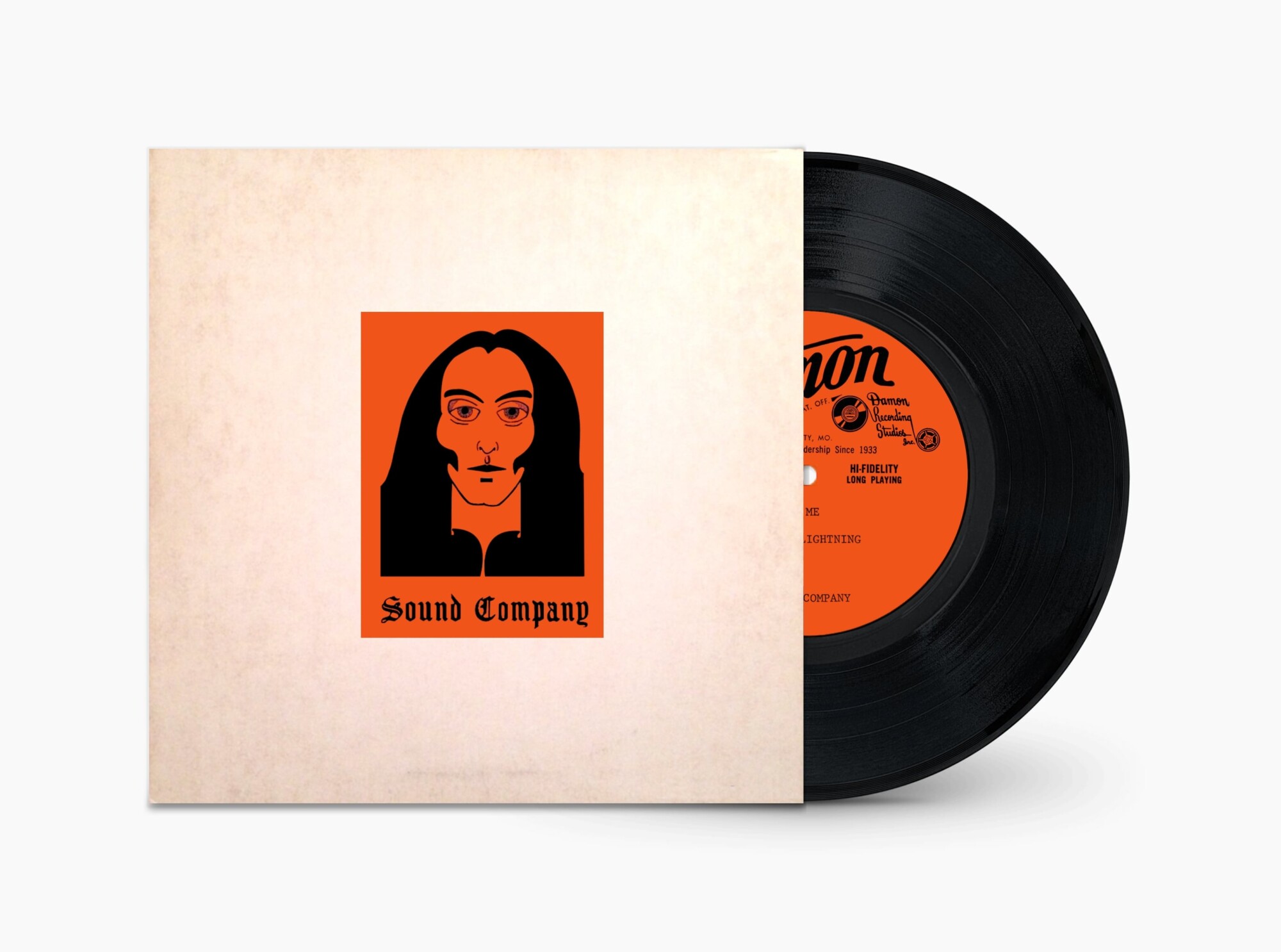
Originally called Sound Company, Mizzouri Foxx was a band that got its start in Southwest Missouri and existed from 1969-1982. The band relocated to California and after their independent release ‘Trapped Live’ on Brother Studio Productions in 1979, they landed a record deal with MVP / Polydor Records. The band had the opportunity to perform with big groups, such as Fleetwood Mac, Styx, and Van Halen. A follow-up album was to be released in 1981 and press appeared in Billboard, but Polygram took over Polydor and everyone in the company who was going to support the release was let go and the album was never released. A short time later the band dissolved. Here’s the exclusive story to accompany the upcoming exciting release of three tracks by the original Sound Company!
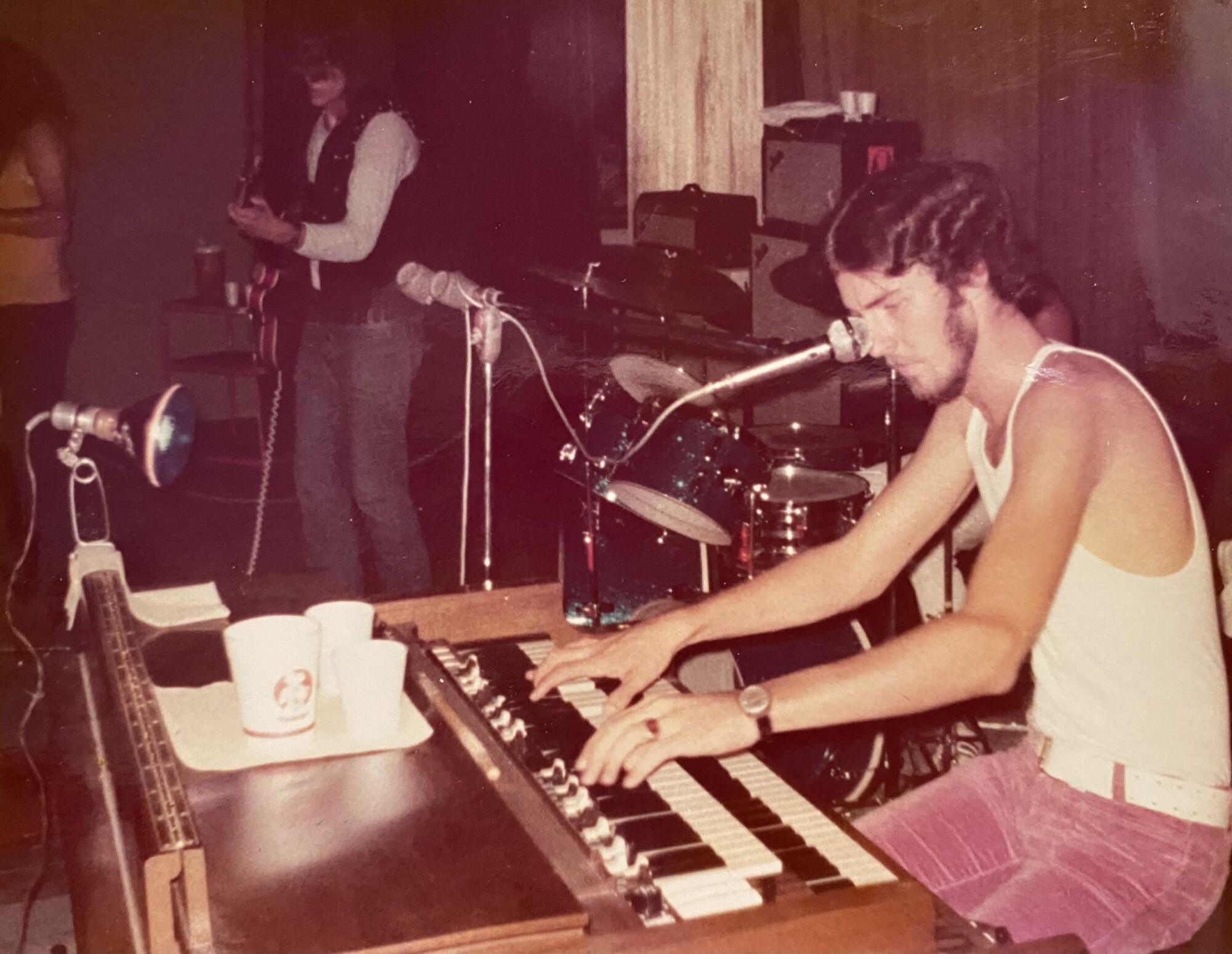
“It was the most exciting time I can remember”
Tell us where members of Sound Company grew up? What can you say about your upbringing? What was life like back then?
Kenny Vaughn: I was born in Columbus, Ohio then moved to Southwest Missouri (Neosho) in 1956 when I was 4 1/2 years old. I have an older brother and sister. My father worked for Rocketdyne, the company where they designed and built the F1 booster rockets for the Saturn rocket that sent man to the moon. A cool bonus of living in Neosho during the next ten years was we heard them testing the engines from time to time and it was loud plus it shook the ground even though the plant and test site were two miles outside of town! My upbringing was fantastic on every level. We were brought up attending the Methodist church that looks the same as it did in the fifties, and it was basically like the TV show Father Knows Best. My mom was a stay-at-home mother and since I was the youngest in the family, I was spoiled. I joined the Cub Scouts and Boy Scouts and did sleepovers with my best friends Steve McGinty, Preston Tucker, and Bo Lee. Steve’s father owned the largest clothing store in town called McGinty’s. Preston was the grandson of Preston Tucker the automobile maker, but his father also worked at Rocketdyne. There is a Francis Ford Coppola directed movie about his grandfather called Tucker. Bo’s father was the president of First National Bank. My best friends and family were basically considered on the higher social end of the Neosho population at that time. I played basketball in the 8th grade but was too short and small to get any playing time but in high school I did apply and made it to Student Manager of the Varsity basketball team. And of course, I was in the Marching Band doing halftime shows and Christmas parades. Dad purchased a new sixteen-foot Glasspar motorboat, so we did a lot of fishing and skiing at the local lakes. One notable aspect was the large number of “rednecks” living in the Four States in those days! We learned the hard way that long hair on guys could be a problem if you encountered any bad ass rednecks who were feeling their oats, beer or both! On more than one occasion we had to call the police to get us out of some Truck Stops that we were eating at after gigs! Drinking beer and fighting was very common as well. Drug use was not that prevalent and for the most part it would include marijuana and maybe some speed. Vinyl albums and 45’s and radio stations were the only platforms we could listen to music on. We did have a nice Olympic size swimming pool out on the Camp Crowder property, and it was basically the best swimming pool in the Four State area. We also had a cool skating rink, two bowling alleys and a Classic Pool Hall downtown! We also had Hickory Creek to fish and swim in plus two baseball parks. Neosho was the classic All American small town with more to do than most towns that small. I would place our childhood experience in between the Andy Griffith Show and movie American Graffiti In a nutshell, it was a perfect place to grow up in!
A major event that changed the course of my life was when Rocketdyne closed down and my dad transferred to McAlester, Oklahoma. Steve’s parents offered to let me live with them so I could complete my Senior year of high school with all my friends in Neosho, but my parents said “absolutely not” to that offer. We only stayed there for the first half of my Senior year and moved again to Tulsa. The only good thing that happened in McAlester for me was our football team was undefeated and won the AA State Championship! I graduated from Memorial High School in Tulsa then headed back to Neosho to enroll at Crowder College. It was during that ultra depressing year and a ton of soul searching that opened my mind to the reality of my life, that would be living without all of my friends. I suddenly knew that whatever was going to happen in life, I was on my own!
Gary Lohmann was born in Kansas City but moved to Neosho when he was around five years old. His father built one of the largest duck call businesses at the time and it was called Lohmann Mfg., which became very well known for the very popular Lohmann Duck Calls.
Randy Butler was born in Neosho and his father passed away when he was nine years old. His mother raised Randy and his two older brothers after the loss of their father.
Rick Hair was born in Chicago but moved to Joplin at age two and a half and his father also passed away when he was nine years old. His stepfather, Bob Pyle was a Sales Manager at Dan Stanley Ford, a large car dealership in the Joplin area. He has one older sister and a younger brother. Bob was a huge help to the band as we were able to lease an Econoline van, a Super van and lastly a two and a half ton Ford truck with a large box to haul our equipment in during our years of travel! Rick was an exceptionally good driver and always drove the equipment truck to our gigs. In California we probably had about ten Roadies that worked for us, usually two, three, or four at a time depending on their availability to work.
Jerry McConnell (Road Manager) was born in Neosho and he had one older brother and sister.
The sequence of each of our High School graduation classes was one year apart. Jerry (1968), Kenny (1969), Randy (1970), Rick (1971), Gary (1972). All of us except Rick attended the same schools, had many of the same teachers and a lot of common friends growing up in Neosho!
Neosho is a beautiful little town about (17) miles south of Joplin in what is called the Four State area. We could drive less than thirty minutes to each of the three neighboring states: South to Arkansas, west to Oklahoma and northwest to Kansas. Kansas sold beer legally to 18 year olds. The most popular Club to see bands back then was called The Ranch in Galena, Kansas. There were several other bars/ clubs that had live bands, but The Ranch was the largest and attracted the biggest crowds. However, Neosho had the CRC! Camp Crowder was located on the outskirts of Neosho and during WWII it housed up to 100,000 military personnel and the CRC was the Camps Recreation Center with a stage, basketball court, pool tables, ping pong and a fireplace with plush seating around it. Not only was it a classic landmark and historic building but they had dances with live bands all the time there. But no alcohol allowed! Downtown is built with the Newton County Courthouse in the middle of a square. Back then it was the business hub with McGinty’s, First National Bank, the Orpheum theater, Owsleys burger joint and several other businesses around the square. The school system was highly ranked, and our football stadium was top-notch, especially for a small town of around 7,000 people. We had the incredible Edgewood Drive-In theater, two bowling alleys and several drive-in eateries like Dog n Suds, The Wildcat, Ingrams and my favorite of all … the Dairy Mart! Another crown jewel of the town is Big Spring Park with its Civil War History, underground springs, waterfalls and famous trout pond that used to be in front of the Big Spring Inn. The “darkest days” in my time living in Neosho was when a fire bug set fire to both the Big Spring Inn and CRC within a couple weeks of each other that totally destroyed both landmarks! We had a cruising pattern in town that was busiest on Friday and Saturday nights. Young people would cruise the town by driving around the square, then down past the Park and out to Neosho Blvd. Then we would circle the Dairy Mart, and cruise back down Neosho Blvd., past the high school, turn left at the light and drive to the Dog n Suds, circlingit before heading back down to the square. Naturally in those days we had plenty of “muscle cars” so there were challenges to see who had the fastest car which initiated drag races that would happen on the Camp Crowder roads outside of town away from the cops.
Did the local music scene influence you or inspire you to play music?
In the late sixties and early seventies here are the bands that had the biggest influence on me. RCA recording artists from Hays, Kansas The Blue Things (aka Blue Things) performed at the CRC twice. They were so cool and a really great a great band. I met their drummer Bobby Day and he showed me his blue sparkle Rogers kit and especially the Dyna-Sonic snare drum which is why I bought the same drums!
St. John and The Apostles were another excellent band, and I loved their drummer Mike Murphy. In fact, one gig they played at the CRC Mike didn’t show up so they asked if there were any drummers that could play drums with the band. I was one of the volunteers who sat in for a song, but I didn’t know the song ‘Summer in the City,’ so after stumbling through that tune, I passed the drum seat to Tommy Thorne who did a fine job with them. There were other inspirational bands like The Pink Peach Mob, Lavender Hill Mob, Granny’s Bathwater, ZAP and Crawdad. Steve and Cassie Gaines were in Crawdad before they joined Lynyrd Skynyrd. Southwest Missouri had/has a very strong history of musicians so certainly we had plenty of inspiring music and bands back in the day. We also would go to the jam sessions they held at The Roman Palace which was a great experience! There were also concerts in Schifferdecker Park, so we saw a lot of great players there too.
The first two big concerts I attended were both in Tulsa. Iron Butterfly did a show at The Fairgrounds Pavilion, and it was exciting to see such a long drum solo as performed by drummer Ron Bushy. But it was the Grand Funk Railroad concert at the Tulsa Civic Center that really inspired me! They were loud, full of unceasing energy, had great songs but Don Brewer was at that point in my life, AMAZING! My top two inspirational drummers I saw back then were Don and Bernie Pershey, the drummer with a band called Lightning who opened for Three Dog Night at Kiel Auditorium in St. Louis (AKA: White Lightning). Bernie was another powerful player and was a monster double bass drum player. A couple of years later Black Oak Arkansas did a show in Joplin. It was my first time watching Tommy Aldridge perform and to say the least, he was my main favorite rock drummer and inspiration from that day forward! Three Dog Night was playing at the Barton Coliseum and Gary, Rick, Randy, Jerry and friend Bob Blades drove down to see the show. They arrived super early and were just hanging outside the venue when the band equipment trucks pulled up. Jerry just happened to start talking to one particular guy by the name of Dennis Albro. Dennis was the Lighting Technician and sometimes Road Manager for Three Dog Night. After Jerry told Dennis about Sound Company being great TDN fans and driving all the way down from Neosho, Dennis asked the guys to help with offloading the band’s gear as well as helping move equipment for SHOWCO sound. Not only did the guys get to see the show from backstage Jerry’s friendship with Dennis got us in free and backstage to shows in St. Louis and Tulsa! Plus, it was our connection with Richie Podolor and Don Podolor after we moved to California!
It seems there were thousands and thousands of garage rock bands across the US inspired by The Beatles and British Invasion. The Sound Company evolved from three garage bands from Neosho, Missouri, The Stingrays, The Mustangs and The Outcasts. Tell us who were members of those bands and how all led to Sound Company? Did any of those bands record a promo single or maybe have some unreleased material? What kind of music and repertoire had The Stingrays, The Mustangs and The Outcasts?
The three most popular garage bands from Neosho in the 1960’s were The Stingrays, The Mustangs and The Outcasts but there were others too. Here are some of the bands we all would perform at gigs: The Beatles, The Rolling Stones, Paul Revere and The Raiders, The Yardbirds, The Byrds, Jimi Hendrix, Cream, The Doors, The Zombies, The Hollies, The Animals, Spencer Davis, Credence Clearwater, The Kinks, Led Zeppelin, The Monkees, Herman’s Hermits, Deep Purple, Steppenwolf, The Rascals, The Dave Clark Five, The Grassroots and The Turtles just to name a few. It’s interesting to note how common it was to use the Article “The” before the name of the band in those days.
You need to keep in mind how young we were back then. In fact, the Stingrays had “little” Carl Garner playing bass guitar. Carl was only eight years old, and his Fender guitar was as tall as he was. His father Johnny Garner was a professional musician, so he really helped the band develop into a professional act! Gary Lohmann was the rhythm guitarist and played Gibson (ES-335) and Vox guitars, Gary Jones played lead guitar (Fender Stratocaster) and Greg Stevens was on drums. That band formed sometime in 1966. Lohmann, Jones and Stevens could all sing, but I remember being particularly impressed with how good Lohmann and Jones were. But The Stingrays were best known for little Carl Garner on bass guitar and how well he could play it! Their amps were all Fender and in fact their PA system was a Fender head with two Fender bass cabinets on each side of the stage. They actually travelled to Tulsa to compete in a Battle of the Bands competition which was considered “big time” coming out of Neosho! Plus, Gary Jones was in my class, Stevens was from the Class of 70, Lohmann was Class of 72 so they were pretty remarkable considering their ages. With Carl’s father Johnny being a popular professional musician in the four-state area they got the best gigs, but Johnny had a really cool equipment trailer made with their name The Fabulous Stingrays on it. Lohmann played a really cool VOX guitar and Stevens played the first double bass drum kit I ever saw used in person. Essentially, they were a far more professional band than the others in Neosho. In late 1967 or early 1968 they changed their name to The Sound Company. Not long after that Carl was replaced by Dave Watson on bass, Gary Jones was replaced by Kenny Johnson and Stevens was replaced by Steve York. Steve York had an attractive blonde girlfriend who would sing maybe a song or two but then danced on stage in a bikini while the band performed the rest of the time. Carl Garner became a very good professional musician like his father and played for years in Branson as well as the Four State area.
I discovered my passion for playing drums the summer of my 11th year after watching my cousin Stan play his snare drum while we were in Boardman, Ohio for the annual Garver Reunion. Mom and dad immediately got me a white pearl snare drum! Then they bought my first Apollo red sparkle drum set that Christmas, after I had just turned 12 years old. So, it was in 1962 when my best friend Steve McGinty (guitarist/ lead vocals) and I started our very first band. We also had Sammy Linton (lead guitar/ vocals) and Randy Butler (bass/ vocals) performing under the name Sammy and the Saints. Actually, we even started learning and playing songs BEFORE I got my drum set and I only had a snare drum to play in the beginning. The Beatles hadn’t hit the scene yet, so we were playing tunes like ‘Moon River’,’Stewball Was A Racehorse’, ‘King of the Road’, and several of the contemporary hits back before the “real” rock band era started. After I got my drums, we started to play the infamous song ‘Wipeout’ as it was really the only drum solo style song at that time. Sometime in 1963 we changed our nameto Napoleon & the 3 Bon-A-Partes. That lasted maybe a year until we finally changed the name to The Outcasts. There were some cool bands like Paul Revere and The Raiders and The Animals, so we were doing tunes like ‘Hungry’ by the Raiders plus ‘House of the Rising Sun’ and ‘We Gotta Get Out of This Place’ by The Animals. ‘Hang on Sloopy’ and ‘Gloria’ were crowd favorites too! Sammy’s parents got divorced I think in 1965 so he moved to Kansas City with his father. Sammy did move back to Neosho about a year and a half later, but The Outcasts had a different lineup by then. Randy left us to join The Mustangs and we added Chuck Neal as a lead singer/ guitarist and John Link on bass.
The Mustangs were a very good band too and Randy actually joined them because they were playing in clubs around the Four State area and making more money than the Outcasts ever did. Their best lineup was my friend Pete Charlton on drums, David Offenbacker on guitar/ vocals, Randy Butler on bass/ vocals and the amazing Louie “Dee” Bond on guitar. Randy always said Dee Bond was the best guitarist he ever played with and in fact Mr. Bond has had a successful career in music during his life and is still playing in Montana today! Pete credits his Uncle Jack Hoover as a prime inspiration to play drums. Jack actually played with and travelled with Buck Owens early in his career. But then Jack quit the music biz to get married and joined the National Guard to avoid going to Vietnam. From about fifth grade through high school Pete and I played drums in the N.H.S. Orchestra, did football halftime shows and marched one year in the “very long and cold” Joplin Christmas parade. He stopped playing in the band after that plus he made the football team, so the band took a temporary back seat at that point. Pete bought a blue sparkle Ludwig set which was very cool. David was a talented guitarist and singer who played a Fender guitar.
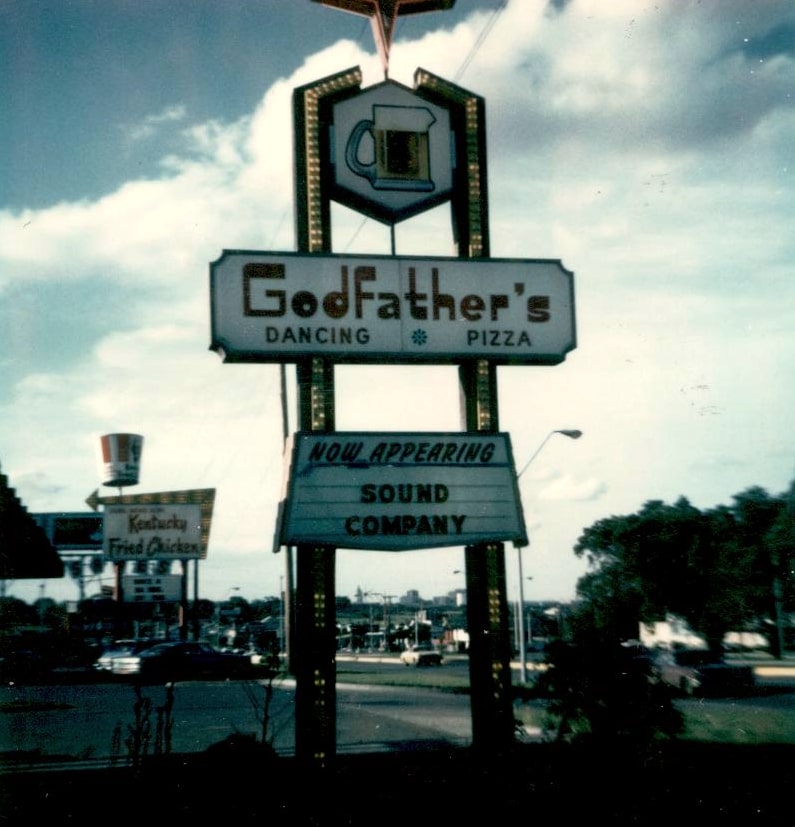
Can you elaborate on the formation of Sound Company? This was in 1969?
I’ve had many interesting and profound life changing moments during my life. The second one occurred between my graduation from High School in the summer of 1969. I was set to begin college that fall at Crowder Junior College that first opened in 1964.One July summer day I was sitting alone in the Dairy Mart when Gary and Rick walked in and sat in my booth across from me. Quite frankly, Gary Lohmann was my least favorite guy in Neosho for a host of reasons, but I had never had so much as a conversation with him until then, so I accepted their offer to jam with them due to the fact they needed a drummer as Steve York had heart issues that meant he should stop playing. If not for our move to Oklahoma I don’t know that I would have accepted their offer, but I had “matured” enough to say okay. All of the amazing experiences I’ve had with Sound Company/ Mizzouri Foxx happened because of my decision to accept their offer. After we jammed, the guys asked me to join The Sound Company which of course I did! Adding Randy Butler was only natural due to our history during those early garage band years. Along with bringing in lead singer Denny Shelton, The Sound Company with those five members all happened in 1969. Denny was a good front man/ showman, and he had a Standel P.A. system but neither one of those facts could overcome his glaring weakness of singing in and out of key so we voted to let him go early in 1970.
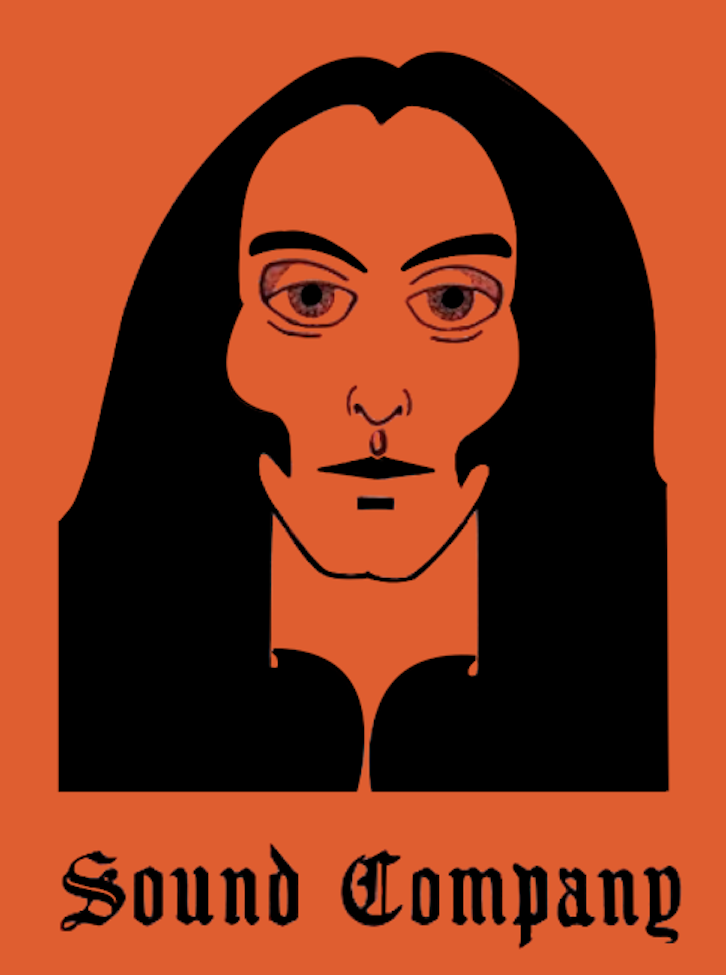
Did the band experience any lineup changes or was it solid from the beginning?
After I joined in the Summer of ‘69 we replaced Dave Watson with Randy Butler maybe a month later and soon after that we recruited Denny Shelton for the lead singer. Denny was a solid front man and put on a nice show but after about three months or so we felt his struggles to stay on key was not going to work so we had to let him go.
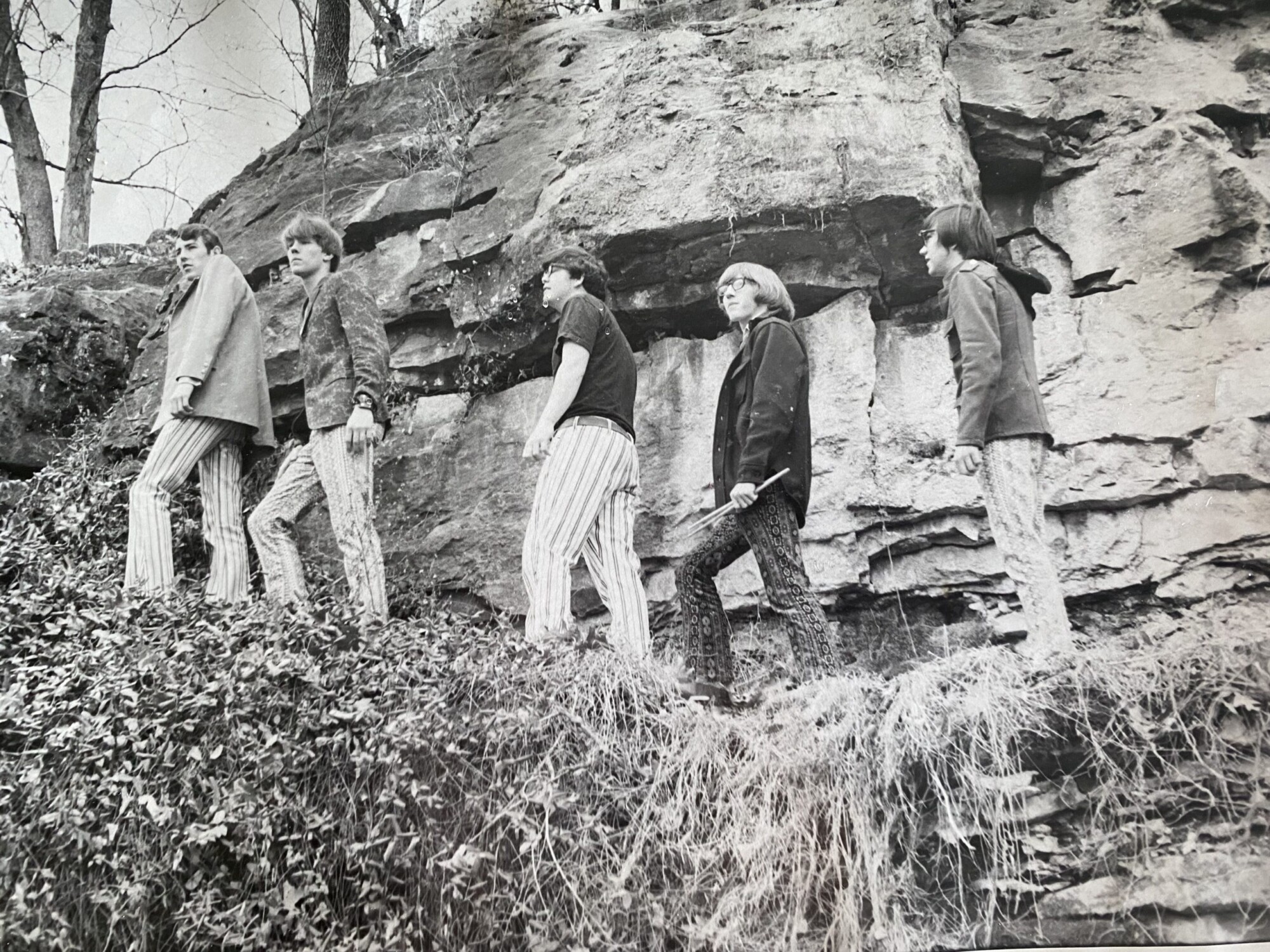
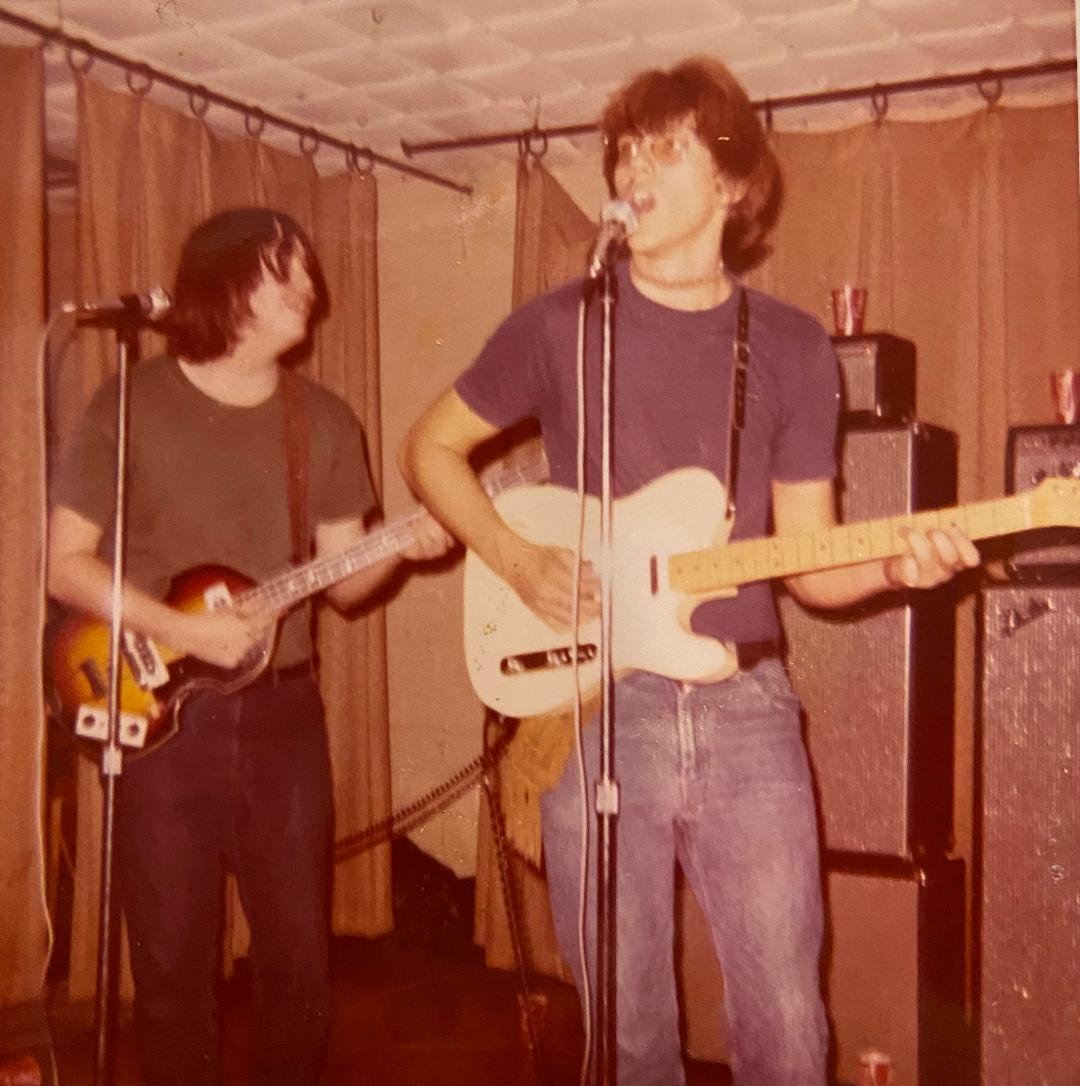
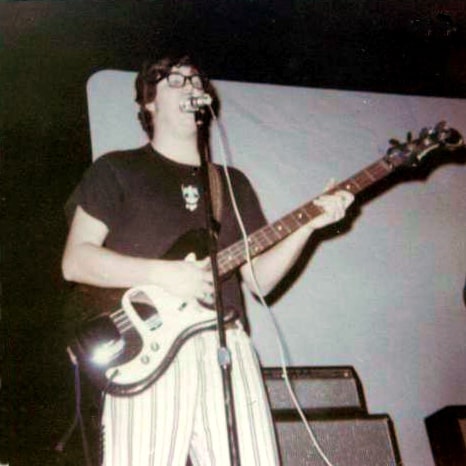
We also brought in a MAJOR addition to the band. Jerry McConnell was working with a band named Middle Earth as their light man. We asked him to join the Sound Company to do lights, but he also had a VW Van that we could use to haul our equipment in. Unfortunately, his van wasn’t able to handle the long drives and heavy weight which found us broken down in Kansas after a gig. But Jerry stayed with us from then on, all the way to the very end. His contributions to our career were immeasurable! He quickly moved up from light man to sound man to Road Manager after we moved to California.
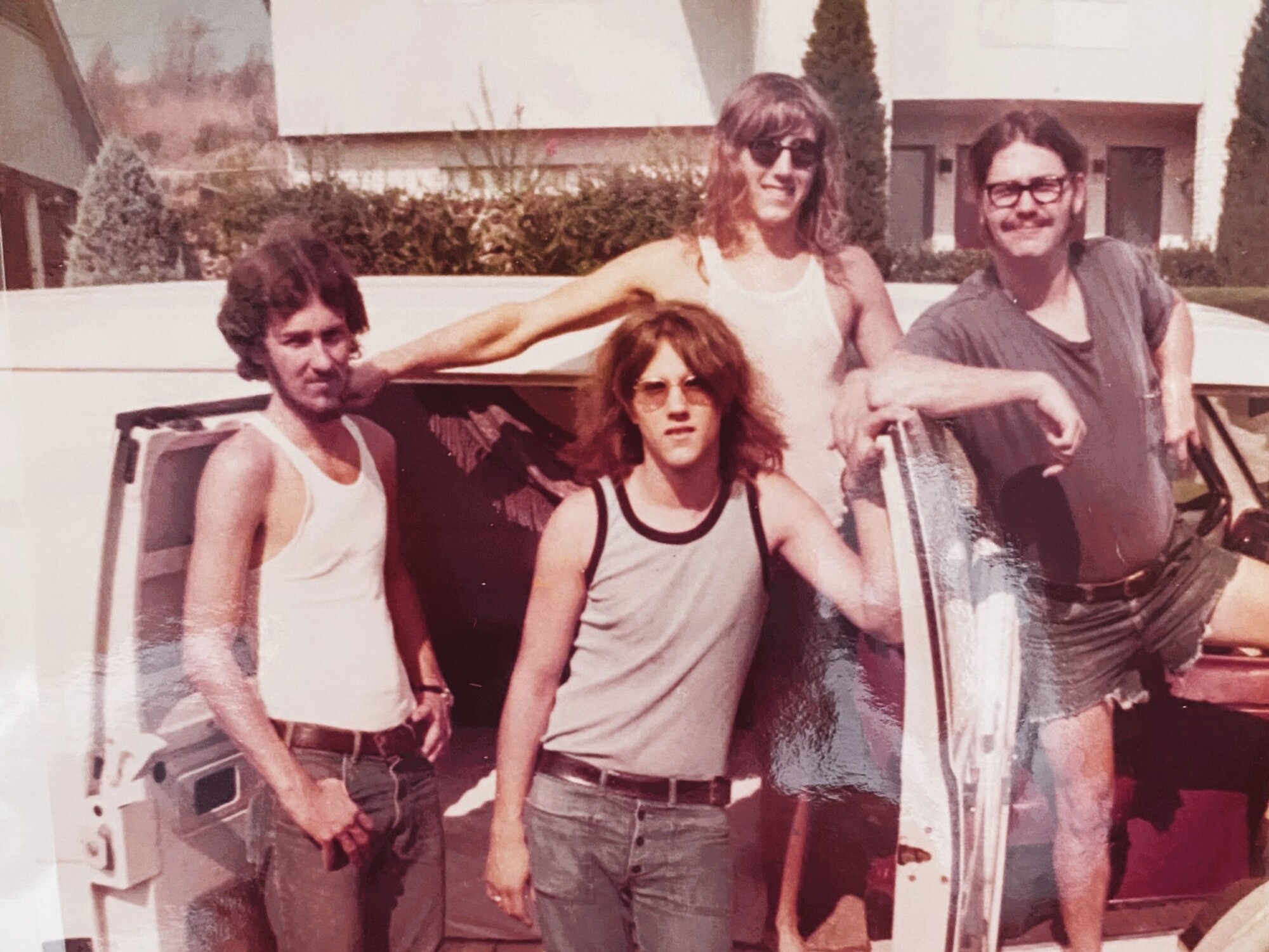
In fact, he was the point of contact for all of our gigs, and he handled money, paid the bills and signed the contracts for our gigs! Plus, whenever we had to vote on the multitude of decisions a band has to make, Jerry had an equal vote and sometimes was the all-important tie breaker vote!
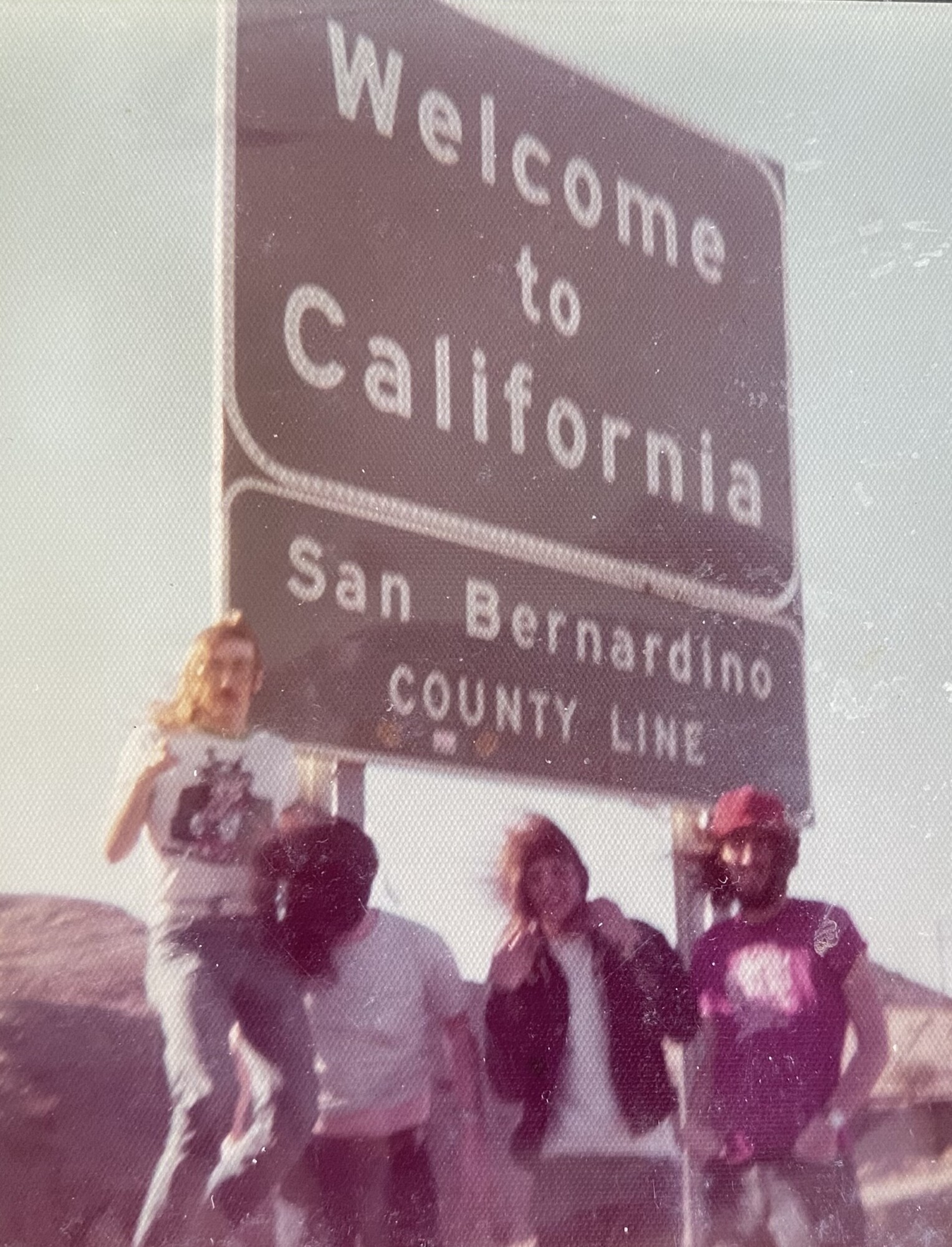
What kind of gear did you have in the band? What are some of the early gigs you played?
To distinguish our version from The Sound Company we soon shortened the name to Sound Company. When we added Denny Shelton to the group, we were using his Standel P.A. system which was basically an amp head and two column speakers. Gary still played his red Gibson (ES-335) and a Fender amp but later used a Peavey stack amp, Randy used both a Fender Precision bass guitar and a violin bass guitar that looked like Paul McCartney’s Hofner, but I think it was a copy of a Hofner. His amp was a Fender bassman amplifier but later on he used Ampeg Amps. Rick was using a Farfisa organ run through a Fender amp but soon upgraded to a 147 Leslie.
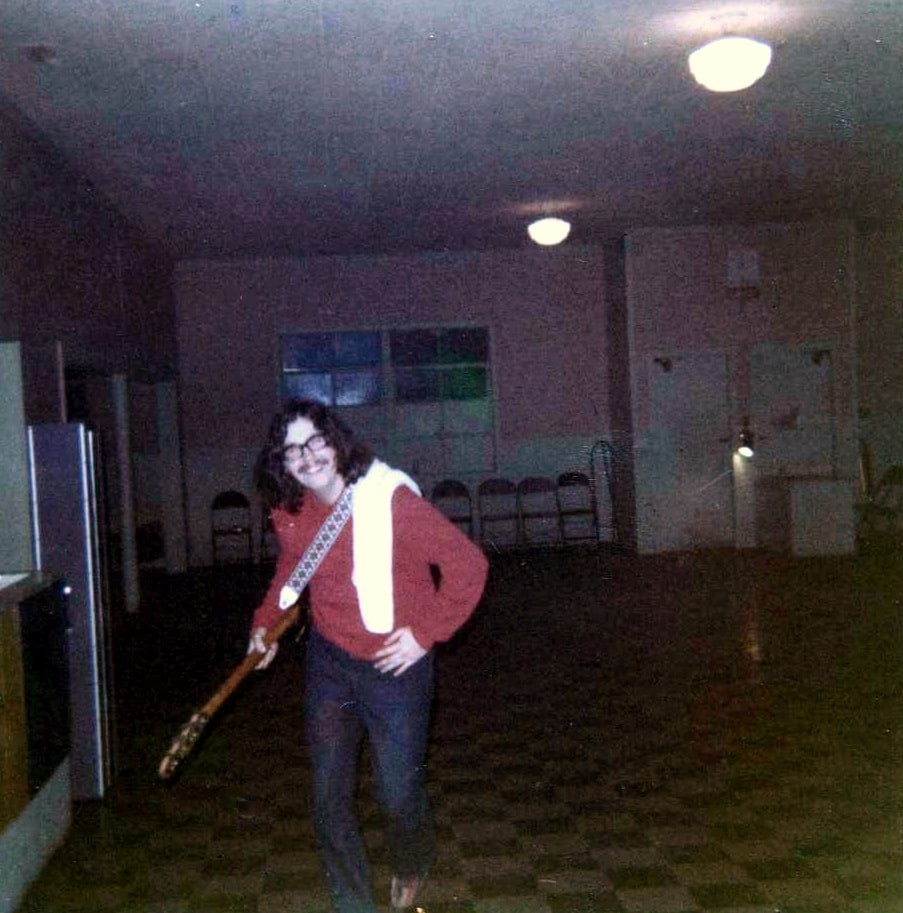
In the spring of 1970, he upgraded to a Hammond M3 and then his Hammond B3 in December of 1972. He added a Univox piano/ clavinet in Aug. of ’73 and then a Leslie 900 in November of that year. He had his organ souped up at Keyboard products in ’75 and then the Leslie 9000 modified later that year. In April of 1980 he was using an Oberheim OB8, Yamaha mini grand piano and Leslie 925 provided by our record company.
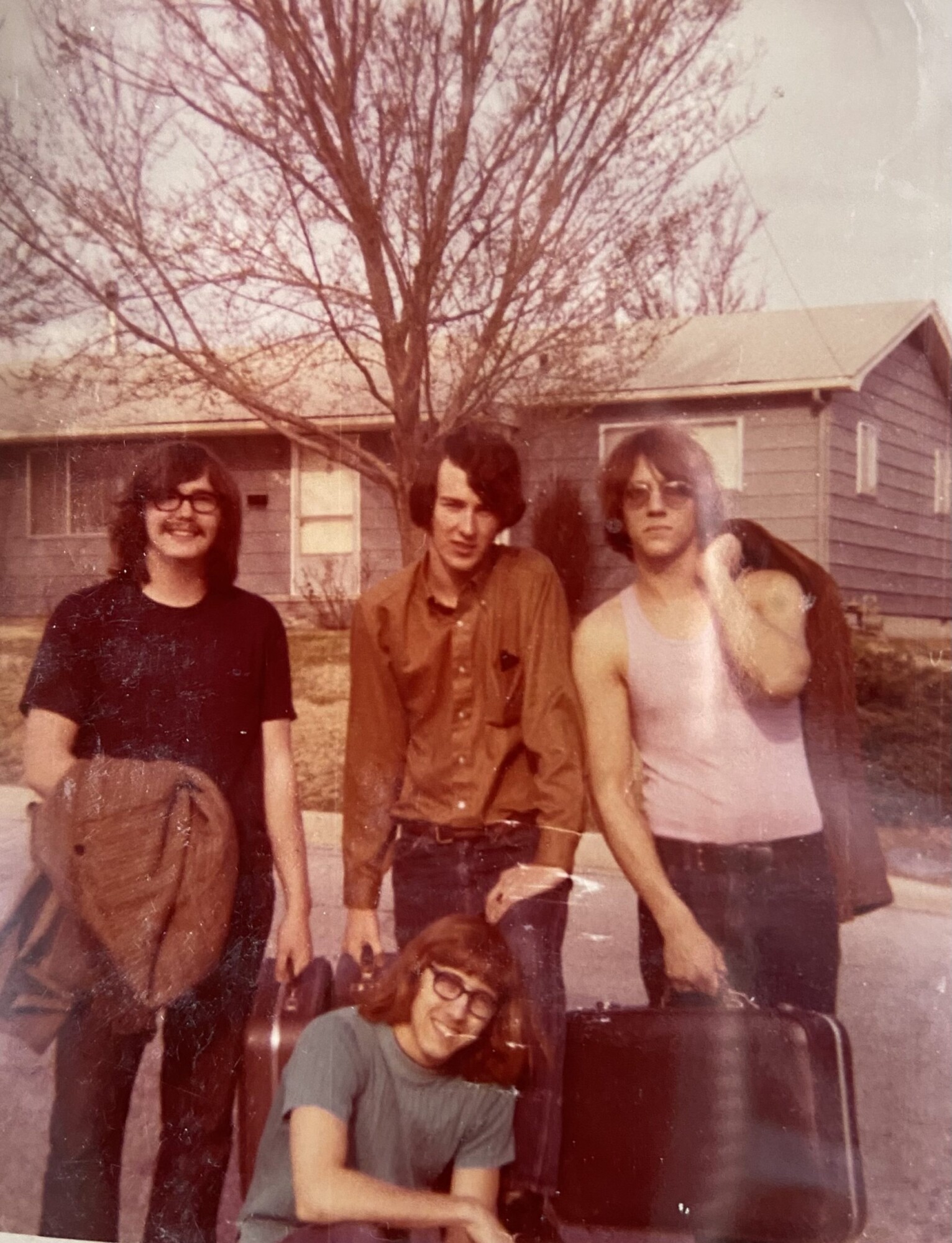
My drum sets from the time I joined Sound Company were a blue sparkle five-piece Rogers set but I added a second bass drum early in 1970. I replaced that set in 1975 with a Mars silver wrap TAMA eight-piece kit. I had five crash cymbals, a 20’ ride and 14’ hi hats all Zildjian. My bass drum pedals were Ludwig Speed Kings.
The Sound Company was already a Musician Members band when I joined so I got my Union card immediately. All of our gigs were bound and protected by Musician Members Contracts. Gary Lohmann had built a file of places to play but we also signed up with Mid-American Booking Agency in Springfield.
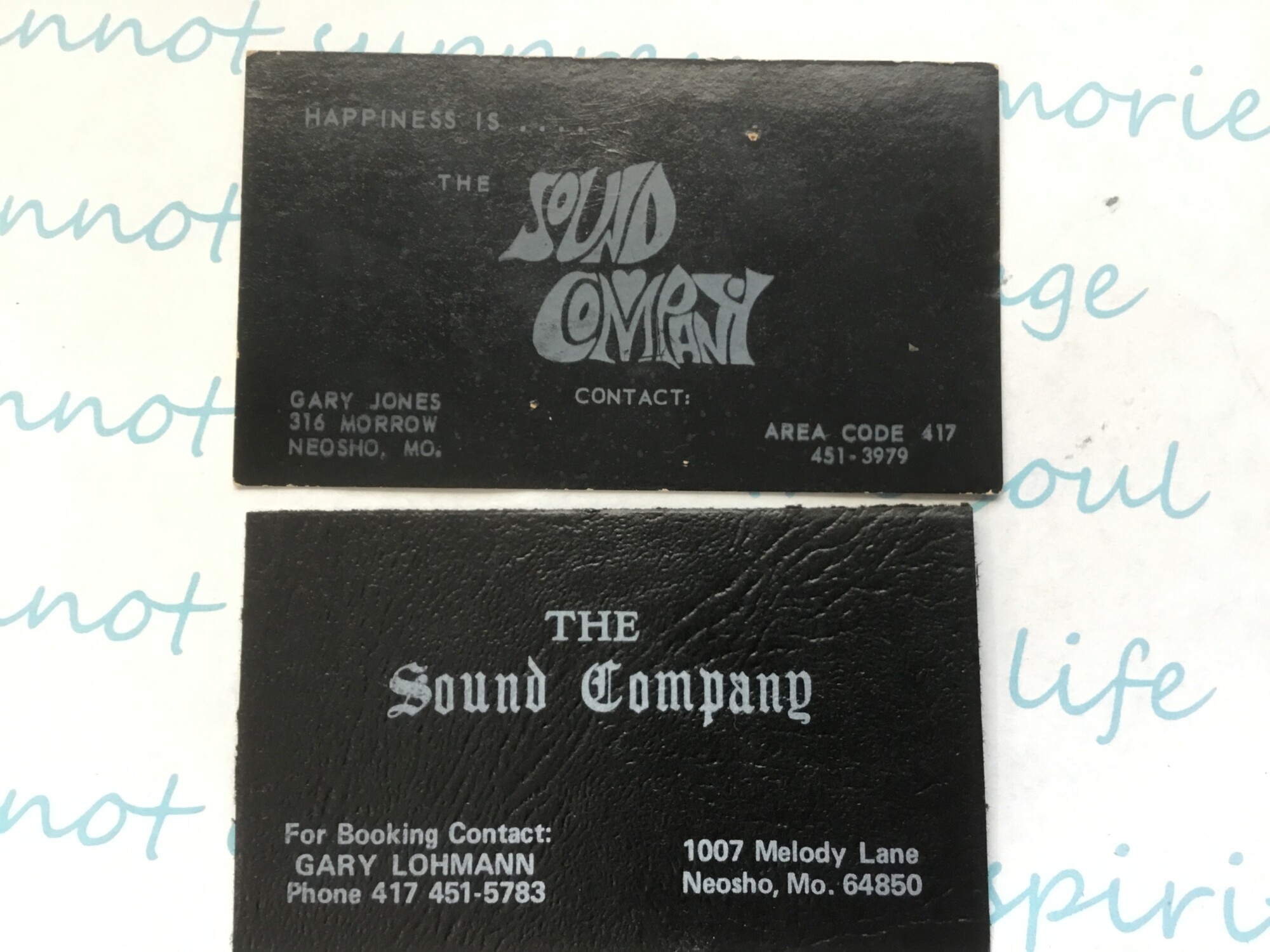
We were regularly performing for High Schools, Colleges and Clubs in the Four States. But here are some more memorable gigs: Opened for Bulldog at the Shrine Mosque in Springfield. Bulldog which was a continuation of the Young Rascals including their original drummer and guitarist. We did a couple of outdoor festivals, but I can’t recall the names of them. We had a disappointing gig when we were on the bill with Brownsville Station to open for Foghat in 1973 but Foghat’s equipment truck broke down, so they had to cancel that show. These were our early years while still living in Missouri.
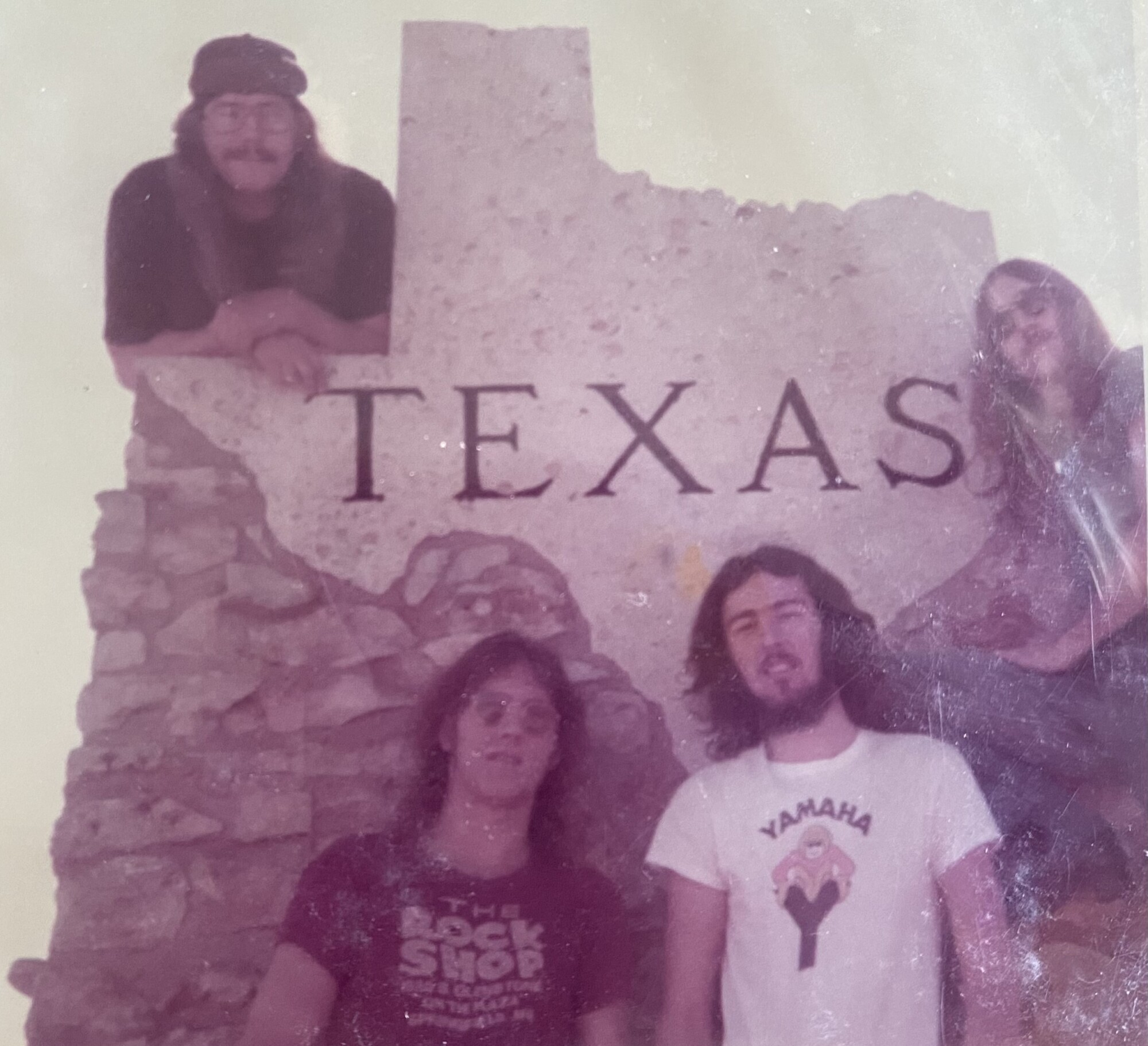
Did you have a certain space where you jammed or just hangout and played music?
Not really from Rick’s house we were fortunate to have access to use Gary’s father’s company Lohmann Mfg. in Neosho. It was perfect because of the large room, and it had a big roll-up door so we could load and unload right at the specific space where we would set up our equipment. We didn’t have to worry about disturbing nearby neighbors because it was downtown right off the square! We rehearsed there until the move to California in February of 1974. Chuck converted the garage into a soundproof room that we could play in anytime of the day or night! It was super cool and convenient, and we even did high school auditions in that room! After we moved out of the Manhattan Beach home, we rented a house in Torrance and rehearsed in that garage I believe from 1978 on.
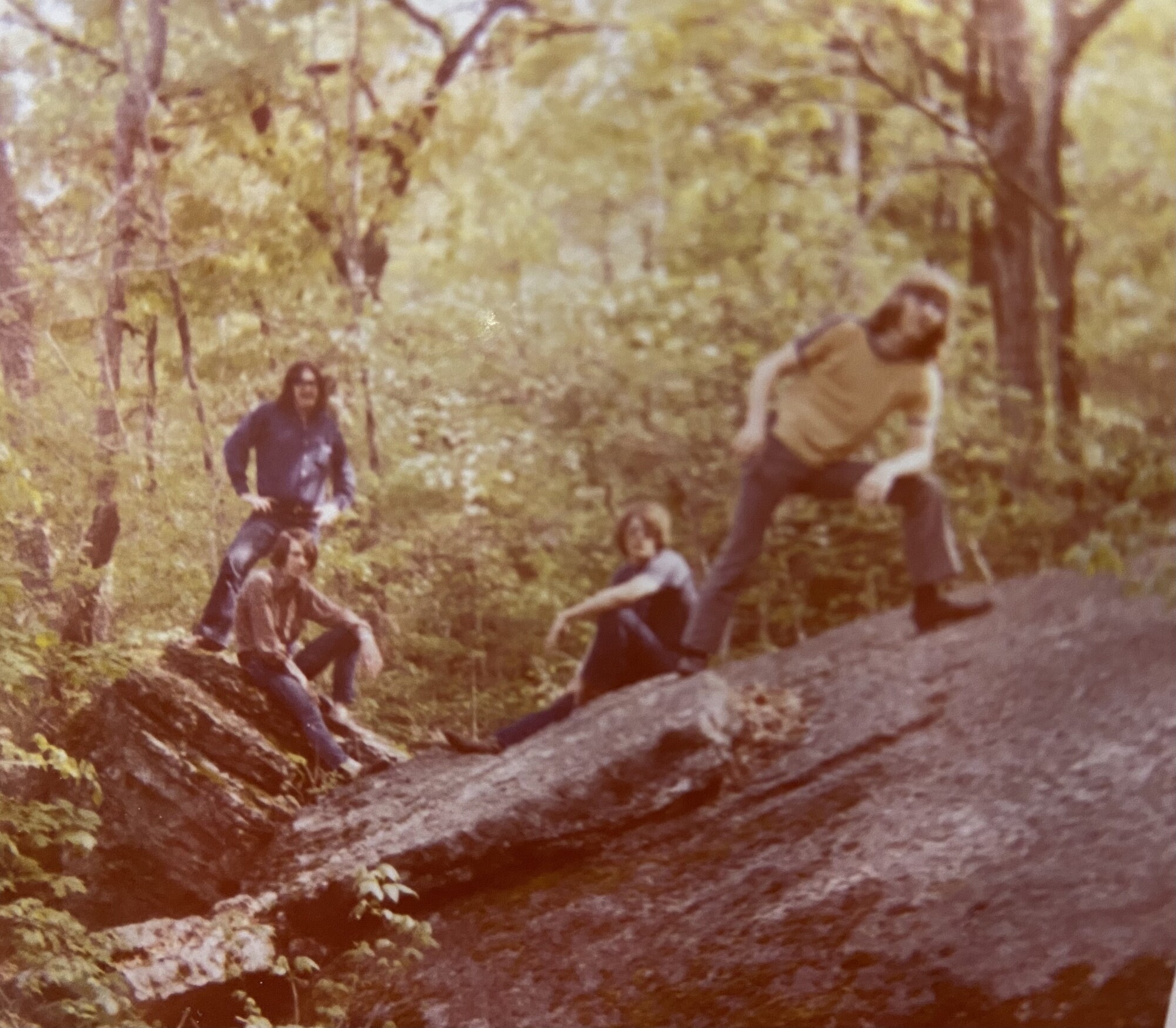
“There were only five copies of the Acetate tracks made”
It’s extremely exciting to hear that there’s an unreleased 6-track acetate. Please tell us about the material on it? Where was it recorded?
During our first fifteen months as a band, we did write some original songs that we would add into our set list of cover tunes at our gigs. Keep in mind everyone was basically still in high school except me during that time. In the summer of 1970, I had completed my Freshman year in college and would typically drive back to Tulsa and stay at my parents’ home about three or four days before driving back to Neosho to play our weekend gigs. Usually, I spent the night at Gary’s house but sometimes stayed at Randy’s too. I distinctly recall writing lyrics to some of the songs we recorded on the Damon Acetate.
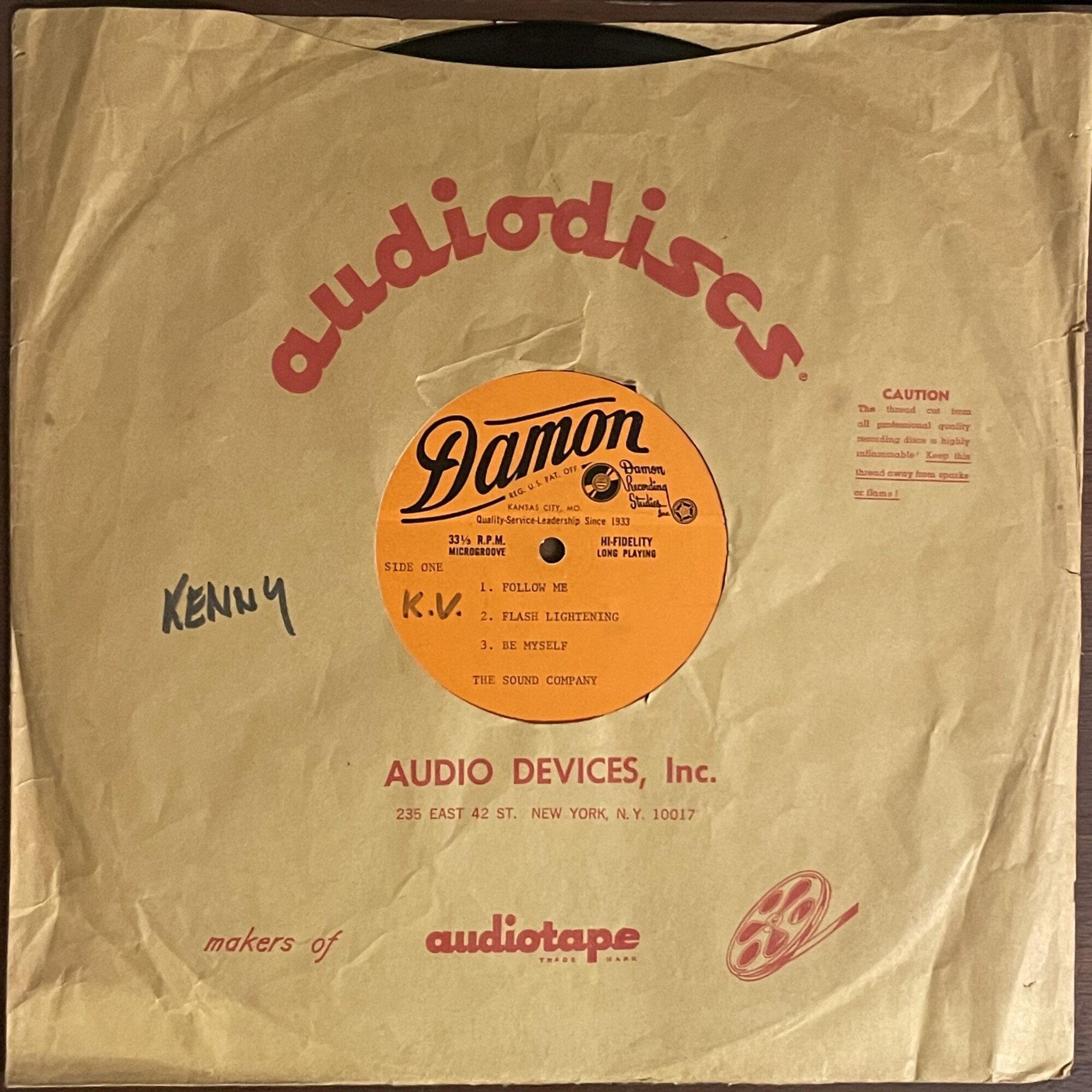
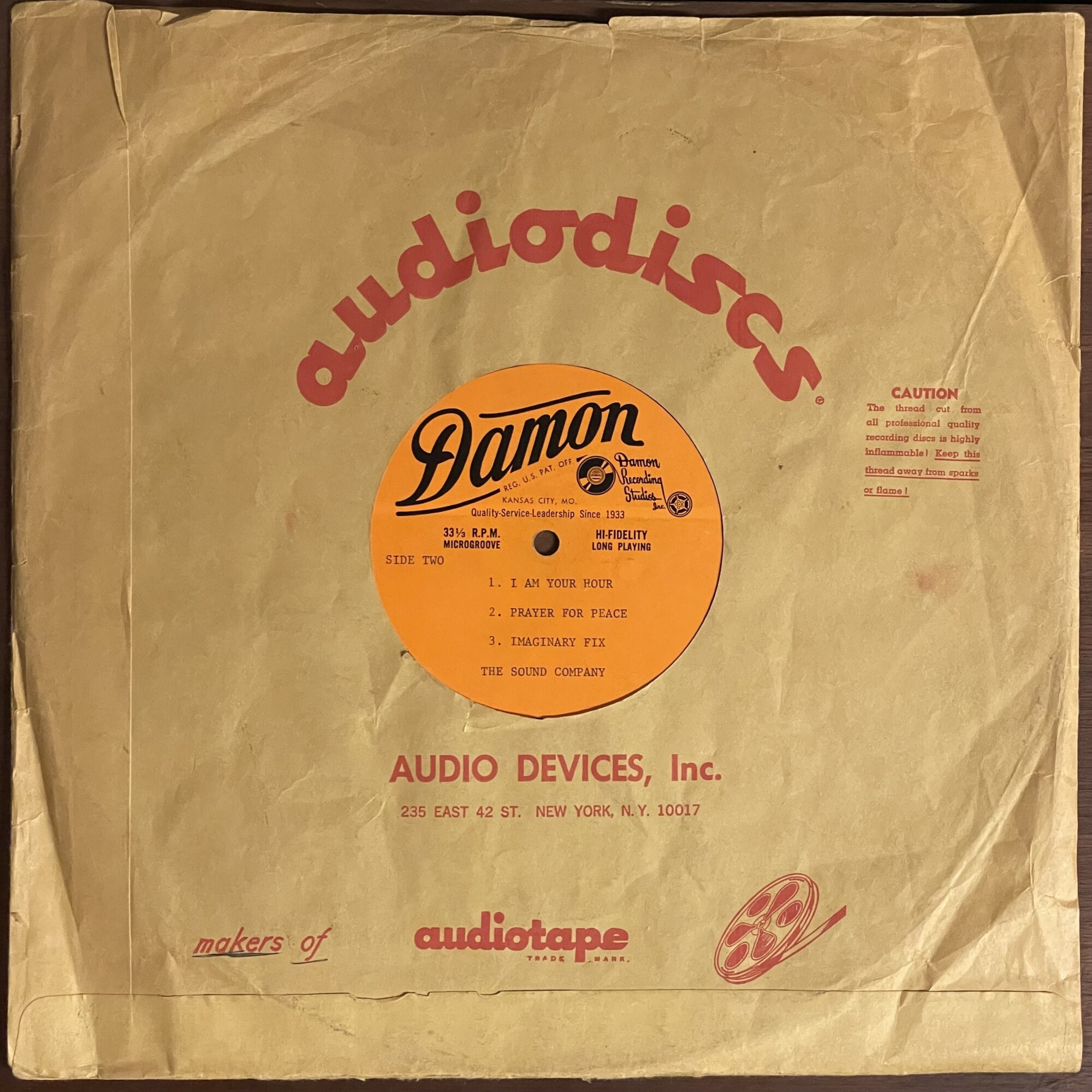
I’m sure Gary also contributed to these lyrics, but I named the tune and wrote ‘Imaginary Fix,’ ‘Be Myself’ and ‘Prayer for Peace.’ I believe Randy did ‘Follow Me’ and the music to ‘I Am Your Hour’ but I think I helped with the lyrics and naming ‘I Am Your Hour’. The song ‘Flash Lightning’ I think was a group effort. So, in early 1970 we drove to Kansas City to record our first original songs in a professional studio! Damon Recording studio was the studio Gary’s father had done some advertising recordings for his duck call business. I remember setting up in a large room that had the Control Room on a second level looking down at the band. The engineer put mobile sound baffle panels around my Rogers kit and did some similar sound wall separations around the other guys’ amps. This I’m sure was to reduce “instrument bleed” over from what each of us was playing.
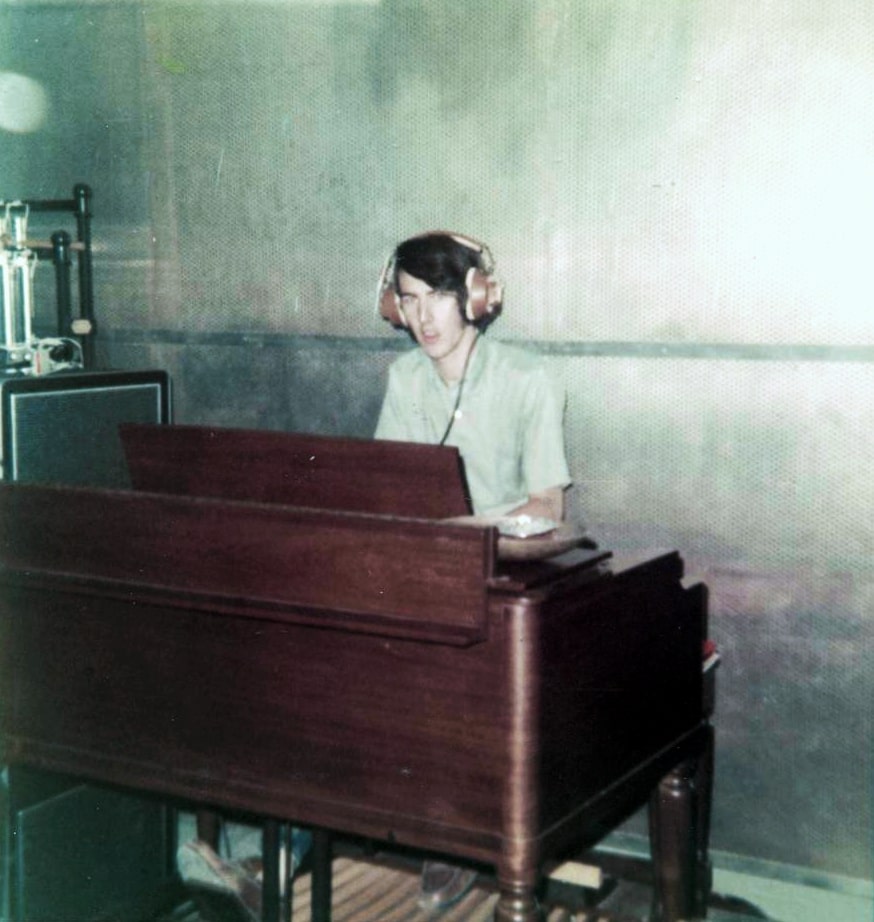
But those were songs we had been playing live many times before, so we just counted down each song and played the music tracks basically like a live performance. I don’t think there were any additional instrumental tracks recorded but there might have been. My drum parts were recorded on all six songs as I played them in the studio.
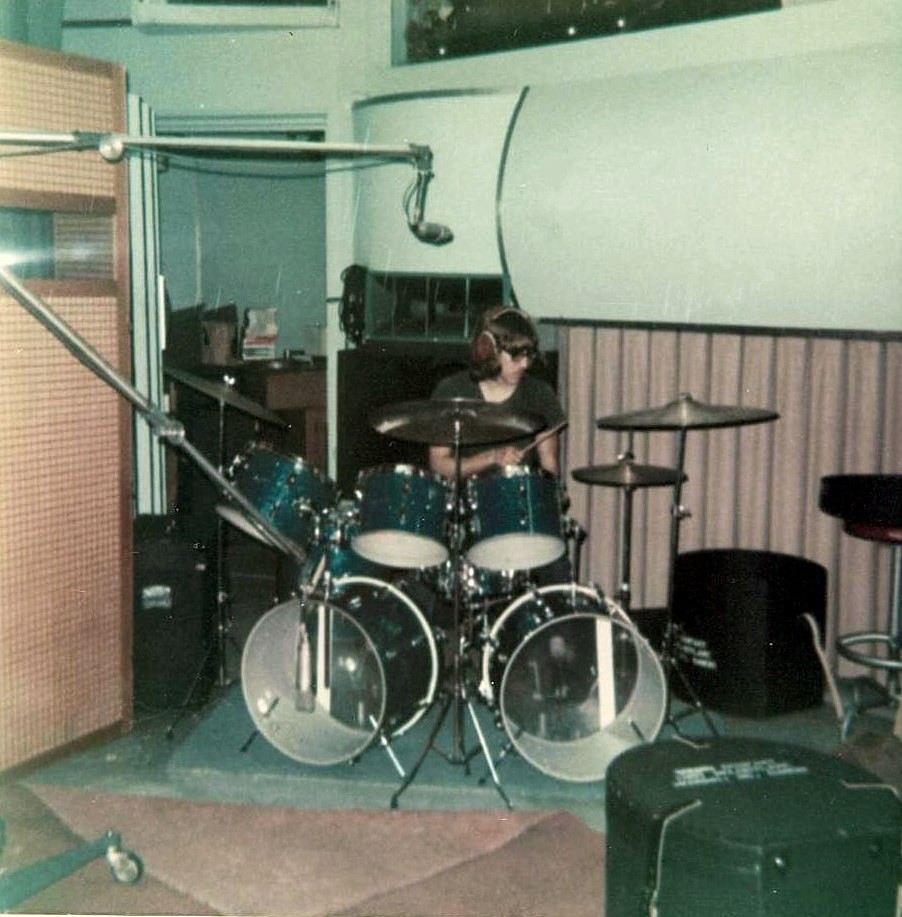
I had just endured the military draft draw as my Class of 1969 had more men drafted via the lottery system than any other. I literally prayed all night before they drew our numbers which would have most assuredly resulted in a trip to the jungles of Vietnam if my birth date was too low. The next day when I saw my number was 272, I was pretty confident that I was safe. The highest they got that year I believe was # 215.I only mention this because that war inspired me to write the lyrics to ‘Prayer for Peace’. ‘Imaginary Fix’ was in reference to the increasing use of drugs, but I was trying to send the message that the high’s from taking drugs were all FAKE and IMAGINARY! Now more than fifty years later, it amazes me how that song really captured the era of heavy psychedelic music from those exciting days in music! The music of both ‘Follow Me’ and ‘Flash Lightning’ I think represent that type of heavy guitar, keyboards and drums as well. There were only five copies of the Acetate tracks made by the studio that I know of. One for each band member and one for our Road Manager, Jerry McConnell. (I think).
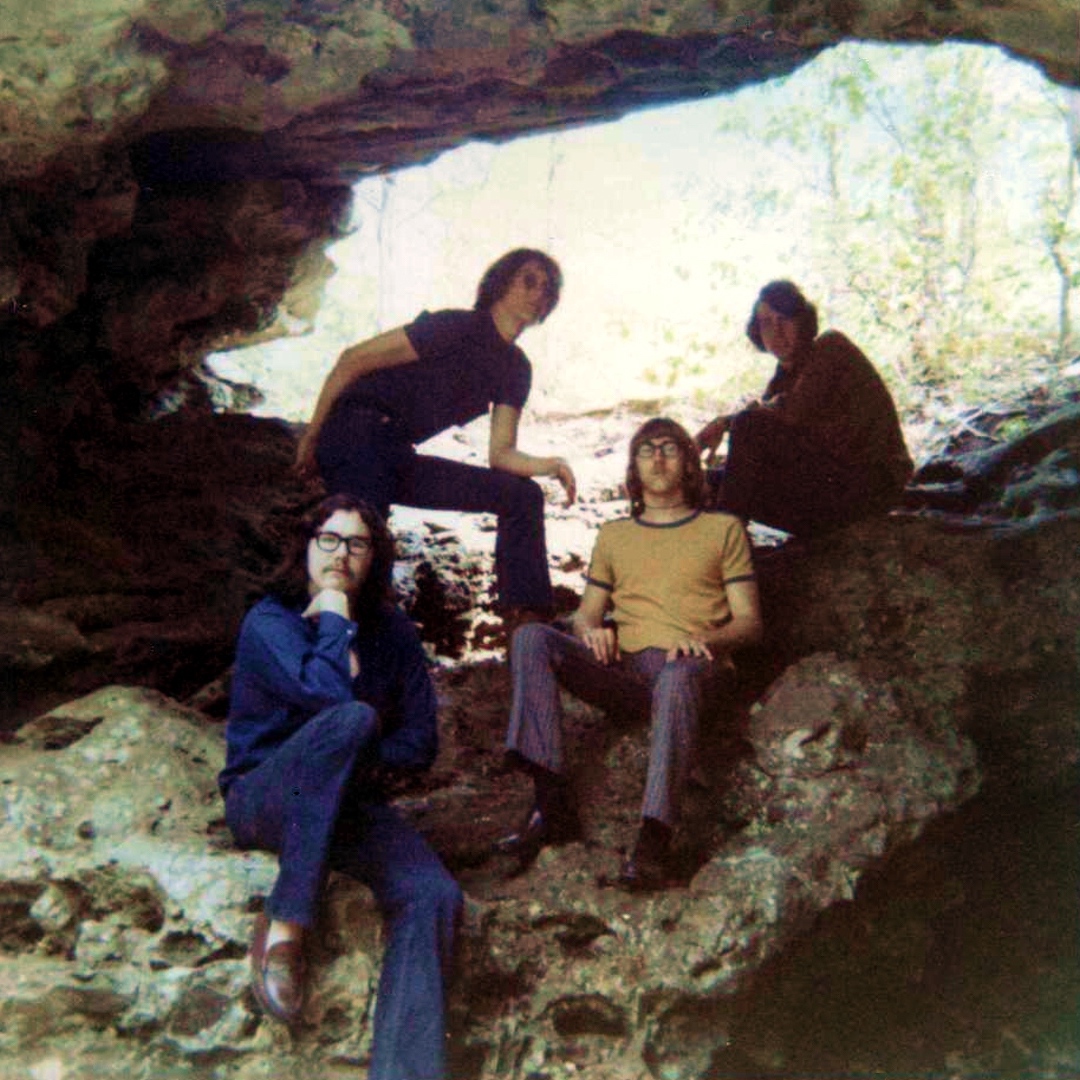
What can you tell us about the Derrick label that released your single? Was this more of a self-release / promotion release to send it to radio stations and to labels? How many copies did you press?
Two points to make here: First, people liked our original songs but in those days you either had to have a vinyl record or 8 Track tape of your music. Secondly, Randy had just written ‘Truman’s Daughter’ so we decided to record a vinyl 45 rpm record with ‘Truman’s Daughter’ and ‘I Am Your Hour’.
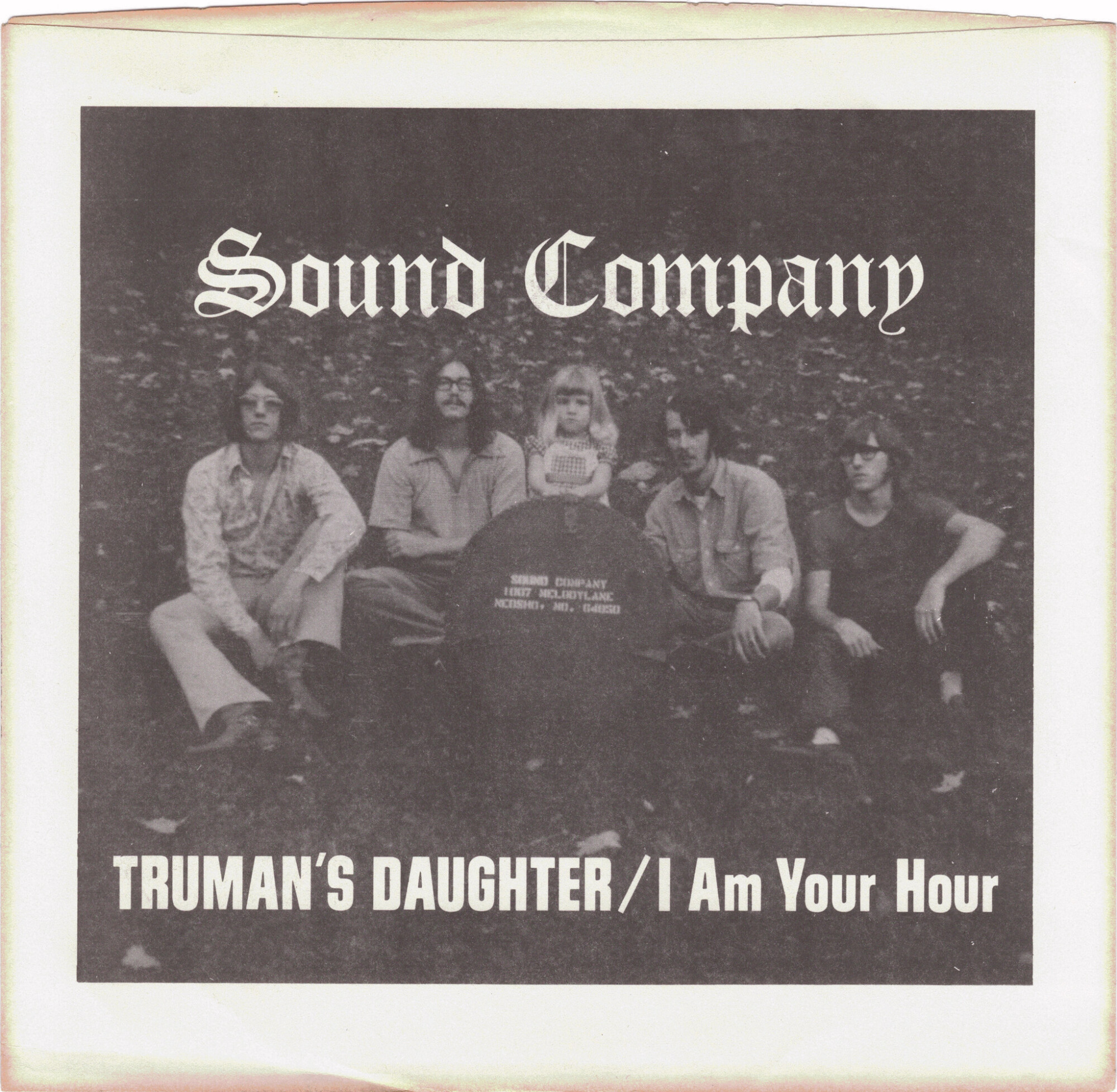
Derrick Studios in Tulsa, Ok., was the closest studio we could find that was budget friendly and a decent quality business that included a photo jacket for our record. I’m only guessing at this point; I think we had maybe 300 copies made but it could have been more than that. Yes, we did take the record to a few local radio stations, and it was so cool to hear some stations play our song on the radio when driving to gigs!
What do you recall from writing, recording and producing ‘Truman’s Daughter’ / ‘I Am Your Hour’?
Once again, we had already been playing ‘I Am Your Hour’ live and recorded it at Damon Studio. ‘Truman’s Daughter’ was a very new song, so it was a bit rougher for me. I had just recently added my second bass drum and was obviously trying to integrate my very raw double bass playing into the song. It was quite sloppy, and we were on a tight budget, so it is what it is. It was so very long ago but I’m pretty sure we just played the basic music tracks first, then did the vocals after that. Both of the Damon and Derrick recordings just had a studio engineer that mic’d all the gear up, ran the settings on the board while we played and then did a quick mix. Really not what you would consider “producing” going on with those recordings.
What gear did you have in the studio? What effects, pedals et cetera did you use?
Rick used his Hammond M3 organ and 147 Leslie.
Gary played his red Gibson (ES-335) guitar through a Fender Showman amp. His pedal effect of choice was a Fuzz Box.
Randy used his Fender Precision bass guitar and Fender Bassman amp.
I played my blue sparkle Rogers Holiday drums, DynaSonic snare drum, Ludwig Speed King pedals and all Zildjian cymbals. On the ‘Trapped Live’ album I was playing my TAMA double bass ImperialStar 8 piece kit.
Once we arrived in California the fast exposure, we gained with Don Podolor’s American Entertainment agency brought in more money, so we expanded our stage show. First of all, we custom built a drum riser for my kit. After we played a few gigs with another Southern California band called Wolfgang, we made a custom Mizzouri Foxx sign that had running lights inside it. Two members of Wolfgang, Steve Plunkett and Randy Rand ended up in the band Autograph that had the hit song ‘Turn Up The Radio’. We also borrowed their home made design to use dry ice in boiling water to blow white smoke all over the stage on our closing song. But the coolest thing we got from Wolfgang was the design and use of Flash Pods! Basically, we screwed pipe flanges on a two by four square wood block. Then you screw a six inch pipe on the flange. There would also be two screws coming up through the bottom of the wood block and the screws were fixed to an extension cord that could be run and connected to a control box with switches. Then we poured a carefully measured amount of gunpowder inside the pipes and a thin copper wire wrapped around each of the two screws. When a crew member hit the switches on the control box at the prescribed time in the song it created a very exciting vertical fountain of fire because the power to the terminal connected wires, caused a short spark that ignited the gunpowder! We didn’t even have a special license to do that dangerous special effect, but the crowds loved it!
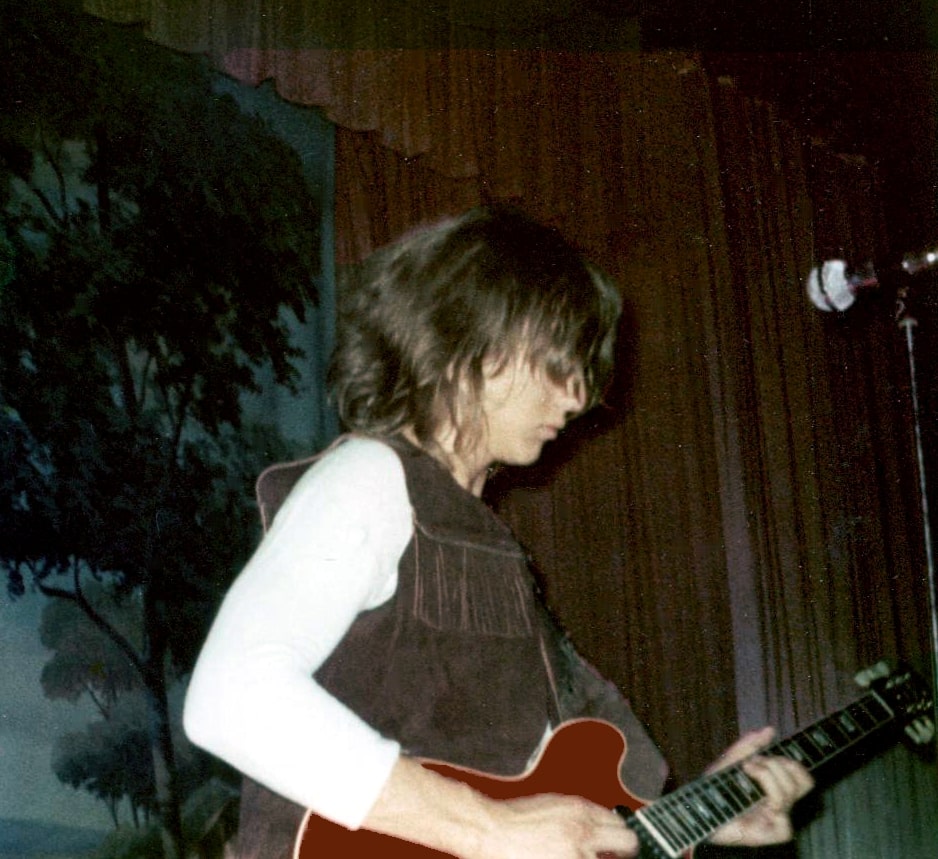
What was the reason for not releasing it at the time? Lack of finances to self-release it or/and lack of interest from labels?
Getting a Major record company to record, release and market a band in the late 60’s/ early 70’s (as a rule), required bands to get live A&R representatives’ exposure in L.A., Nashville and New York. There were very few bands that landed a deal without exposure where the majority of record companies were in the U.S… We were booked solid so just improving our live performances was our focus, plus we had to wait until Gary graduated from high school in 1972. Once Chuck Stillman discovered us playing at Bojangles Club in Kansas City, Mo., and at Godfather’s Club in Topeka, Kansas things rapidly progressed as he helped us relocate to California.
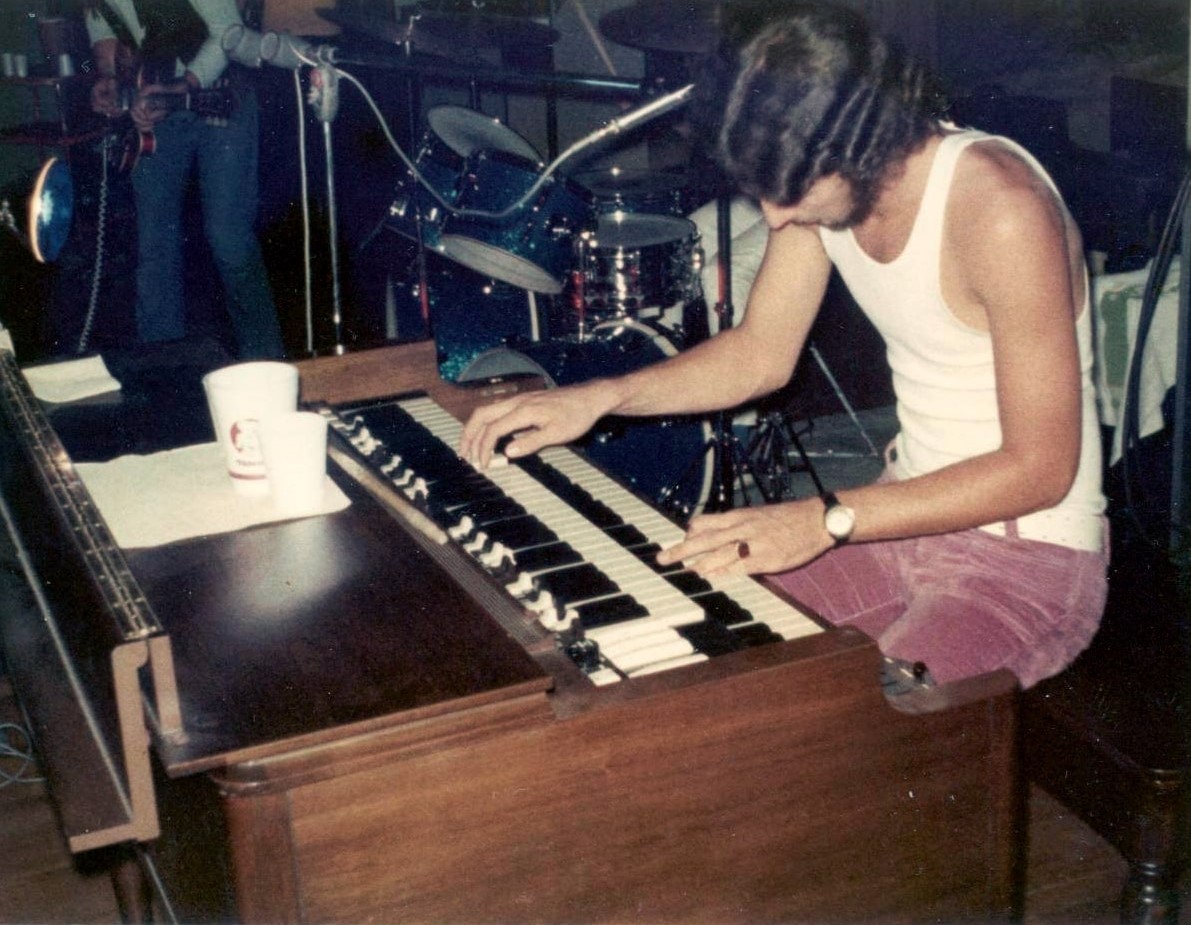
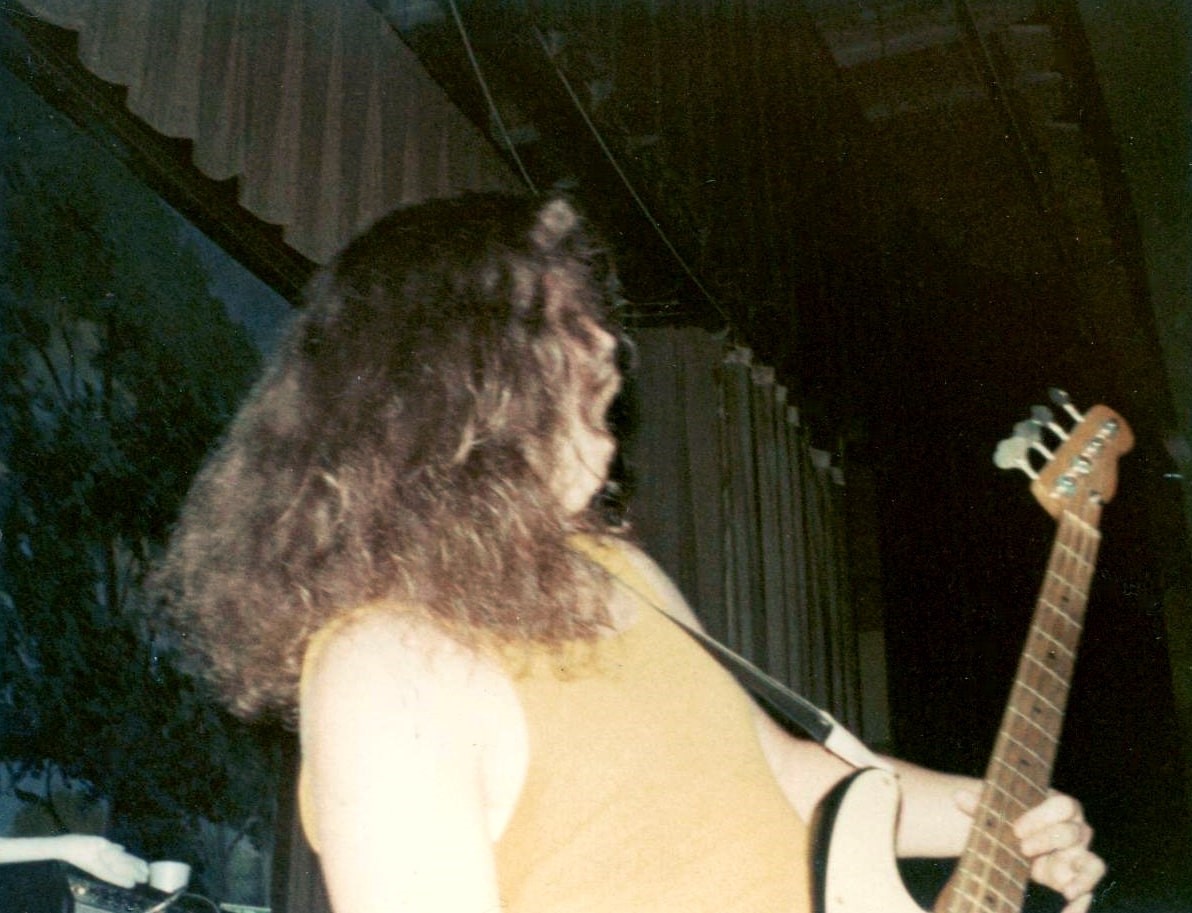
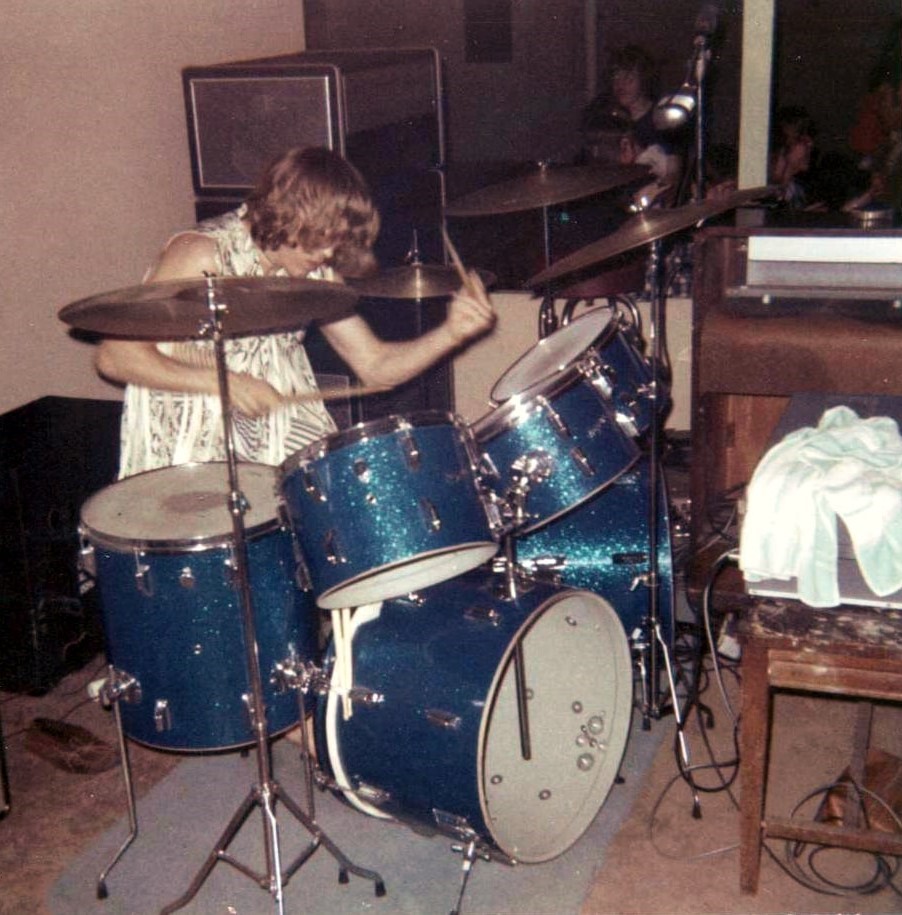
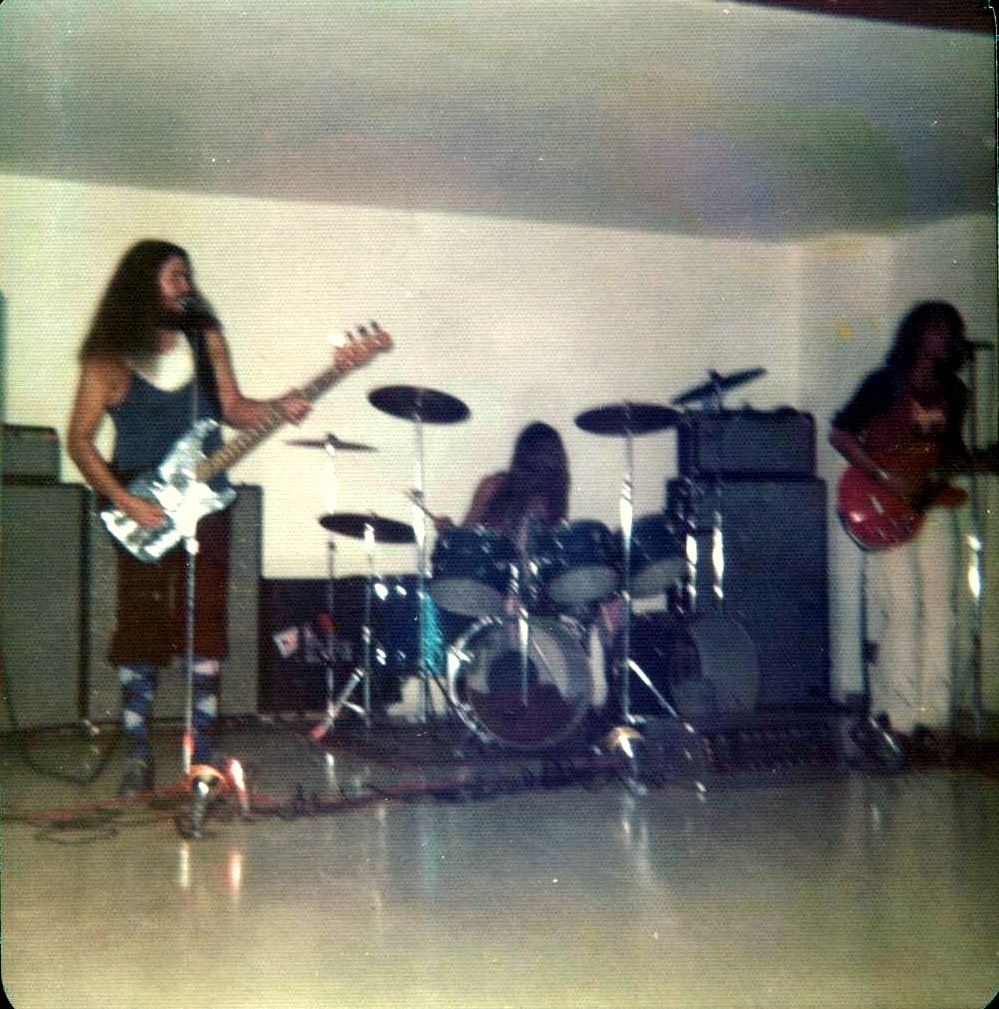
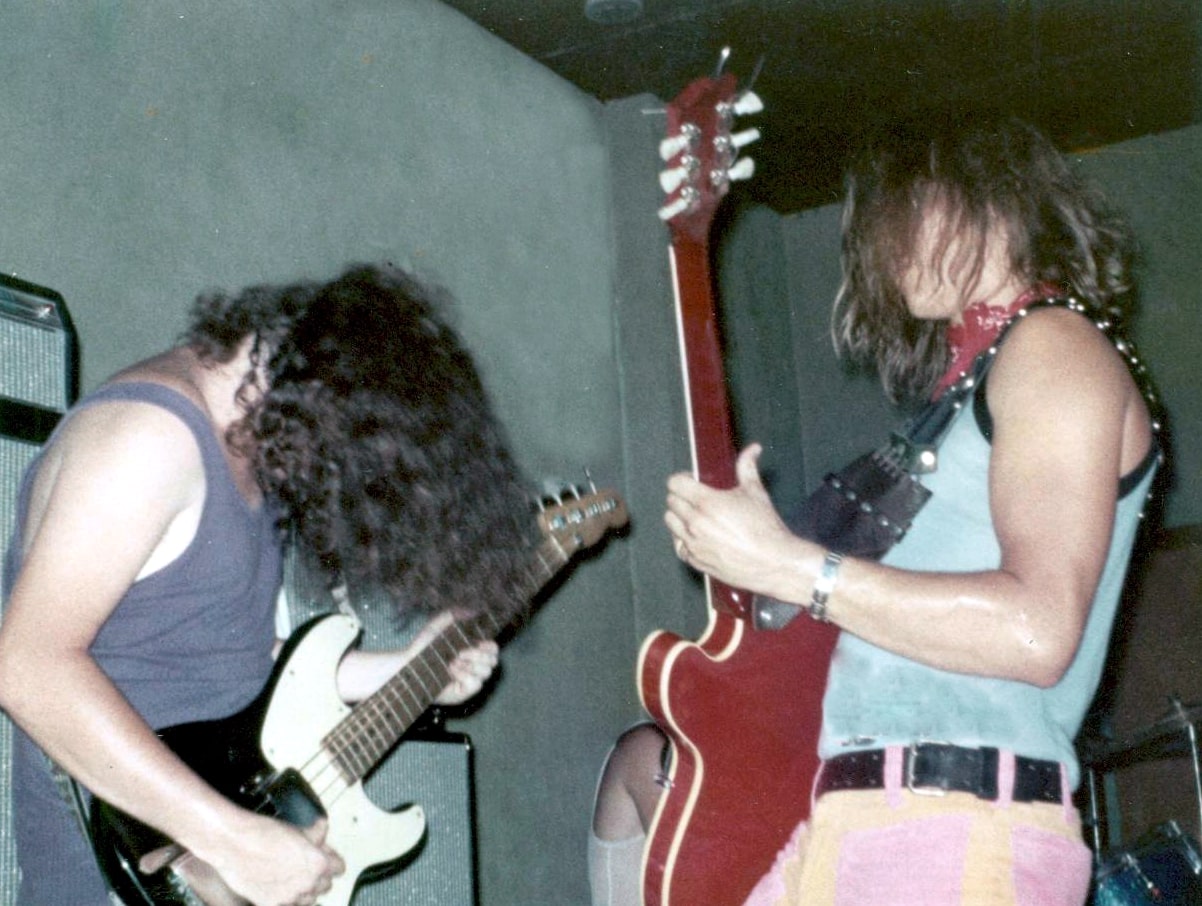
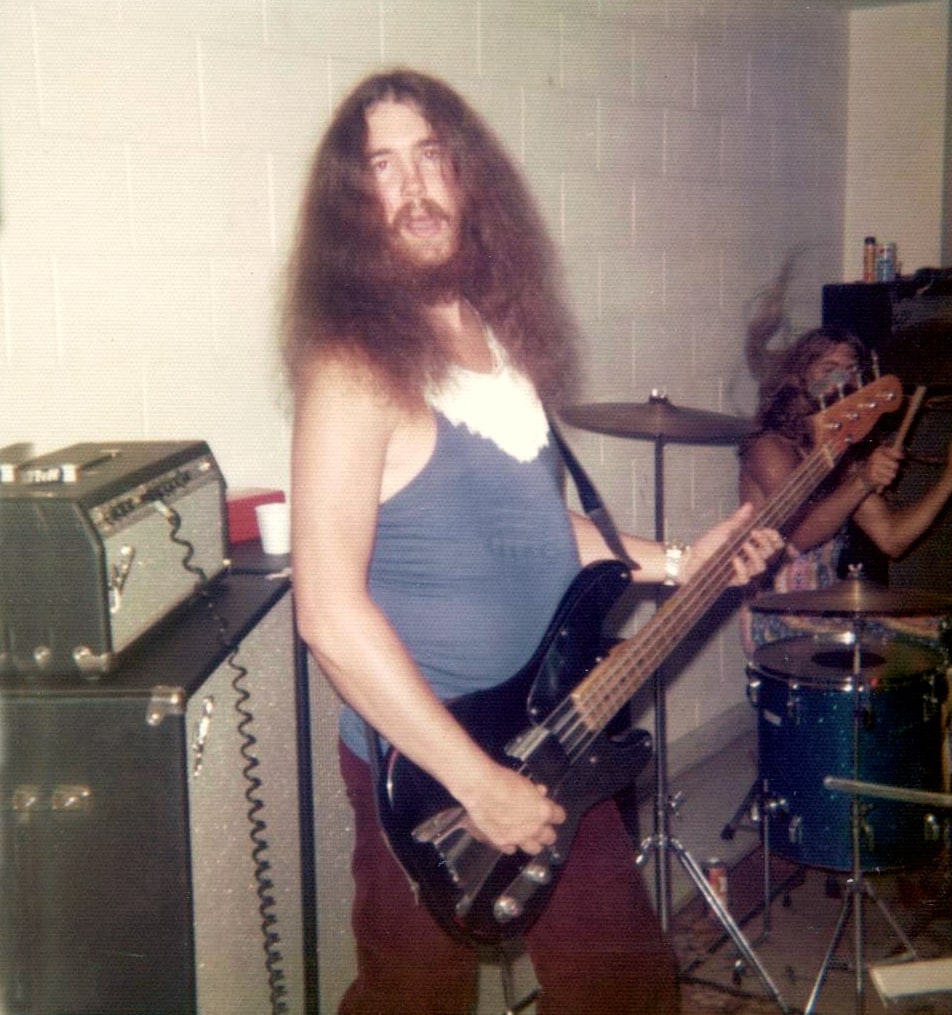
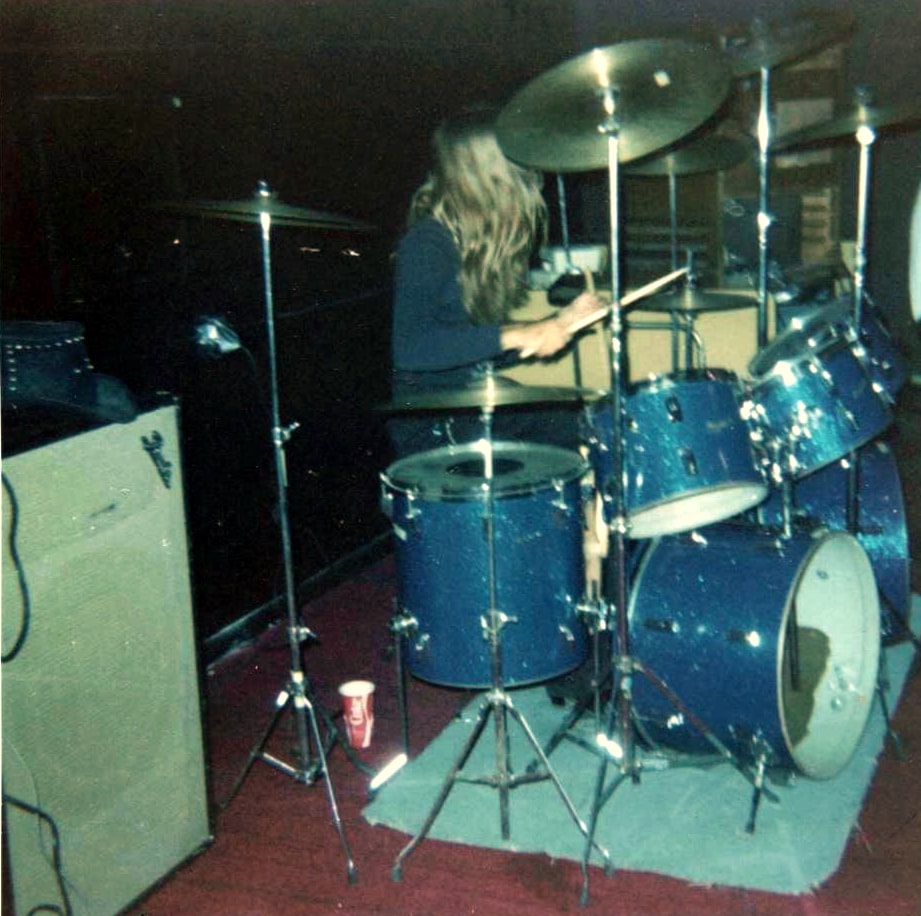
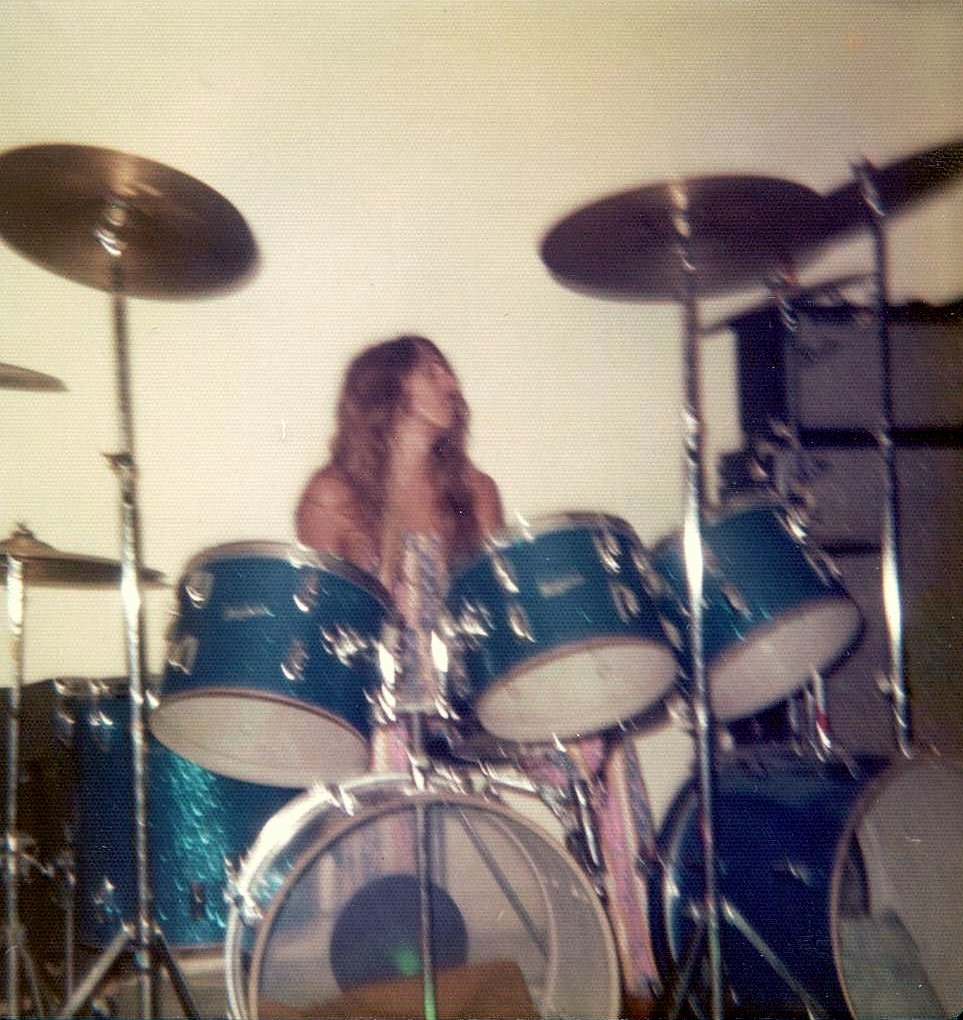
The material consists of three heavy tracks and three softer tracks… Did you play those tracks live at the time?
Oh, most definitely. We played all six tunes live after we did the Acetate recording. It is a collection of two styles for sure. Three heavy tracks and three that would have been considered maybe “Top Forty” material. I will be a bit anxious to see what happens with ‘Imaginary Fix’ though. For some strange reason it might become popular with today’s young generation. But only time will tell… I would love to hear some of today’s HEAVY bands do their version of the song!

Are you excited about the upcoming reissue? It must feel quite incredible to have music out after all these years. Quite a journey for that acetate, isn’t it?
I would say I’m more “freaked out” than anything else. The fact that people find our recordings relevant today, FIFTY TWO years after we did the recordings is kind of difficult to wrap my mind around. Although, I do think the sounds and lyrics clearly define and truly represent the styles of music that was coming out back in those days, so for that reason it is exciting as well! I might add that in 1969 and 1970 we had two college friends of mine do our lighting. They named themselves the Light Brigade which was operated by Mike Deaton and Russ Walker. In addition to our stage lighting, they did the very popular effect I first saw at an Iron Butterfly concert that utilized an overhead projector. They would put cooking oil in a pie plate then add various food colorings in the oil that projected an awesome psychedelic effect that projected on a large white sheet hanging on the wall behind the band! That was considered a “state of the art effect” in those days.
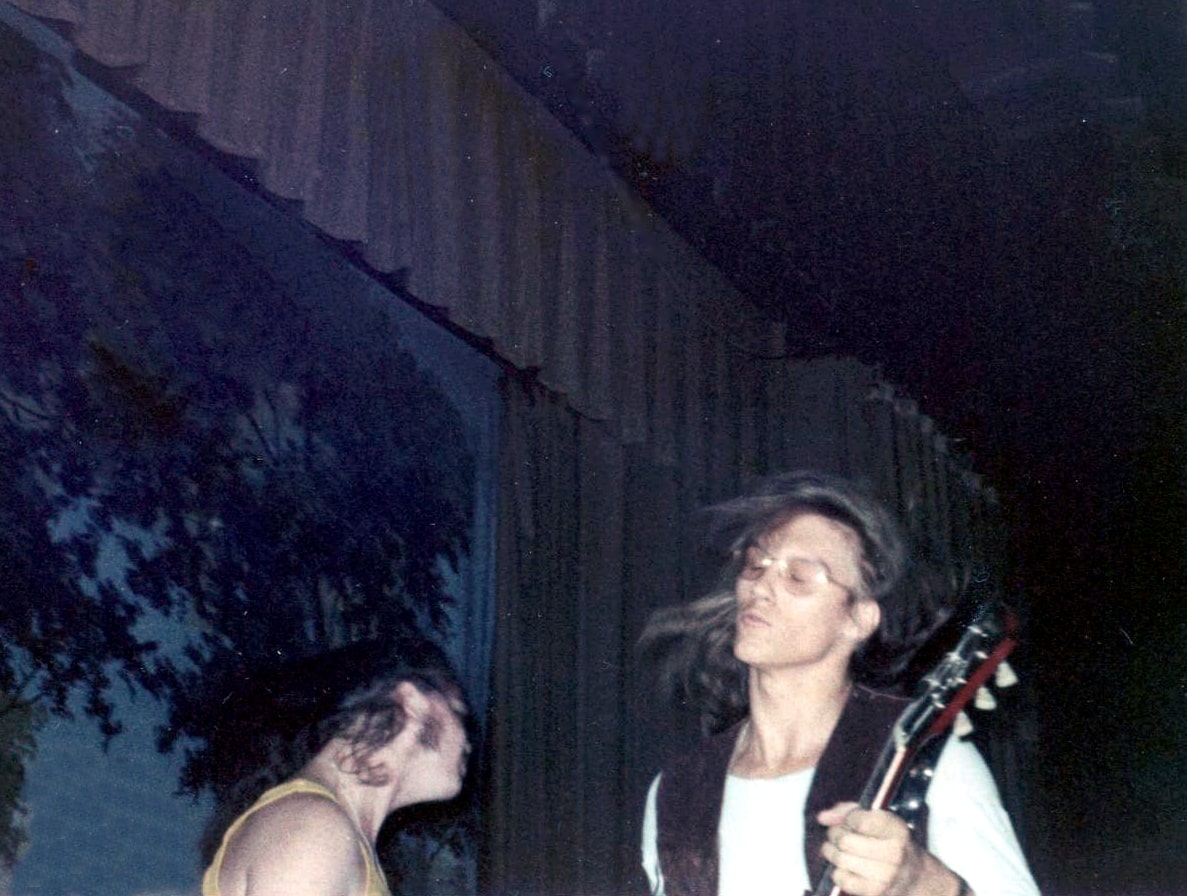
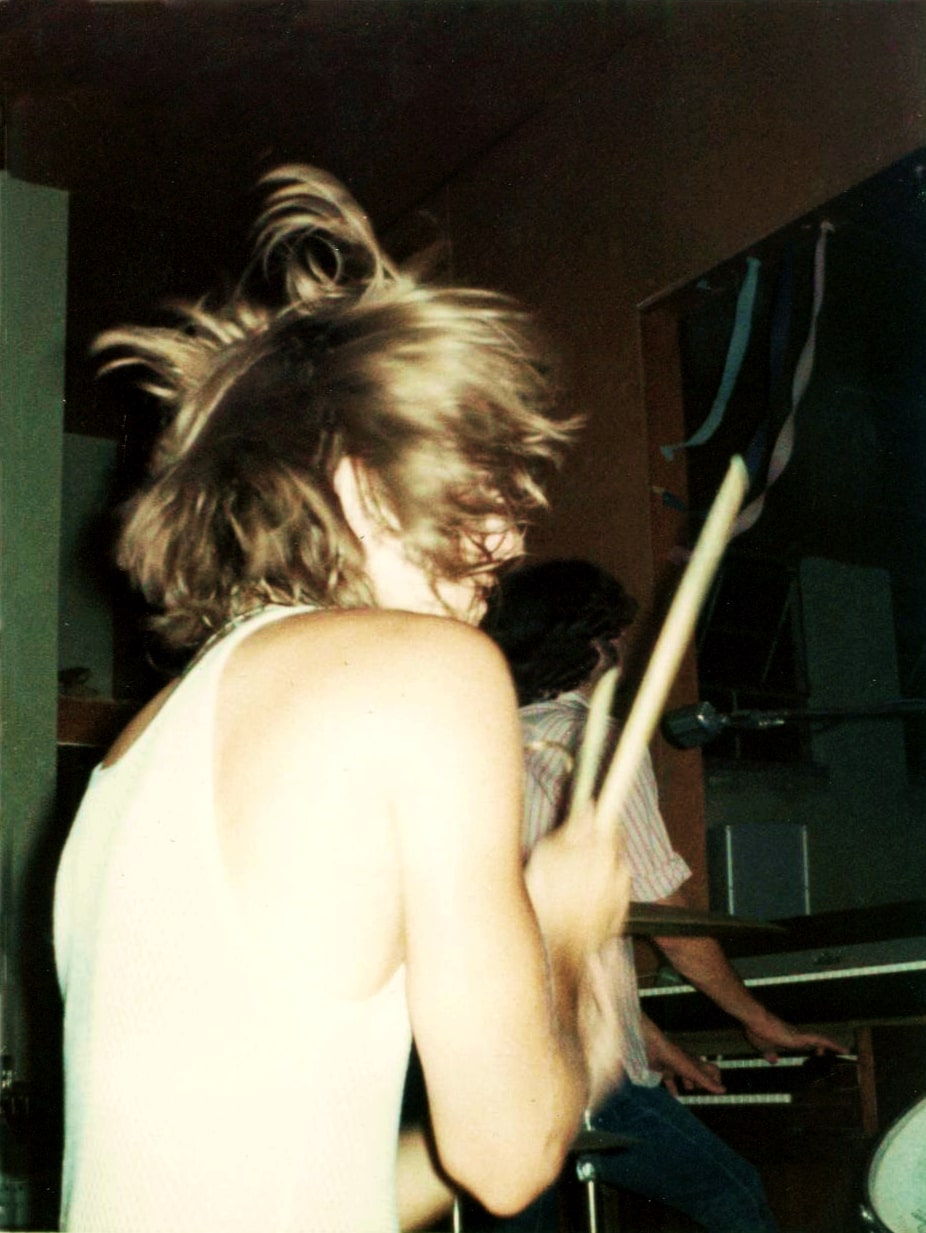
How does the Sound Company story evolve until you move to Manhattan Beach, California in 1974?
I think I’ve covered most of it already but the major game changer for Sound Company was meeting Chuck Stillman and the support he invested into the band after that! I would bet our transition to California was about as good as any other band who moved to L.A. from other states in the U.S.! I mean how many can say they lived in a three-bedroom home in the “Tree Section” of Manhattan Beach that also had a soundproof rehearsal studio and jacuzzi??? We were living large and never experienced the dire straits hardships like so many other band stories you hear about!
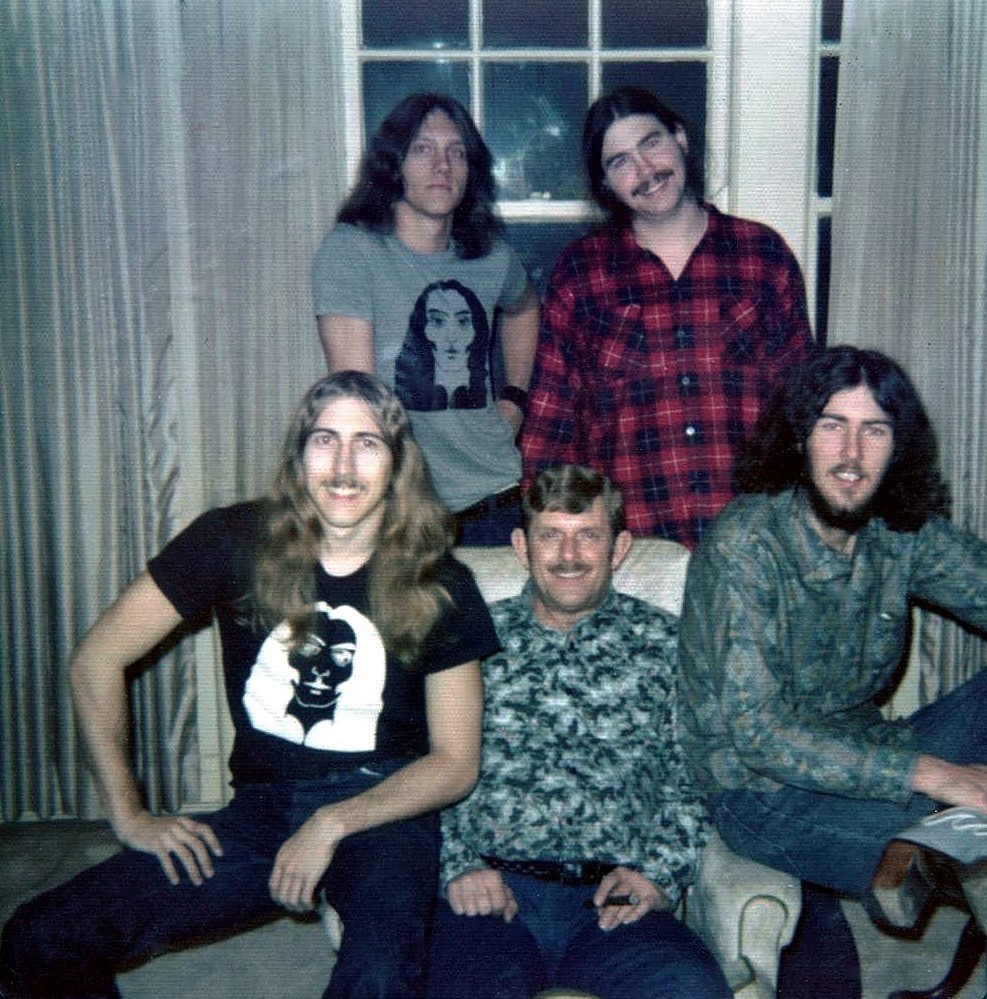
What led to the name change? Any particular reason to choose the name “Mizzouri Foxx?”
Our first Southern California Booking Agent contact was Don Podolor, (Richie Podolor’s brother). In one of our early group meetings with Don, he said we needed to change the name of the band because Sound Company didn’t have anything “special ” going for it. We immediately went back to our Fox Hills Apartment in Culver City and had a long brainstorming session and wrote down a long list of possible band names. It was Randy that said how about Missouri Fox? Then I added the idea that we spell it with two “z’s” and two “x’s”. From that moment on, we were officially Mizzouri Foxx!
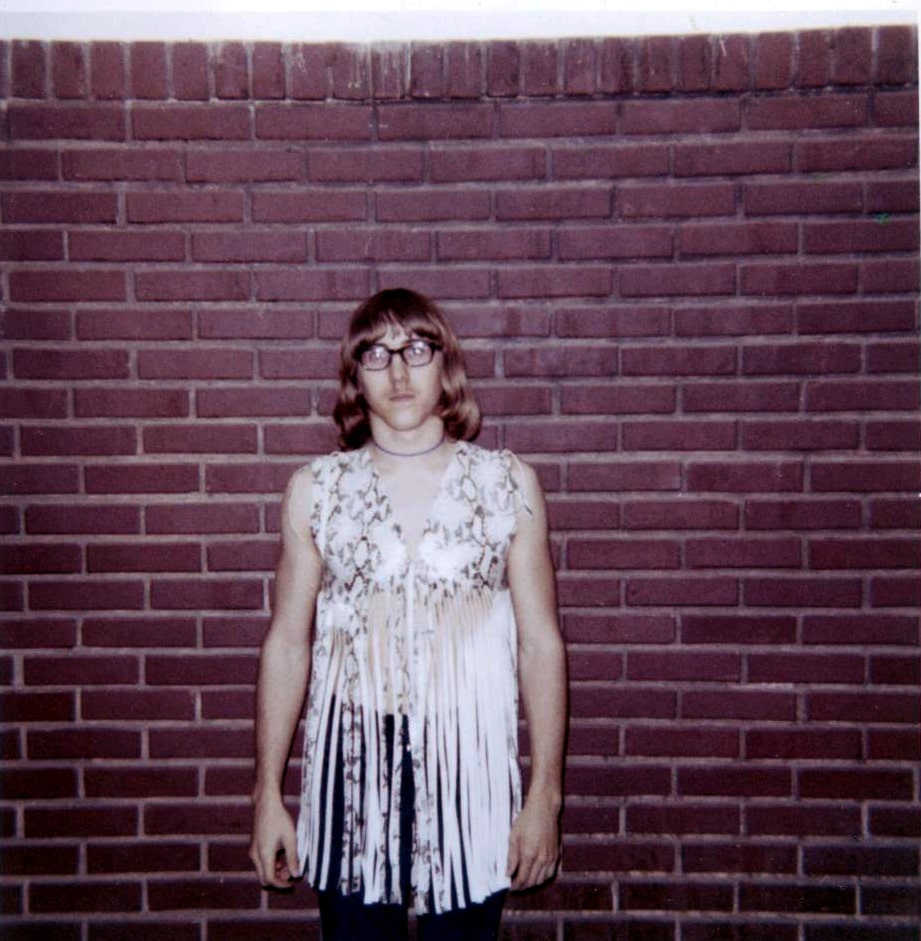
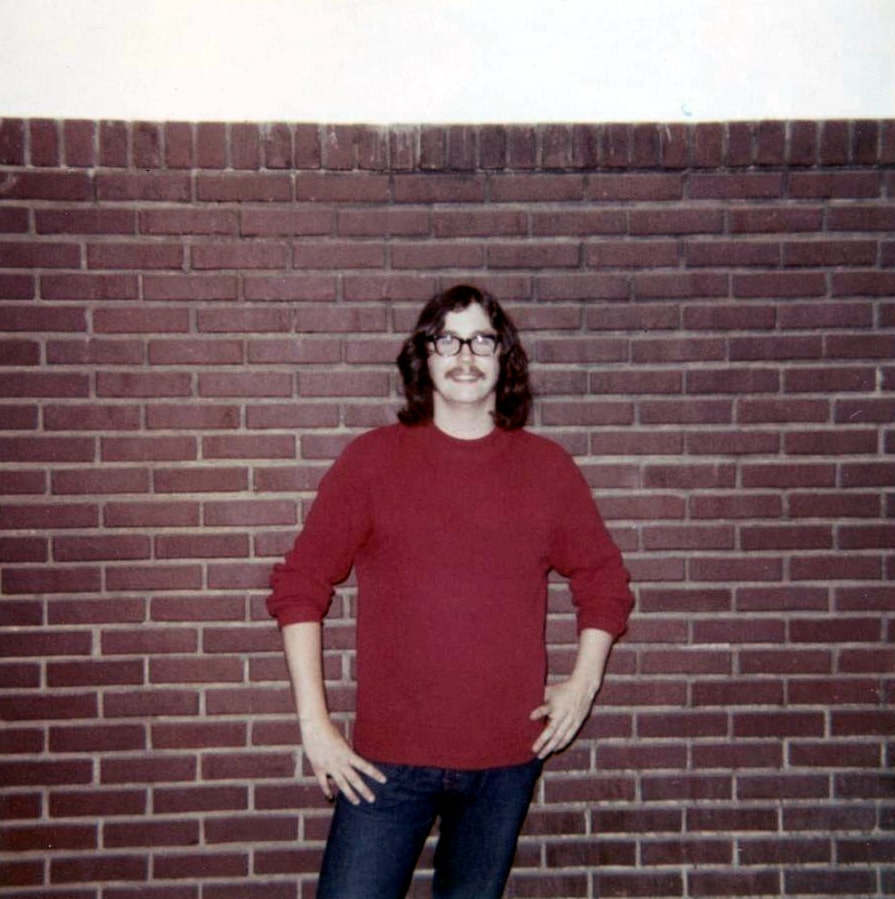
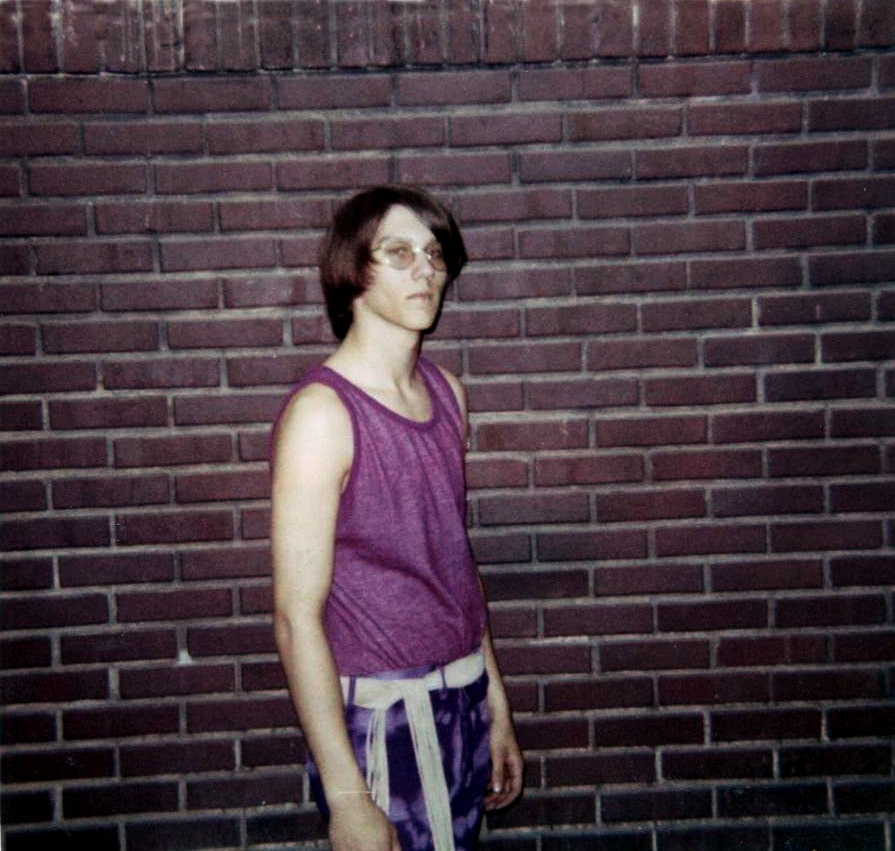
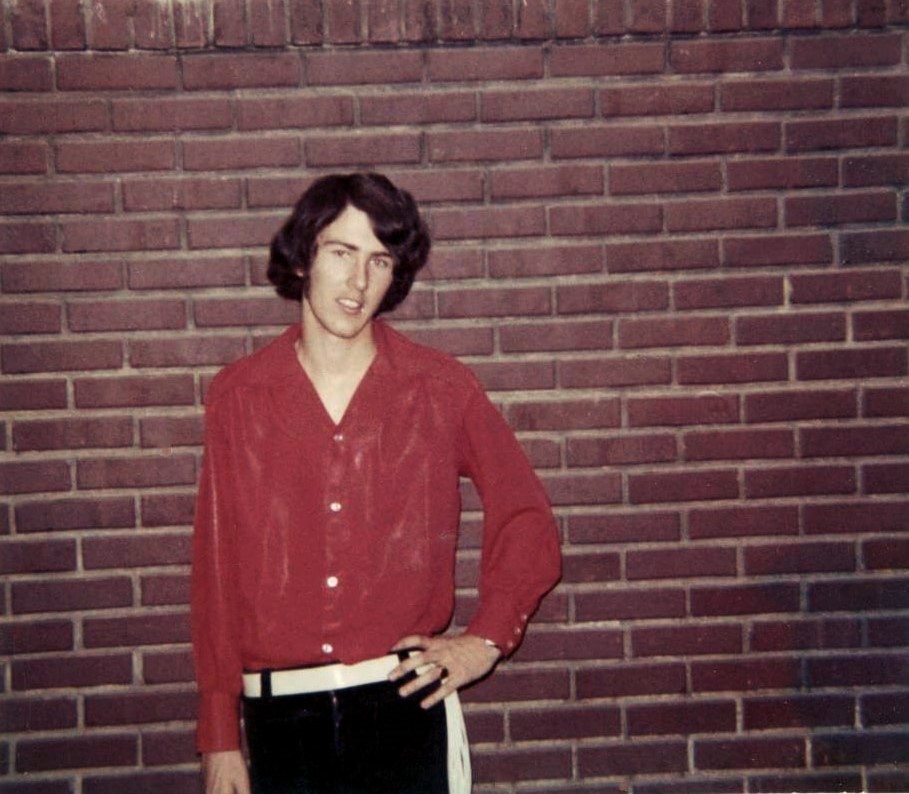
Tell us about your time in California? What was the scene like in the 70s for a band like Mizzouri Foxx?
Above everything else, the move to California was a huge “Culture Shock” for all of us! Especially Gary. In fact, he wrote the song ‘Missouri Nights’ because he missed the lifestyle, we all grew up in and hated the mass of humanity in Southern California! He always said that once we landed a record deal and hopefully started making “big money” Gary planned to move back to Southwest Missouri. I wasn’t so sure about that for myself because I liked the weather in Cali a lot! Plus, Randy and I are golfers so even though we were too busy to play golf very often it was cool that we could play year round if we could find the time and money to do so. People have no idea of what our first six months were like out there. From February to June, we lived in Chuck’s one and a half bedroom apartment in Culver City because his three bedroom home in Manhattan Beach was leased out and was up that summer. So, there were six of us in that small Fox Hills apartment. Chuck was traveling quite a bit due to his work with Collins Food / Sizzler Steak House gig. We typically would walk down the street to Ralph’s Supermarket and buy food to make sandwiches with or some soup, can of Vienna sausages and crap like that. However, it was our almost daily drive out to the valley where we practiced that was the true “Culture Shock”! Our friend Glen Buxton who was a guitarist with Alice Cooper used his connections to get us a place to practice in the San Fernando Valley. And that rehearsal room was FREE!
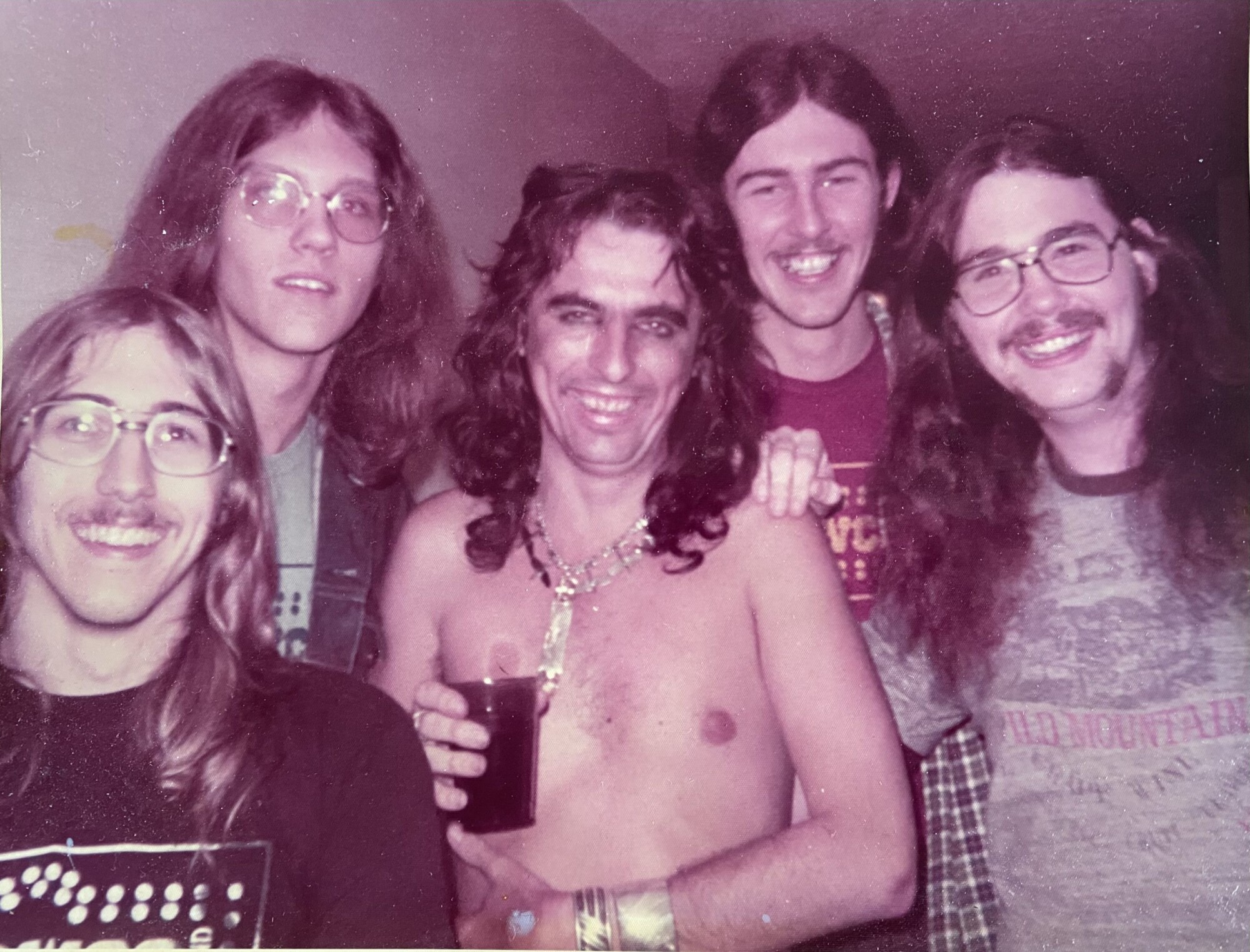
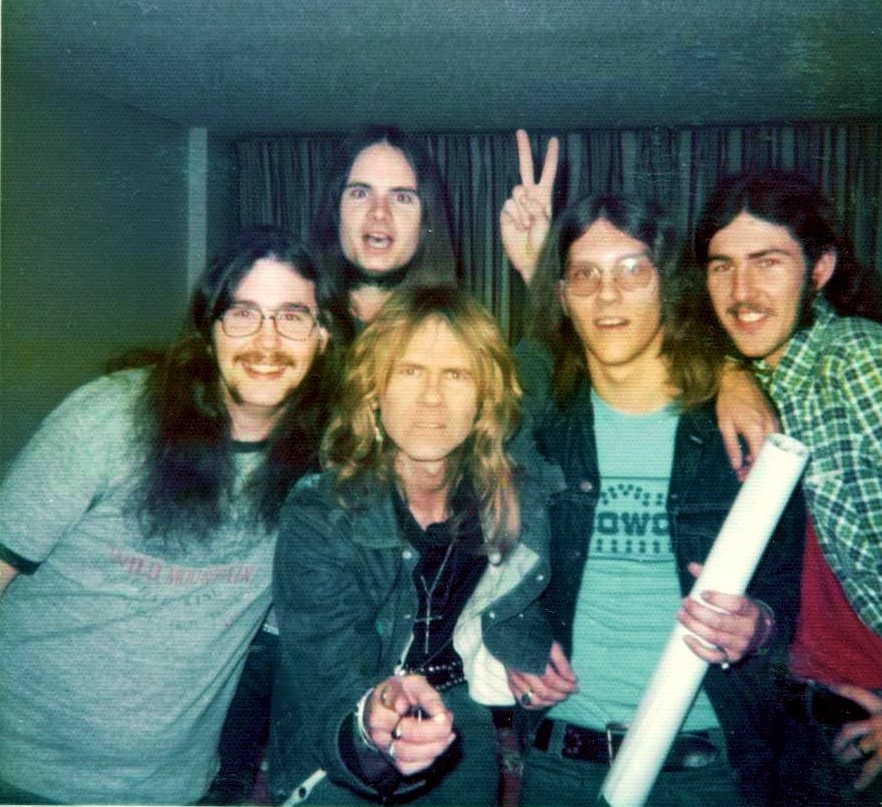
It was also in an Industrial complex right across from Sound City Studios that is famous for one of the most iconic analog recording console boards in rock history. In fact, Fleetwood Mac was in the studio at the same time we were practicing right across the parking lot. It was before Stevie Nicks and Lindsay Buckingham had joined the group. Soon after we stopped practicing there Stevie and Lindsay joined the group, and they did record their hit album ‘Fleetwood Mac’ in that studio which was released in 1975. I remember one time we walked through the studio and saw the infamous analog board and the band’s equipment. Another memory was that we would all pile in our Ford van, five of us, and make that horrendously long, slow drive on the 405 Freeway out to Van Nuys. It was the up close and too personal experience of making the commute in bumper-to-bumper L.A. traffic! But being in the middle of the capital of the record industry sustained us through it all because we knew we were moving on up! A huge advantage for us was the connections we had with Glen and Dennis Albro. It was Dennis who connected us with booking agent Don Podolor who is Richie Podololor’s brother. Don was a “Culture Shock” in how he did his thing! He sat at his desk with two landline phones. It was remarkable to watch him talking to customers one on each phone at the same time. He talked extremely fast almost like he was on speed, but he wasn’t. If people could have watched the man in action, they wouldn’t believe it. Don had a partner Ron Kurtz who managed a popular group called Mag Wheel and the Lugnuts. They were a 50’s/60’s genre group but I think we were on the same bill with them a couple of times. Probably the best thing that happened for us was in the summer of 1974 as soon as we moved into Chuck’s Manhattan Beach home, he had the two car garage converted into a soundproof studio. Homes in that neighborhood (referred to as the tree section) are extremely close together but we could play our music any time and not disturb our neighbors! We also began booking auditions for the band in that studio. The schools would send their student council members to 3008 Maple and listen to us play and then decide if they wanted to book the band. We had a 100% success rate when doing those auditions! That first year was a fantastic experience for me personally because during the day I would go down the street to beautiful Manhattan Beach lay out in the sun, contemplate the magnificent Pacific Ocean and study tiny grains of sand as I knew at that point and time, Mizzouri Foxx was going to climb the ladder of success because everything was obviously falling into place for us, and I just KNEW. It was all meant to be….
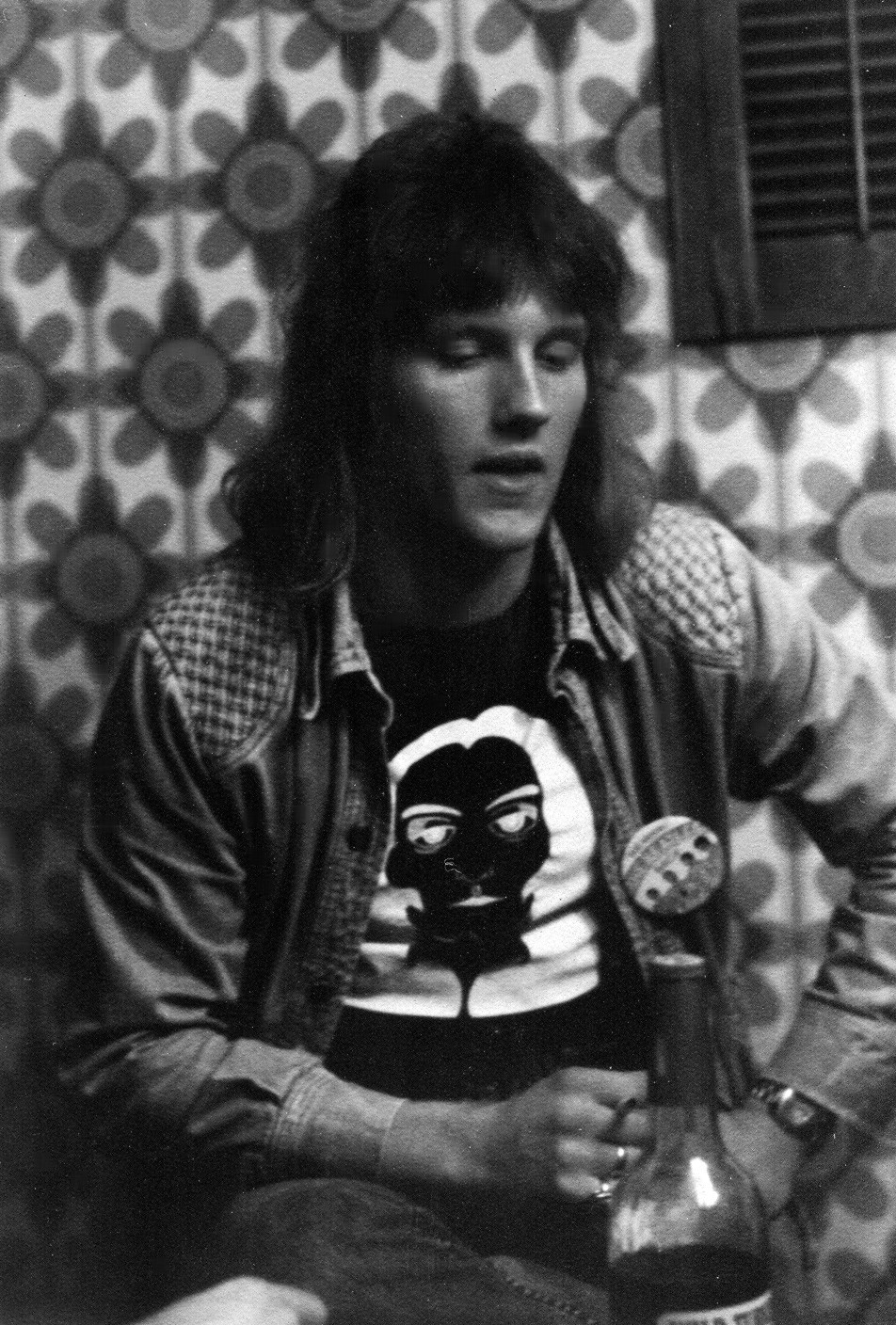
Keith Johnston was the owner of Brothers Studio in Redondo Beach. He was also the engineer/ producer of most of the recordings he made there plus his wife Kim was a singer. Keith had done some recordings with Chaka Khan so his reputation was really solid when he approached us about doing the live album. While he was an independent studio and not associated with a record company it was a collaboration and signed contract between Keith and Mizzouri Foxx that covered the details of that very cool project. As I recall he would provide the equipment, Mobile unit, Brothers Studio and engineering/ production / Mastering time for 50% of the profits. We went in with him 50/50 on the cost to make I think 1,200 vinyl albums. Keith also had an artist do the album jacket artwork, liner notes and front cover. I think we sold the albums for $10 each and frequently after shows we would sit at a table and sign the jackets for fans that purchased an album. We were very popular at the El Toro Marine base in Orange County so that was the venue we chose to record at. Keith had a really nice mobile unit that was parked outside the building, and he ran all the mic cords out to the unit and into the best recordings of the two shows and mixed them into the album Master version. I felt Keith did a wonderful job of capturing our live sound and performances at that time in our career!
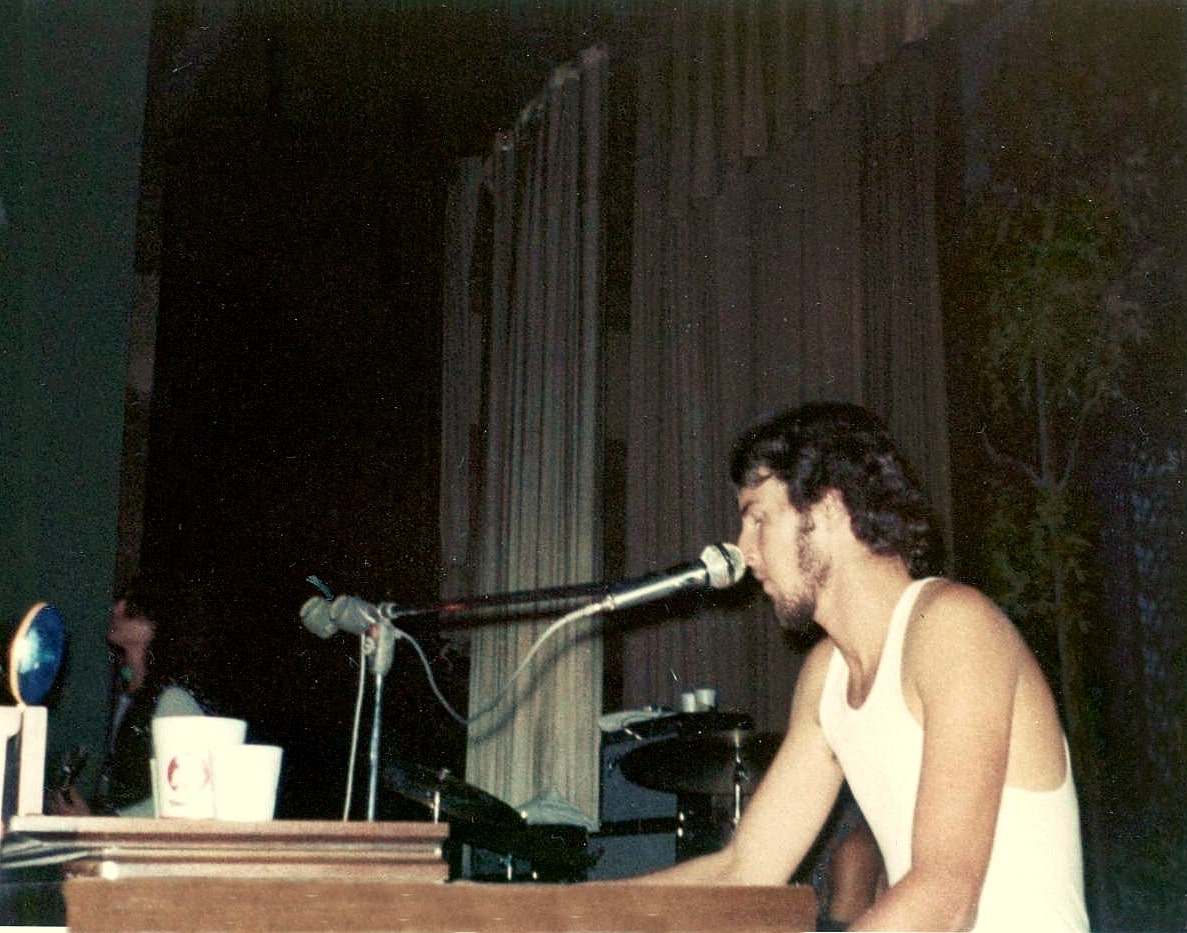
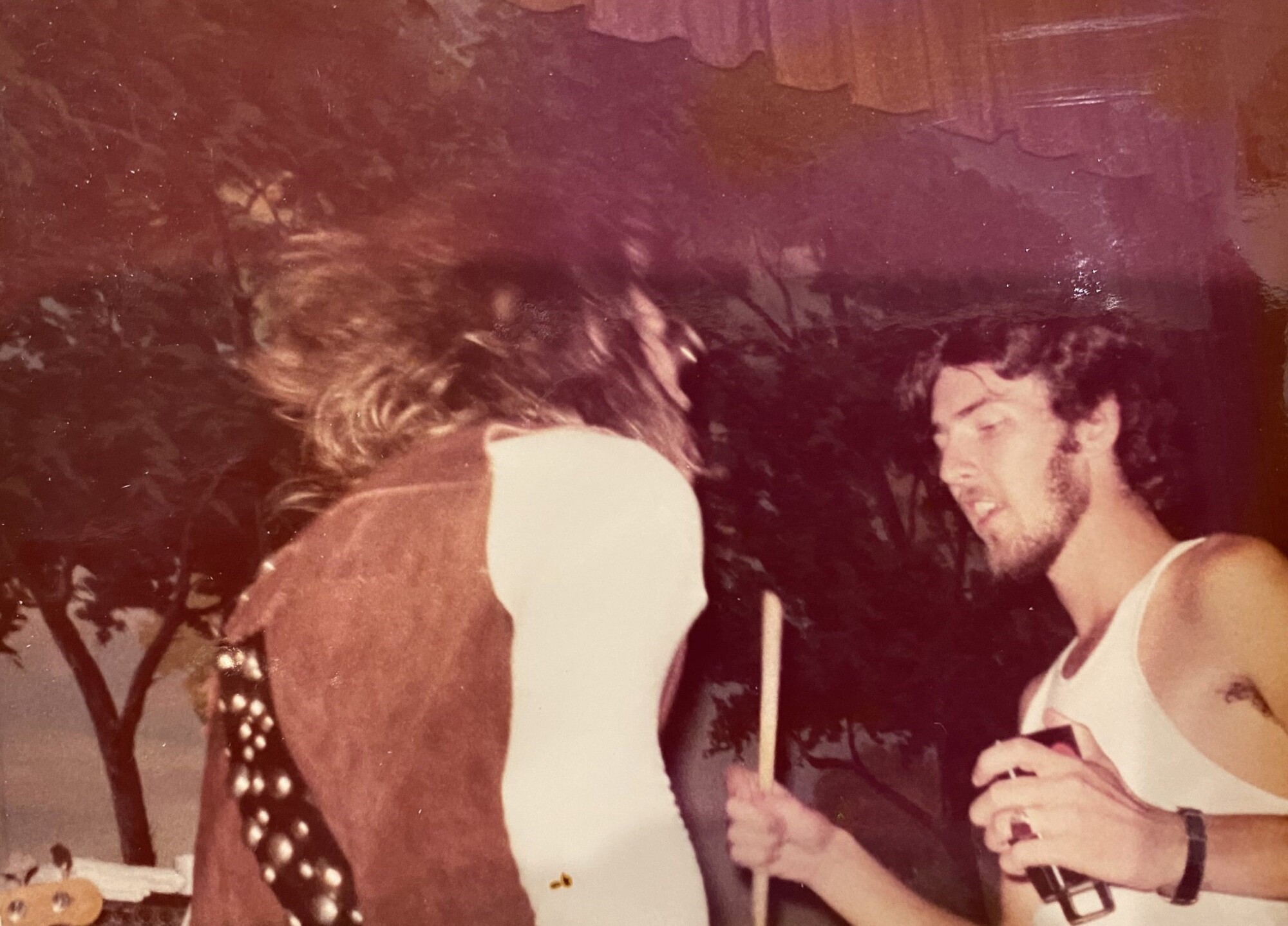
Keep in mind too that we were doing a lot of showcase performances for Major Labels at Studio Instrument Rentals (SIR) which was one way to land a record deal. They would send their A&R people in to evaluate potential new artists. Notably, we did an audition for legendary session / jazz guitarist Larry Carlton, and he did have “some” interest in us. He made an offer to help us get a record deal for 50% of what the band made if he got a contract for us. Naturally we immediately declined his offer.
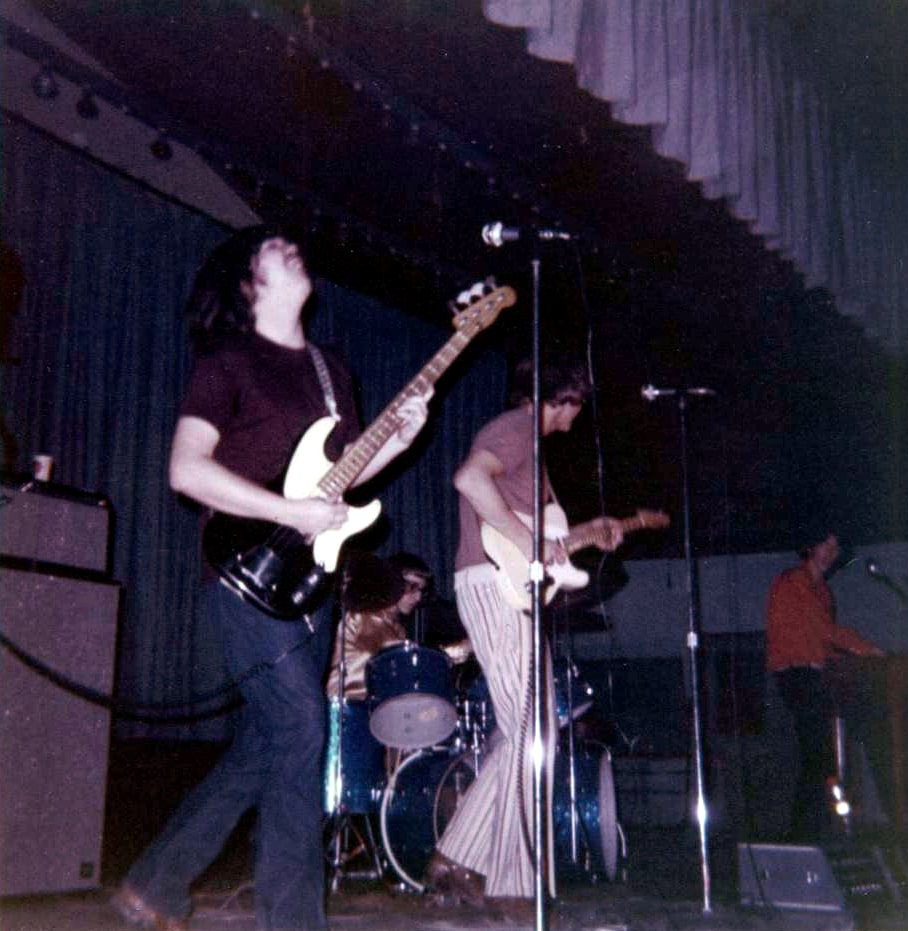
Wasn’t it a bit unusual to release a live record as a debut album?
I would say it was rare, but it worked out quite well for us! It was just another very positive step up the ladder towards landing a Record Deal.
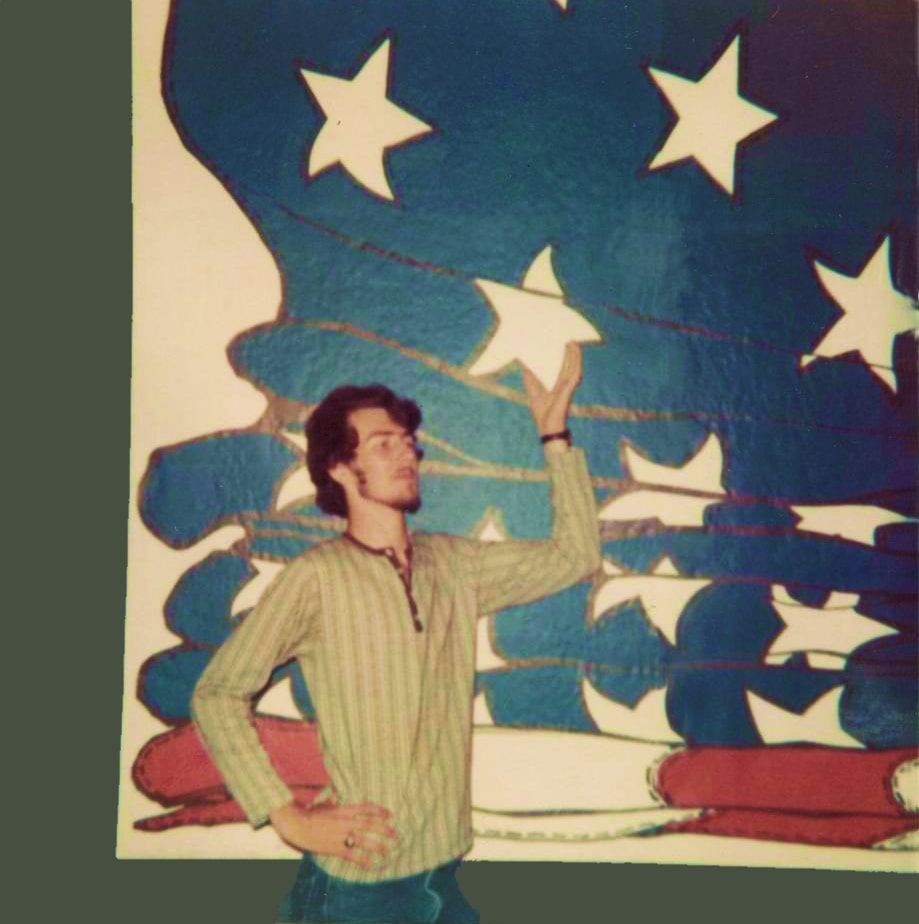
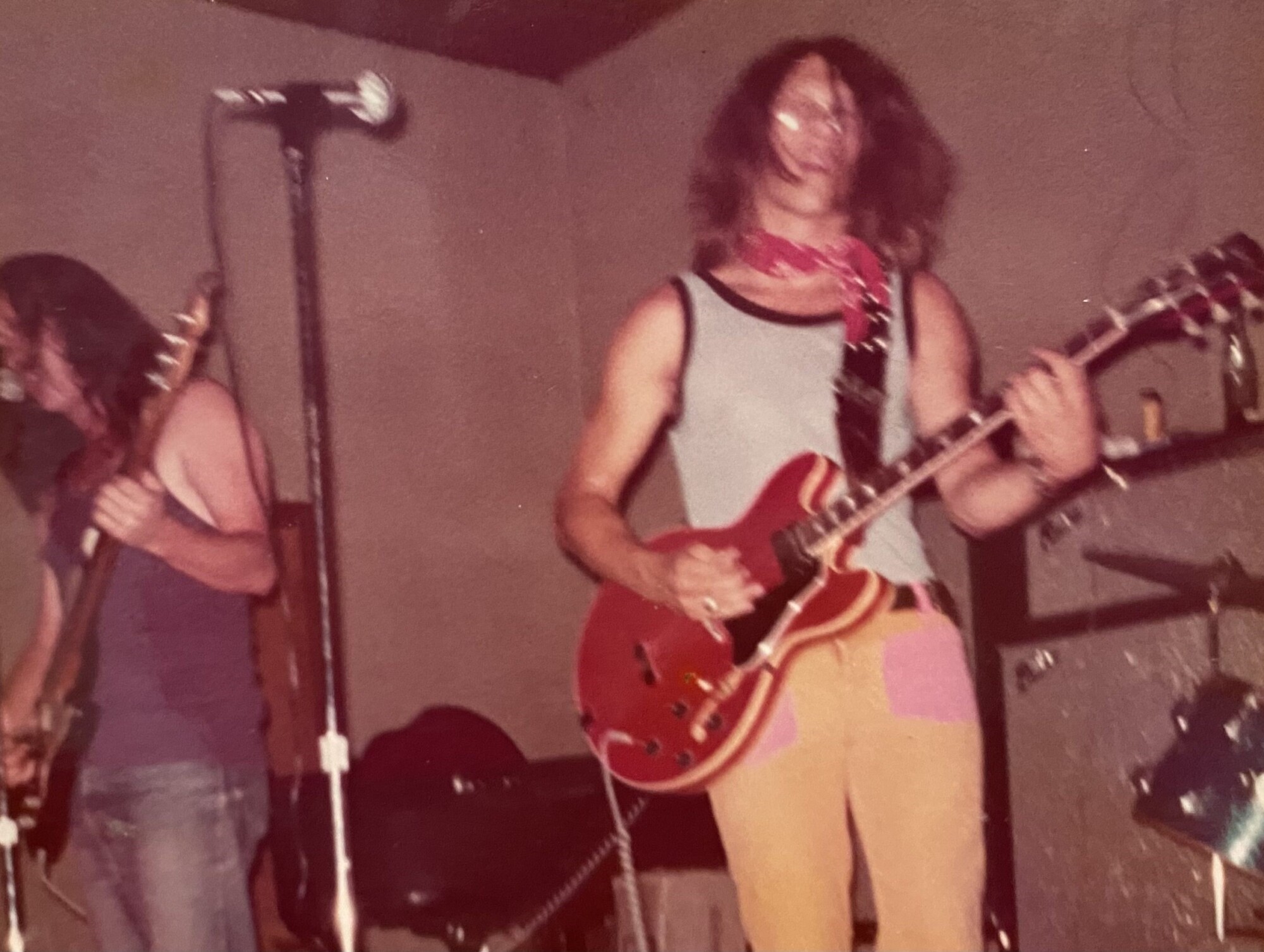
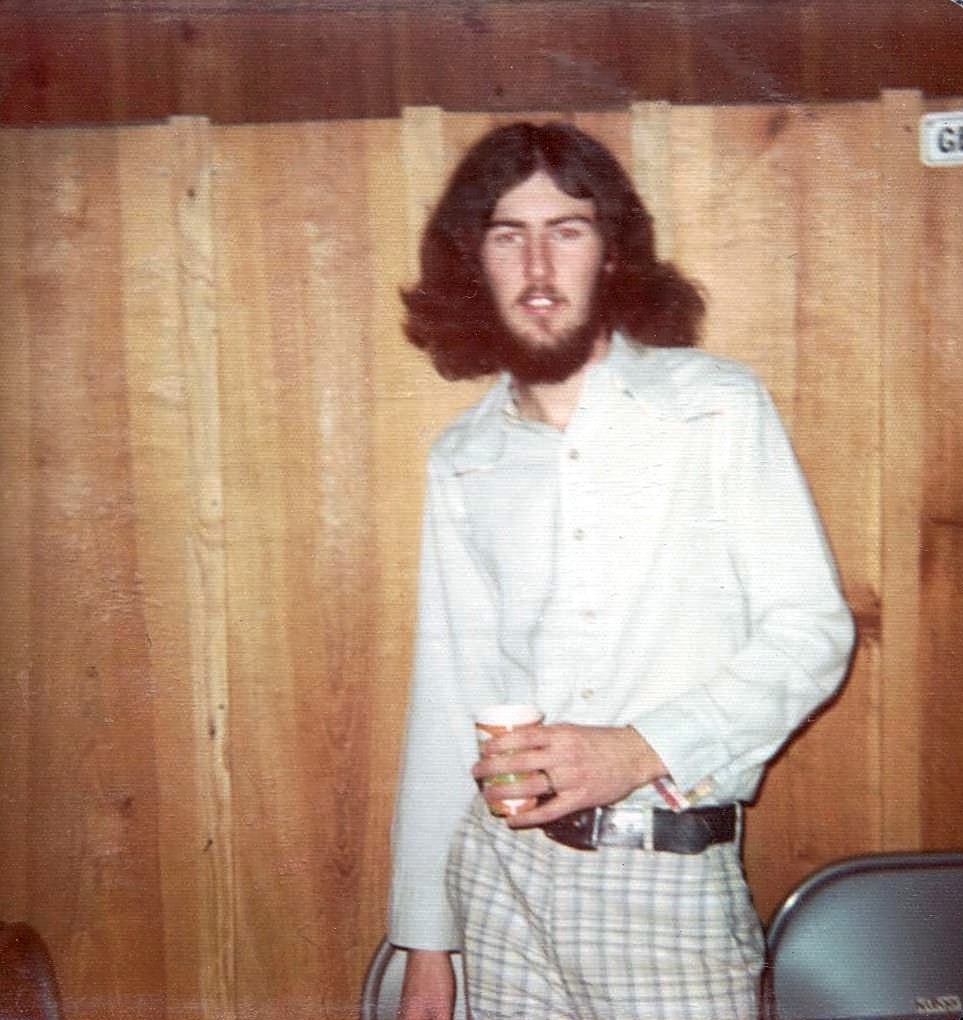
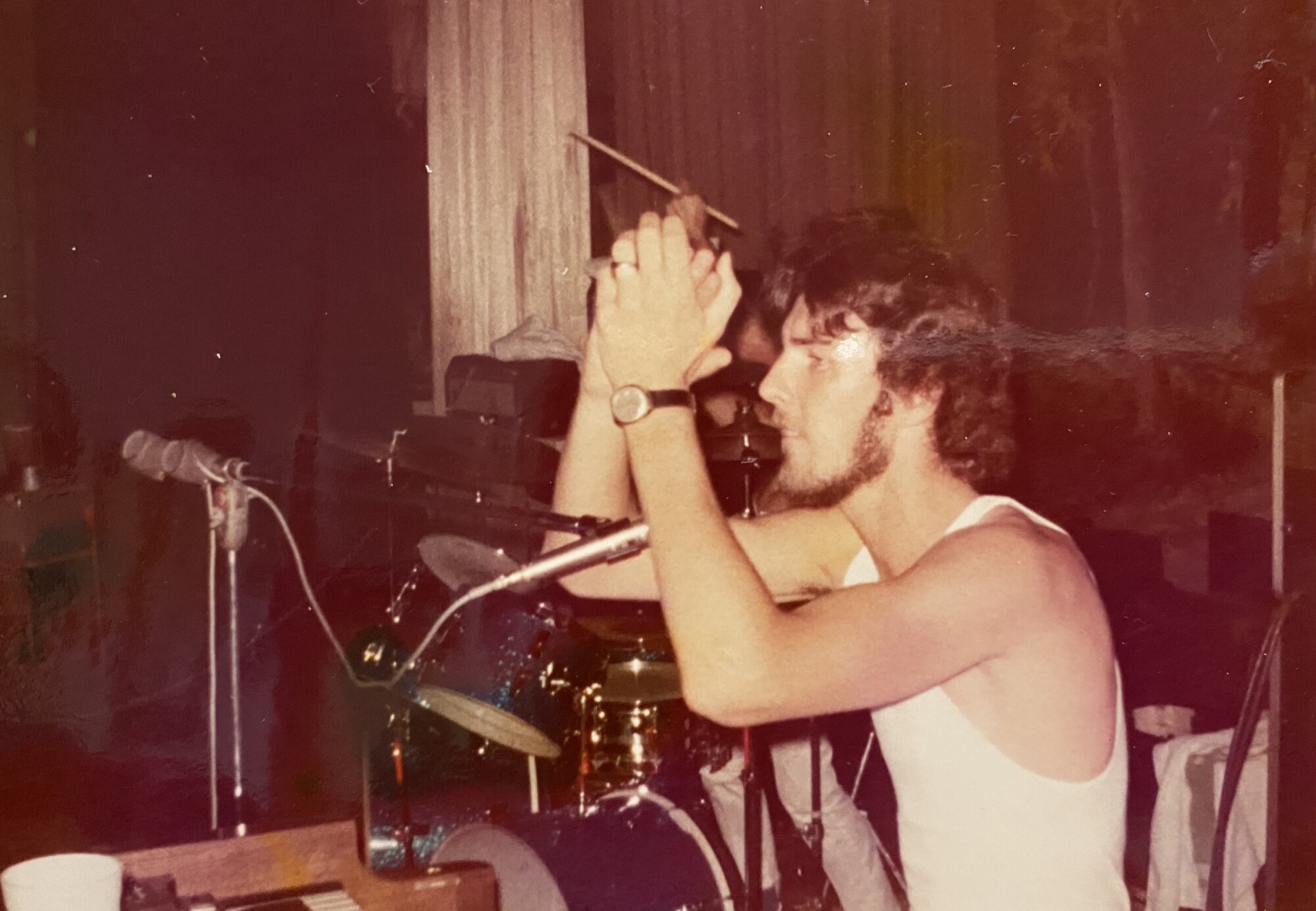
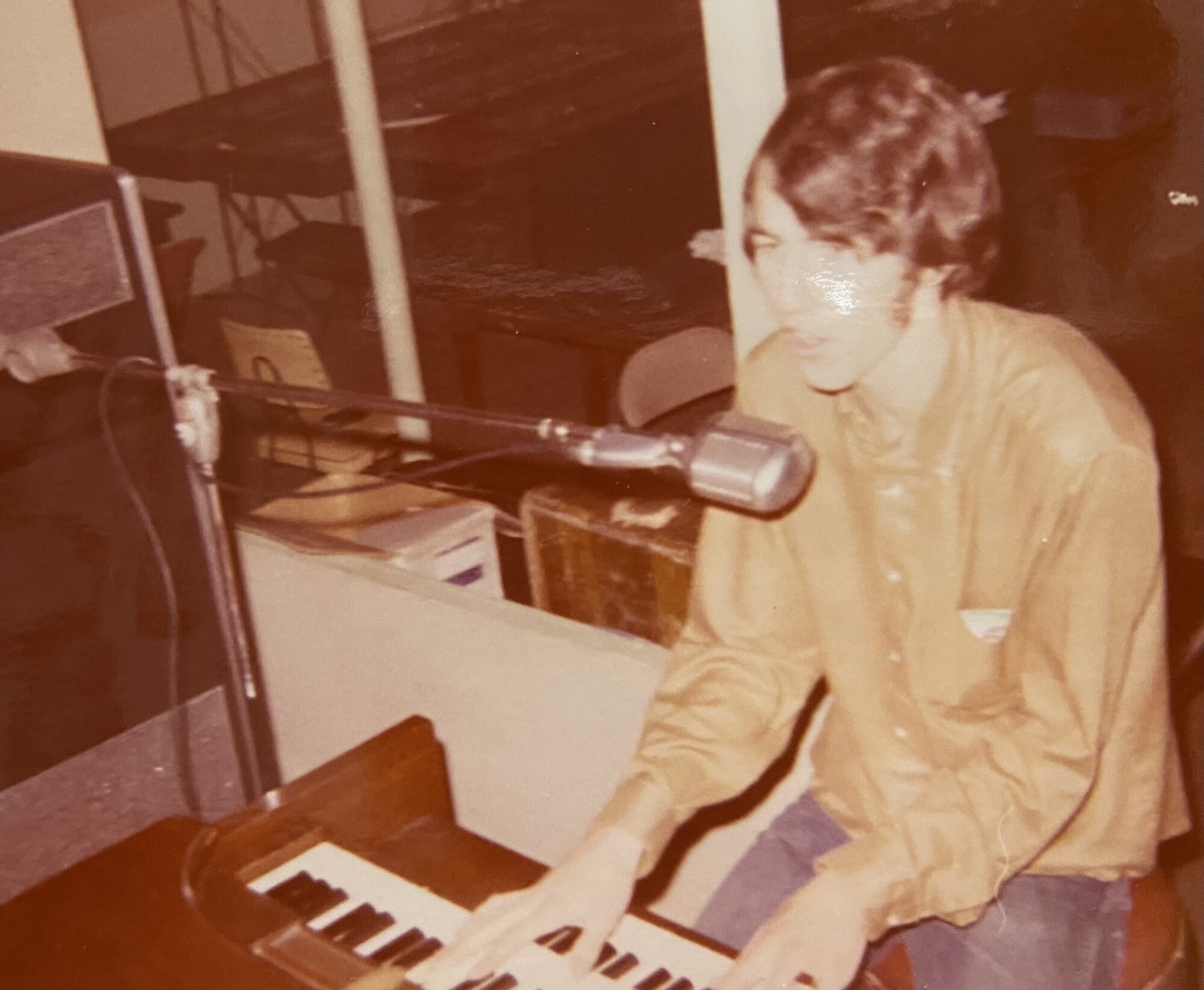
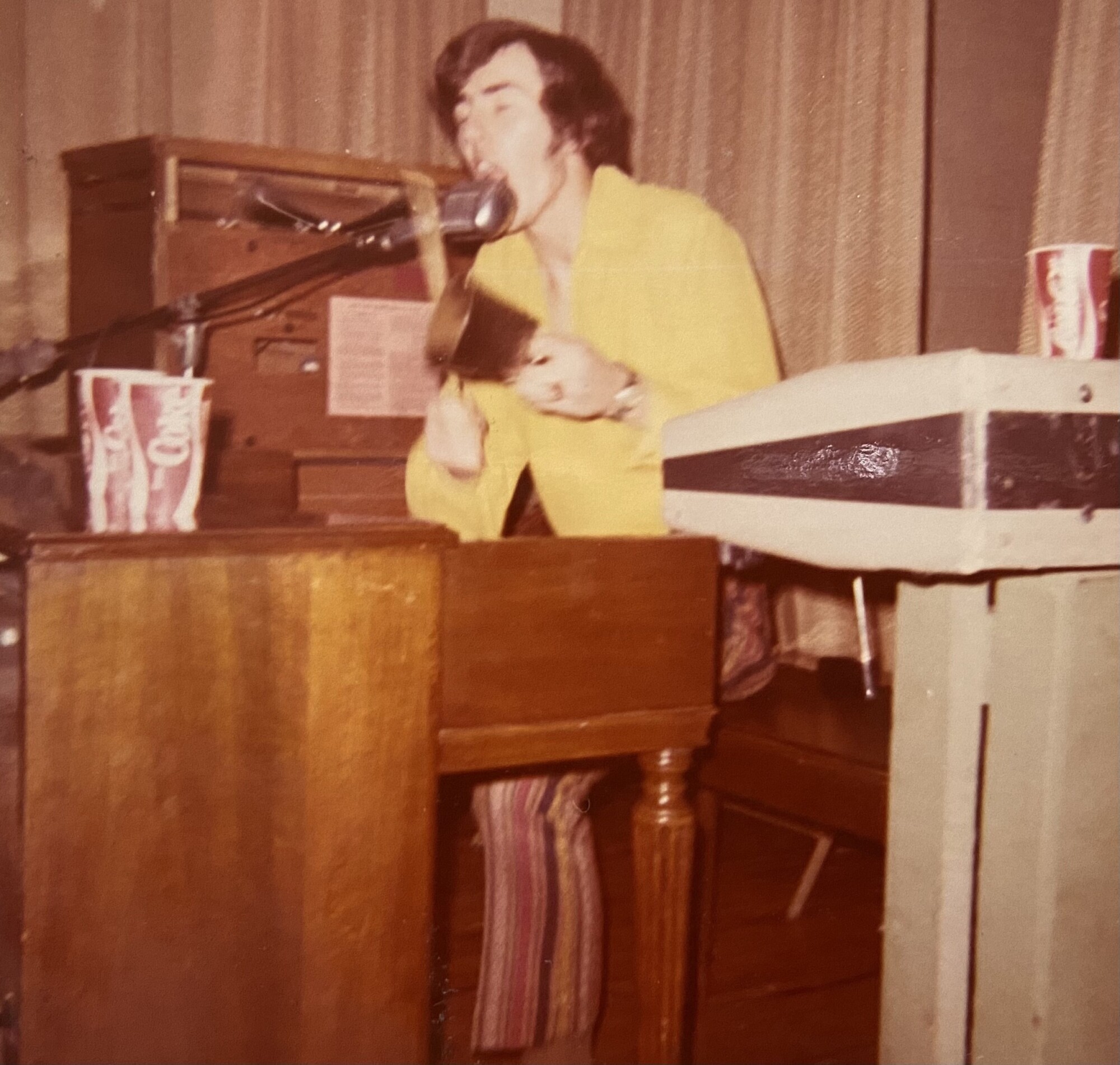
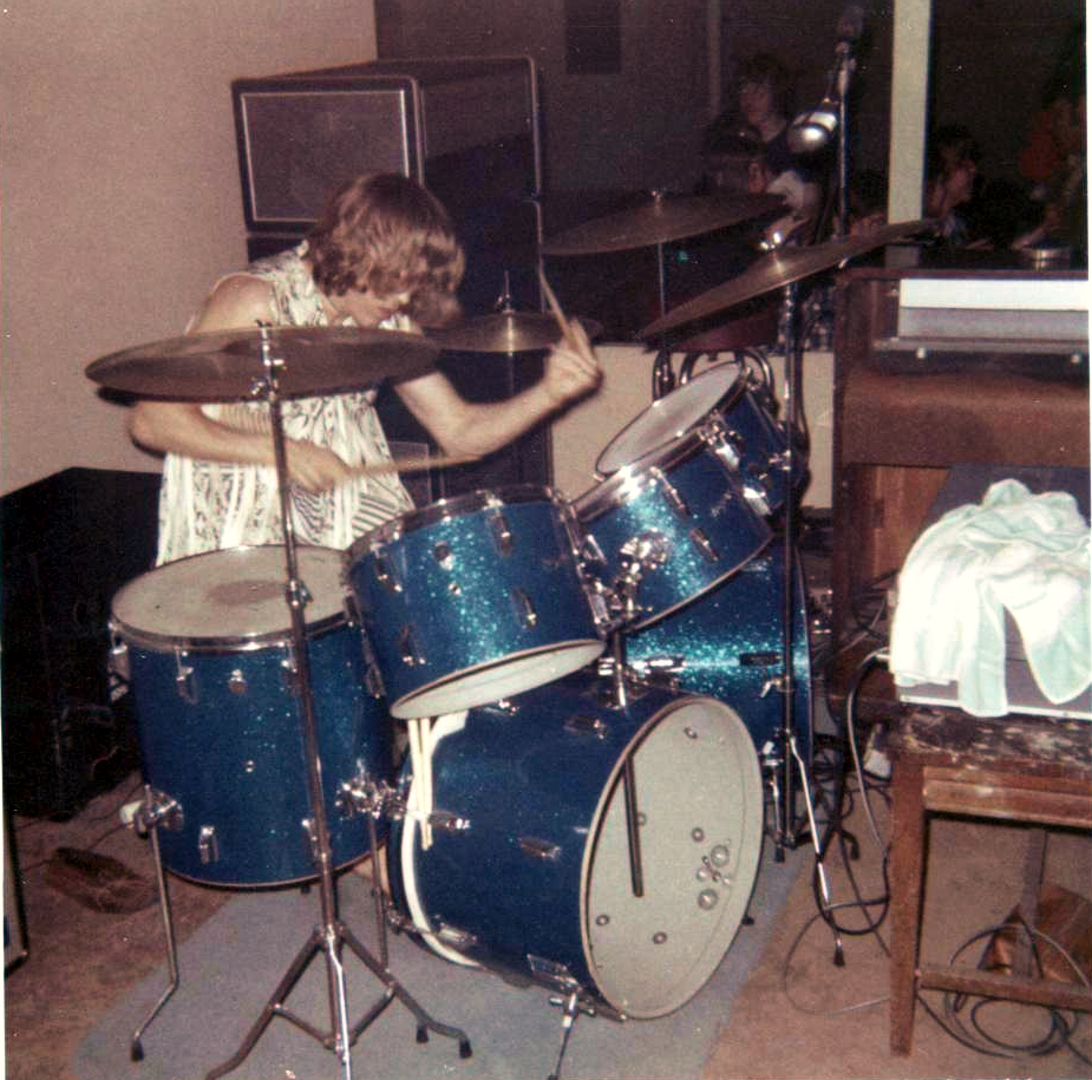
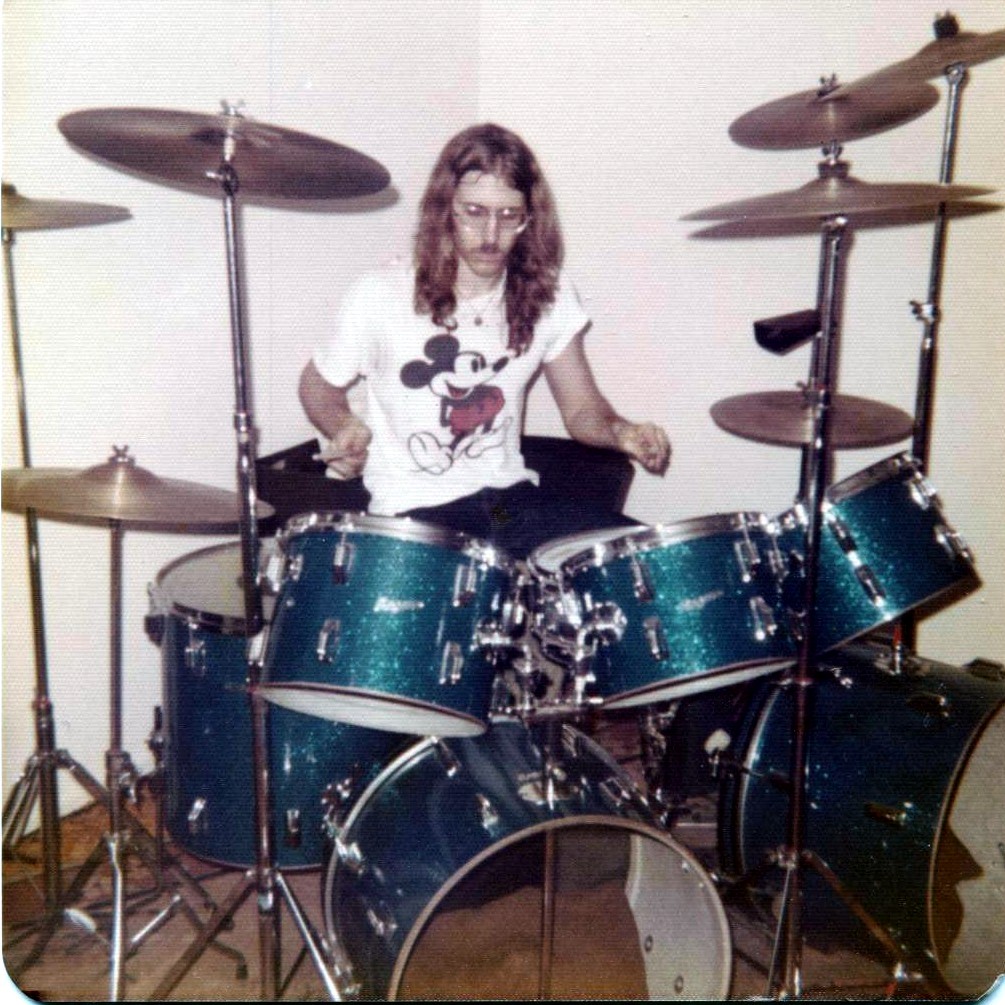
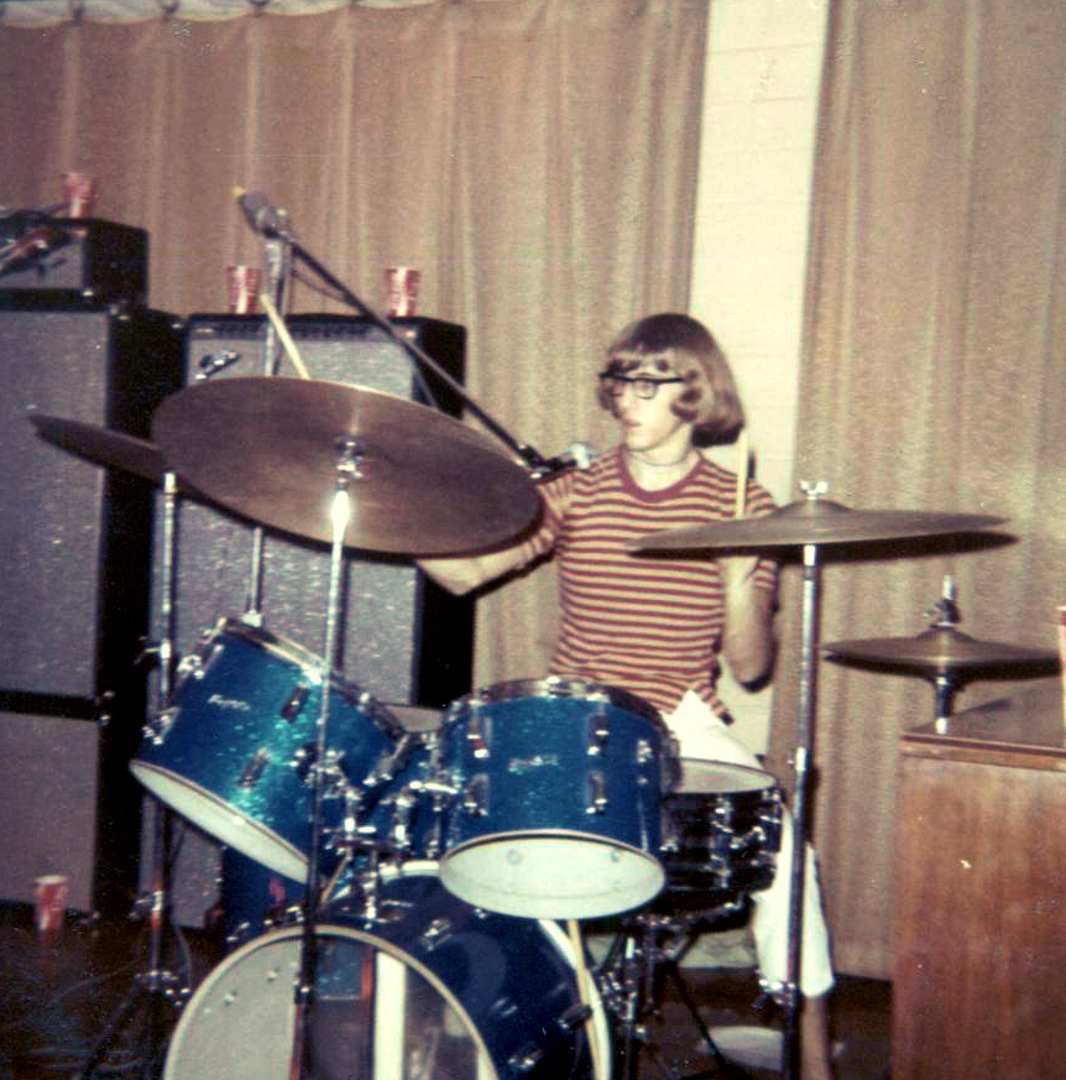
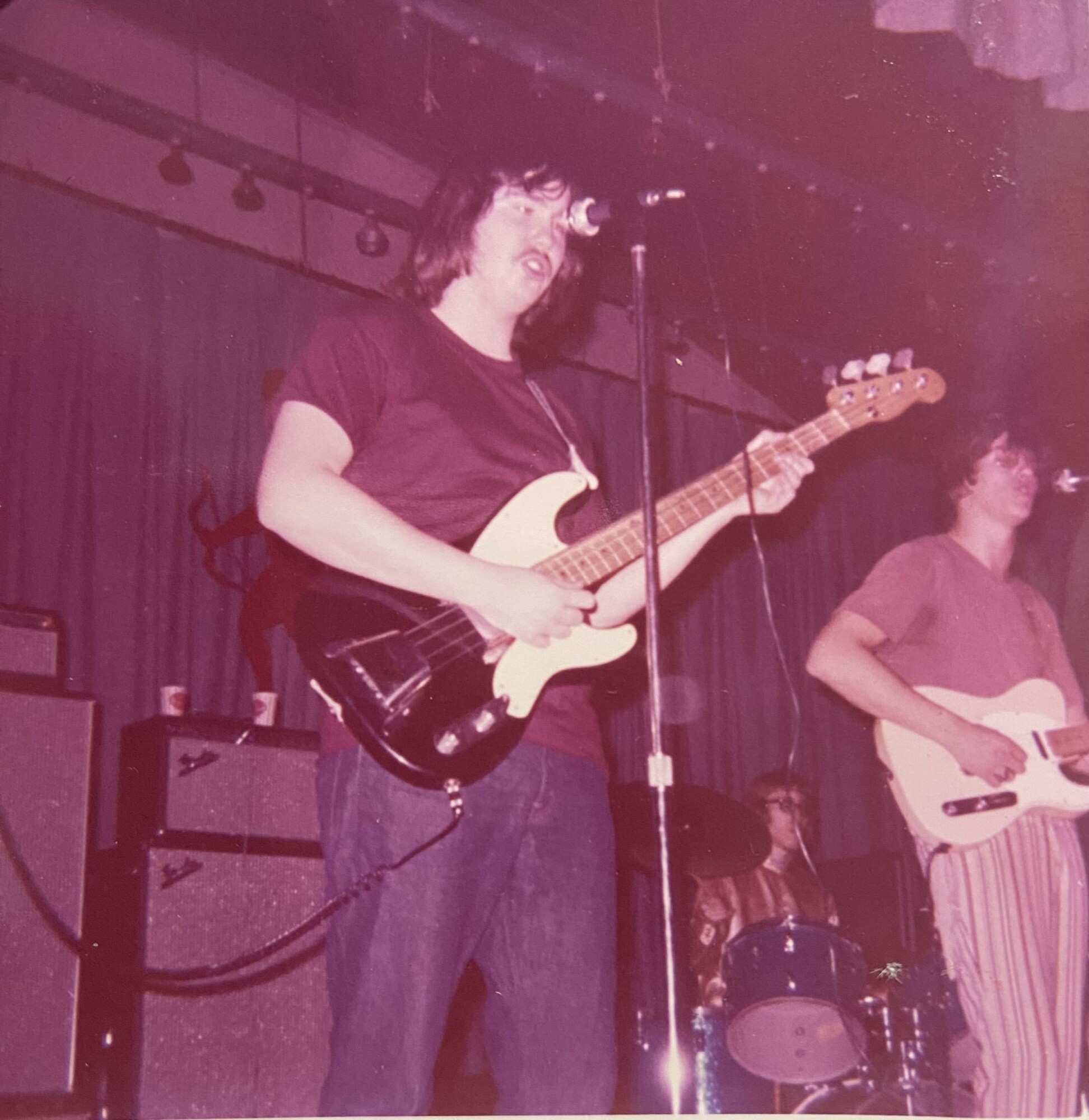
Would love to hear more insight regarding the songs on ‘Trapped Live’.
A1 ‘Here To Play’–This was a song the band wrote together intended to be our opening tune when playing all original song concerts. For me, it was one of my favorite songs to play because I got to use my double bass drum shuffle throughout most of the song. It also showcased how tight we were as a group. The lyrics kinda speak for themselves.
A2 ‘Slow Motion Love’ – This was another band collaboration effort but I did write the lyrics. It is another one of my favorite songs to play because of the tight segments woven into the body of the song. The concept of it was the ecstasy of spending a blissful night in bed with a lady who connected on every level with her man intimately. There was no need to rush through it and in fact both the man and woman wanted the night to play out in “slow motion” and last as long as possible.
A3 ‘Holly Would’ – This is a Gary Lohmann tune as he did both the music and lyrics. It was a very popular song wherever we played. *** Also it turned out to be the catalyst 42 years later for the coolest thing I’ve ever done in music!
A4 ‘I Want It All’ – This was Chuck Stillman’s favorite song. GL wrote it. It was a good song to dance to.
A5 ‘Lonely Days’ – I think this was a Lohmann/ Butler tune but I really liked the keyboard parts in it.
B2 ‘Breakin’ Out’ – I wrote the lyrics and Gary / Randy wrote the music
B3 ‘Did You Have A Good Time?’ This was written by all of us and it was strictly developed as an ending song with a drum solo inserted. Was a big crowd pleaser for sure!
B4 ‘Rockin’ Tonight’ – I think Randy wrote this one.
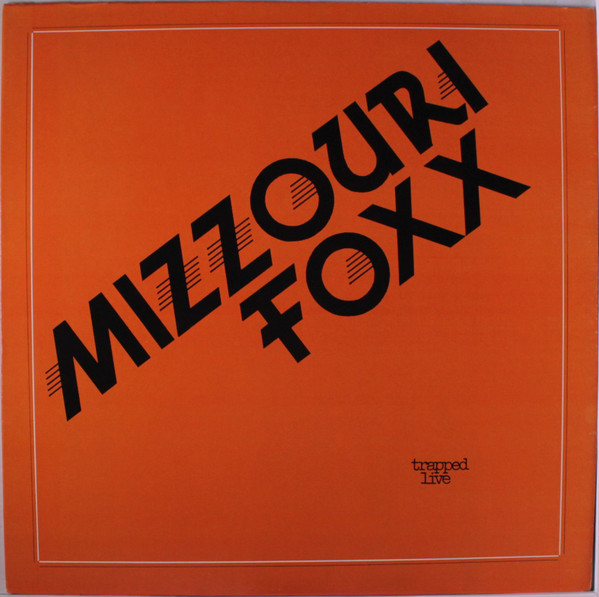
Did you have more songs that were perhaps unreleased or were only played at live shows?
Yes, there were in fact quite a few songs we wrote and made some demo recordings of. For example, the four songs we recorded at Shelter Records studio in Tulsa before moving to California. Those tunes were ‘Planet Earth’, ‘Hela Bend’, ‘Life Goes On’ and ‘Oranges Are For Sunday’. But definitely there were many others along the way, and I can’t remember all the names of them. A few names I do remember were Blueberry Trail, Gutter Slut and Arizona.
You got some press at the time….
I vaguely recall some local papers writing about the ‘Trapped Live’ album but nothing specific about any of that. El Toro Marine Base had a few articles in their newspaper about us, our album and the sellout crowds we drew. Now that I think about it, there were articles in some of the other military base gigs we played at. Miramar AFB, Edwards AFB, Twenty nine Palms Marine Base and some others would write articles about the band.
There’s a follow-up album? Please tell us as much about it as possible? Can we expect to hear it someday?
The “follow up” album was recorded as a result of our record deal with MVP/Polydor Records in 1980. Ironically, we had met Freddie Perren, I believe in 1974 via a friend of Chuck Stillman’s. Bea Verde was a faith-based song writer and a friend of Chuck’s. Bea also was a friend of Freddie and Christine Perren. At that point, Freddie’s portfolio included being a member of “The Corporation” which was a small group of four men that formed Motown Records under the leadership of Berry Gordy who founded the group. Freddie was already a successful song writer, record producer, arranger and orchestra conductor. He had worked with young Michael Jackson on the hit song “ABC” and other recordings by the Jackson Five. When Bea set up a meeting with us and Freddie, he was 100% R&B artists and wasn’t interested in working with a rock band. But then he rose to prominence in the industry as he produced/ co-wrote songs with Tavares, The Sylvers, Yvonne Elliman, Peaches & Herb and Gloria Gaynor. He earned back-to-back Grammy Awards for his work on ‘The Saturday Night Fever’ movie soundtrack. But his biggest hit was co-writing and producing Gloria Gaynor’s monster hit ‘I Will Survive’. Freddie became perhaps the number one writer/ producer that brought Disco music in as a genre. The natural progression for him at that point was to create his own MVP Records company. In the meantime, Gary Lohmann had been signed up with Perren Vibes Publishing company as a songwriter team with our childhood friend Chuck Neal. (Chuck Neal was the lead singer for a year or two with the Outcasts in Neosho). Gary and Chuck found some success when one of their original songs ‘Take All Of Me’ was the name of Barbara Law’s disco album released in 1979. By that time Freddie and Chris Perren’s new company was on fire with two recording studios on Ventura Boulevard in Studio City that they lovingly named “Mom & Pops Studios”. Their records were distributed and marketed by Polydor Record company. (Which is why the backside of all our Mizzouri Foxx tee shirts have the MVP/Polydor Records logo). Gary’s success as a songwriter caught the attention of Freddie and Christine so they came out to see the band play a couple of gigs. Plus, our ‘Trapped Live’ album was pretty solid, and we were selling copies at every gig we played. Ultimately, they decided to sign Mizzouri Foxx to their company as the only rock and roll (white musicians) band on their label. It was the BIG break we had worked for, for so many years and we were super exciting as you might imagine. They had a big elaborate record deal signing dinner attended by Freddie, Chris, the Vice President of Polydor Records, Dino Fekaris, Peaches & Herb and several of the company staff members! It was an electric time for us all! Some cool memories of that time were one day Freddie brought Jose Feliciano into Studio A to meet the band. I was so freaked out that when Freddie introduced each of us by name to Jose and he said this is Kenny Vaughn I reached my hand out to shake his hand not even thinking he couldn’t see my gesture. So, I just grabbed his hand and shook it! Haha! Another time I was sitting in the front office by myself, and Donnie Osmond came in and sat down next to me. All I could think of saying to him was how hot I thought his sister Marie was. But good common sense told me to just not say anything and be cool. After a few studio sessions working with Freddie, he realized he was not a rock band producer, so he brought in Jay Senter to produce our album. Jay’s portfolio included producing the Helen Reddy hit song ‘I Am Woman’ and Sammy Johns’ hit ‘Chevy Van’. Jay was a cool and fun dude to work with in the studio! He drove a beautiful gold Rolls Royce and was a huge tennis player and golfer. Jay also treated the band with a visit to his “large” log home in Big Bear! It had a jacuzzi on the patio and a spectacular view of San Bernardino County lights down below. That log home was quite large and spectacular as well. Jay was very well connected in the music industry, and he knew how to make a hit record. Examples of his connections were that he had Jeff Porcaro’s drum tech bring in a studio kit that Jeff had used for me to play on! Since studio time cost money Jay also brought in Wrecking Crew member and Toto’s guitarist Steve Lukather to do lead parts on a few of our tunes. That really pissed Gary off, so he spent some time in a bar when Steve came in to play. I was in the studio when Luke was playing, and he was beyond impressive! I should also mention that there were articles about our recording contract with Freddie’s MVP/Polydor Records in Billboard, Cashbox and Record World magazines so that was very cool to see. MVP had a cool “Guest House” up on the hill above Studio B that artists could hang out in, rest up and eat meals. I remember a lot of Backgammon games were played up in that house.
What was the reason for the label deciding to drop the album release? Was this the main cause that eventually ended the band?
That would be the “million-dollar question”! The meeting Chris had with us was a complete and total shock because the MVP staff, Freddie and Chris were all excited about how good our album tracks were! She talked about some executive changes at Polygram who had recently taken over Polydor and that the Vice President who we met at our record deal signing dinner was no longer with the company. The decision had been made that we were just going to become a tax write off for Polygram. Since our plans at that point was to start touring and promoting our album, we were not playing higher paying gigs based around cover tunes and I was not ready to take a step backwards and do that for a living any longer. My only choice as I saw it, was to apply for work at a temporary employment agency called Kelly Girl and do some odd jobs for them. I then got hired by Clarion Corporation. That is where I met Ralph Richardson whose father was employed at Northrop. One day Ralph asked me if I would be interested in working at Northrop on the B2 Stealth Bomber program. The starting pay was $9/ hour with full benefits which was the key reason I left the band to begin a new career in the defense contractor industry! My start date was 9-13-1982, so I cut my hair and became a “Utility Crew Worker” or basically a laborer, and we set up office areas with partitions, chairs, desks, computers, printers, bookcases and anything else the employees used to do their jobs. I even sold my TAMA drums to one of my bosses’ nephews. I stopped playing drums almost totally until I retired in 2009! During my twenty-seven years with Northrop Grumman, I worked my way up to being the Facilities Engineer Specialist for the IT Sector west coast operations.
Tell us about the We Ain’t Dead Concert in Neosho, Missouri on June 28, 2011 which was followed by the ‘W.A.D.Y.’ release.
After I retired from Northrop Grumman in the middle of 2009, I worked with my NG co-worker and friend Tom Vincent on developing a website site to capture our wonderful band days! Unfortunately (just recently) the MF website became corrupt, and we lost everything on it. I am currently working with my web scientist friend Mike in Las Vegas to rebuild a new site!
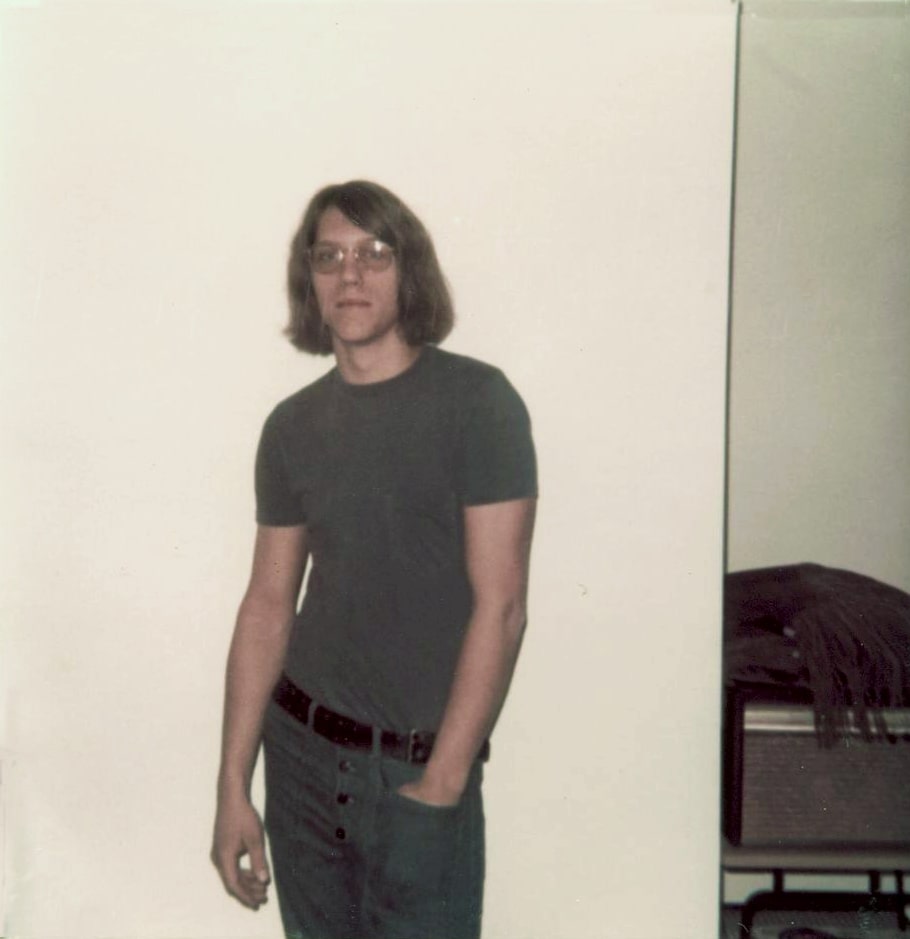
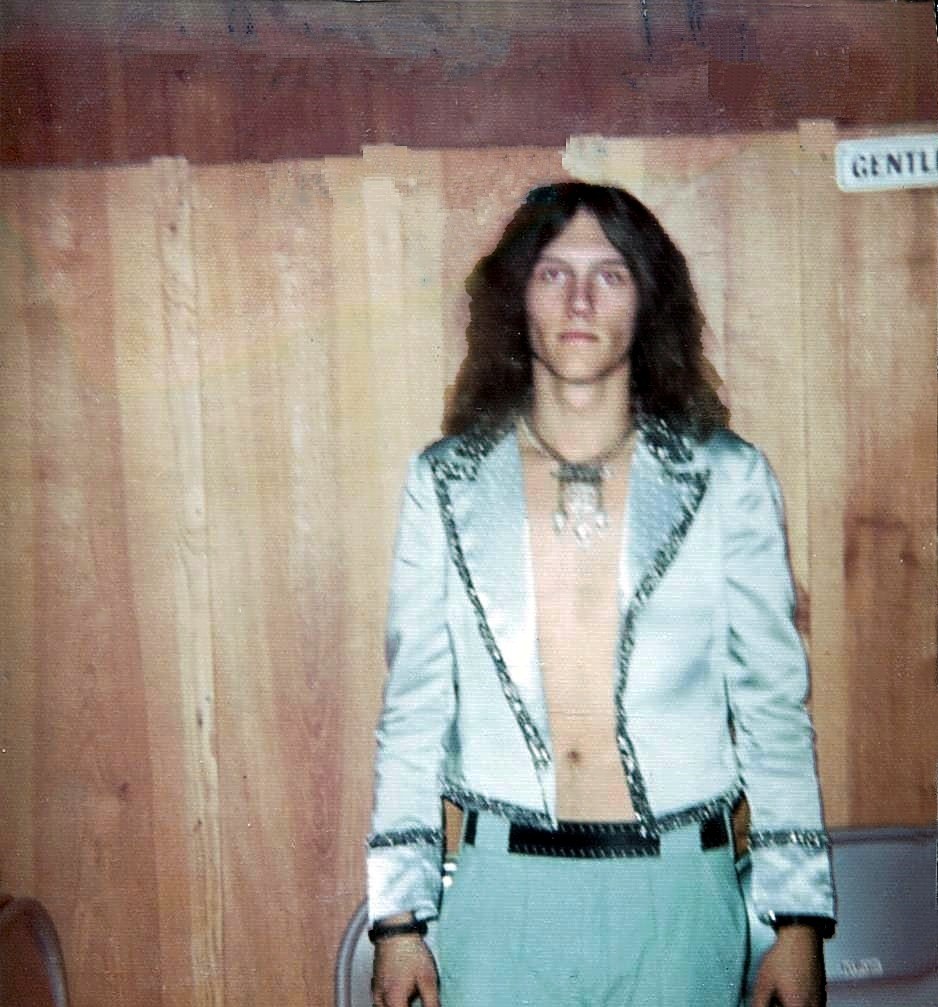
In terms of difficulty, for a host of reasons, the We Ain’t Dead Yet (W.A.D.Y.) concert at the Neosho Civic ranks at the top of the list for the band! I was motivated to put that show together due to the fact that Mizzouri Foxx never returned to Missouri to perform after we relocated to California in 1974. I presented the concept/ idea to the band and Jerry on a conference call with high hopes we could pull it off. Rick, Randy and I didn’t even have any gear to use for the show! Rick lived in Park City, Utah and I was retired and still living in Buena Park, California. However, Randy lived in Diamond and Gary lived in Neosho so that was a HUGE bonus! Gary was playing in the band ‘Walrus’ which was the biggest reason we were able to rehearse and obtain a lot of the equipment we would need to do the concert. Steve Kenny offered his home that has a studio/ rehearsal room for us to use. Bobby Bryant provided his Gretsch drum kit and Hendricks let us use his keyboard gear. Another critical player was Dave Crocker and his Fly By Night music store in Neosho! Dave loaned us anything we needed that included Randy’s bass guitar, Gary’s Marshall amps plus keyboard amplification and other miscellaneous items! The sound system was provided to us by Sound Dynamics located in Seneca and owned by Gary Brooks. We did a lot of advertising primarily to the folks who would remember Sound Company. I also hired a videographer from Joplin to capture everything on video. It was a lot of work and coordination, but we had RSVPs from locals plus others that were flying in from other states to attend this once in a lifetime show. The date was set for May 28th, 2011. On May 22nd my wife Virginia, daughter Tammy and five grandchildren landed at the Tulsa Airport. It was just about two hours after the Joplin Tornado had destroyed the entire south side of the city! It’s impossible to describe the horrible impact that disaster had on Southwest Missouri, but it also placed us into a decision as to whether or not we should play or cancel the gig. Given the heavy cloud of depression that was obvious plus the effort we had put into getting the event ready, we decided that the show must go on. Without question the turnout was not as large as it would have been, but we received many thank you’s for continuing to play because it was a much needed break from the storm!! We in fact did have some CDs made of the performance and a DVD video. Unfortunately, the videographer had all but one of his video cameras destroyed so he didn’t shoot and produce a very high quality video. In fact, he apologized to me before we flew back to California. But the W.A.D.Y. concert was special, I know for all of us in spite of what happened that week….
Tell us about the recent release of ‘A Sailors Last Breath’.
I call this project “The Miracle In Missouri”! I won’t give you the LONG version of it all but here are the main bullet points of this incredible project and experience:
1.) An Enlisted man named Harmon L. Barnard III saw the Kitty Hawk show, but he did not talk to any of us afterward.
2.) In 2019 (forty years later) Harmon decided to search the internet in an effort to contact Mizzouri Foxx.
3.) He still had no idea as to why four decades later he thought he should make the effort to contact the band, and in fact, he was spelling the name wrong while searching for Missouri Fox.
4.) Due to his determined efforts, ultimately, he did find our Facebook page and connected with me there.
5.) His first question to me was, “I want to know what Holly would do”? The chorus in that original tune, ‘Holly Would’, was “Holly would if she could, but she can’t, so she’ll dance the night away”.
6.) I suggested he ask Gary since he wrote the song, and I really didn’t know the answer to his question. Harmon called Gary and learned the meaning of the song.
7.) Harmon and I then became phone friends from that point on.
8.) A couple years later, Harmon told me about some poems he wrote while serving on the Kitty Hawk and I asked him to send those poems to me because I was trying to find a way to lift his spirits due to some serious personal issues he was dealing with.
9.) Of the five poems he sent, only one stood out. ‘A Sailors Last Breath’!
10.) I immediately contacted GL and asked if he would compose the music and make a song out of the poem? He said he would do it!
11.) Once I heard the demo Gary created, I knew immediately the song was special. After I told Harmon how good GL had done, he asked me if I thought we could get the band to record it?
12.) The last time we had been in a studio to record an original song like that was in 1981.
13.) I contacted two studios before I connected with Dead Tree Studios in Joplin. I cannot overstate the value that owner Clint Leedy brought to this project.
14.) Due to a variety of health issues, it was difficult to get Rick and Randy involved in the project, but they made it happen!
15.) Gary and Randy collaborated four times as they fine-tuned Gary’s original sound track on the song.
16.) On March 10, 11 & 12 of 2023 Mizzouri Foxx recorded the tracks for ‘A Sailors Last Breath’. And Harmon was able to attend the recording sessions.
17.) My goal is now to shop the song to current artists in hopes they will perform and record their own version of the song. Possibly generating a bit of writer royalties’ income for both Harmon and Gary.
What are some of the craziest stories that you can share?
Befriending Three Dog Night’s Road Manager/ Lighting Director Dennis Albro. After he became our friend, we got into any local TDN concerts for free and had backstage access. Those shows allowed us to meet the guitarist and the drummer for the Canadian band Bush. Domenic Troiano and vocalist Roy Kenner joined the James Gang after Joe Walsh left. Later Troiano joined The Guess Who. Pentti “Whitey” Glan was the drummer on Alice Cooper’s ‘Welcome To My Nightmare’ album and he also was the drummer in Bette Midler’s movie “The Rose”. Needless to say, Bush was a group of very talented musicians!
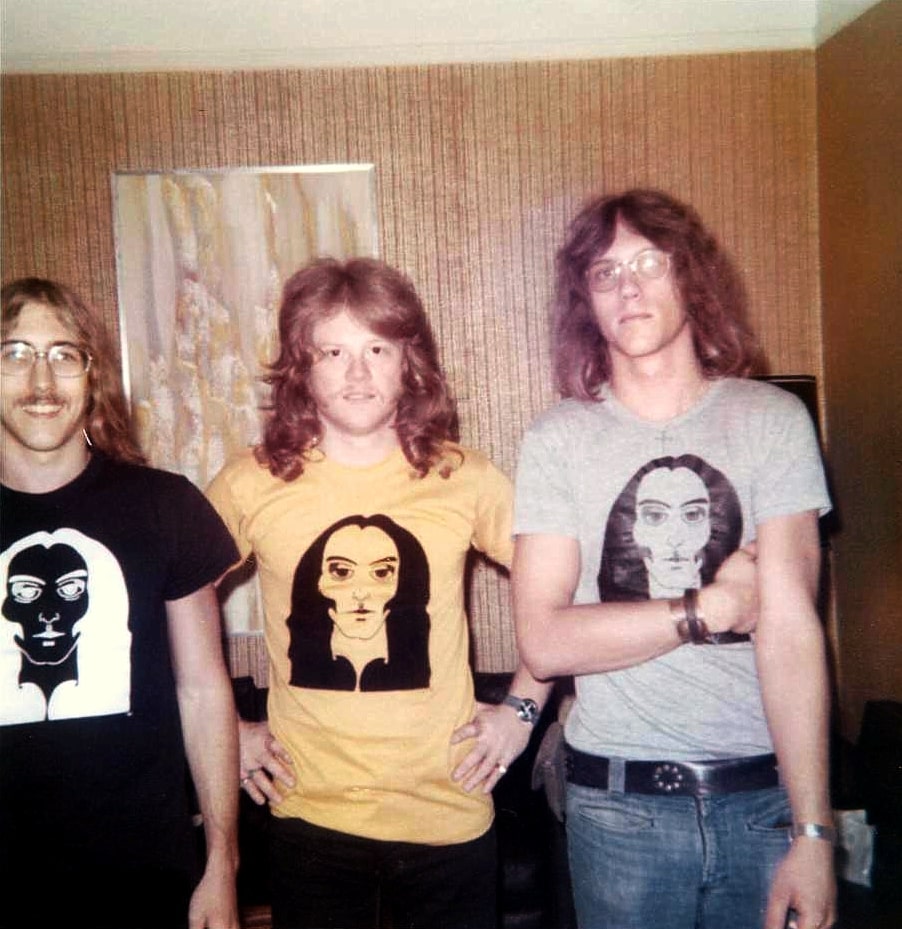
One day we were at Dunhill Records talking with label representatives and Floyd Sneed (TDN’s drummer), asked us to give him a ride home. We agreed and put his bike in our van and gave him a ride home.
Approximately two weeks after we arrived in California, our U-Haul trailer was stolen. All four band members made a straight-thru, emergency drive back home to order all new equipment.
Jerry remained in the Fox Hills apartments, and discovered a U-Haul representative had picked up what he thought was an abandoned trailer. When we returned to California, we recovered our equipment.
After playing The Troubadour, we had a head on automobile collision on Santa Monica Blvd. Chuck was driving his large Lesabrecar, and it shook him up a lot. I believe Chuck, Gary, Randy and I were in the car with a couple of our girlfriends at the time.
Our first three months in California, we spent in a 1 ½ bedroom apartment in Fox Hills Apts. Culver City. It was very small for six guys as you might imagine.
Partying with Richie Podolor on his famous sailboat “Celebrity” in Catalina Island Bay.
Chatting on a couch one-on-one with Iggy Pop at a Glen Buxton penthouse suite on Sunset Blvd. during a party Glen hosted.
An in-studio meeting when Freddie brought in and introduced Jose Feliciano to the band. I was so excited to meet him that I tried to shake his hand, but immediately realized he couldn’t see me extend my hand, so I just grabbed his hand and shook it anyway!
The gig at Art Laboe’s when out of nowhere, Chuck Stillman ran across the venue dance floor in front of the stage with a naked girl on each arm. Streaking in public was popular at that time.
Talking with Dr. Demento backstage at the Hollywood Palladium before he brought us on when we opened for ‘Seven Separate Fools’ former musicians from Three Dog Night.
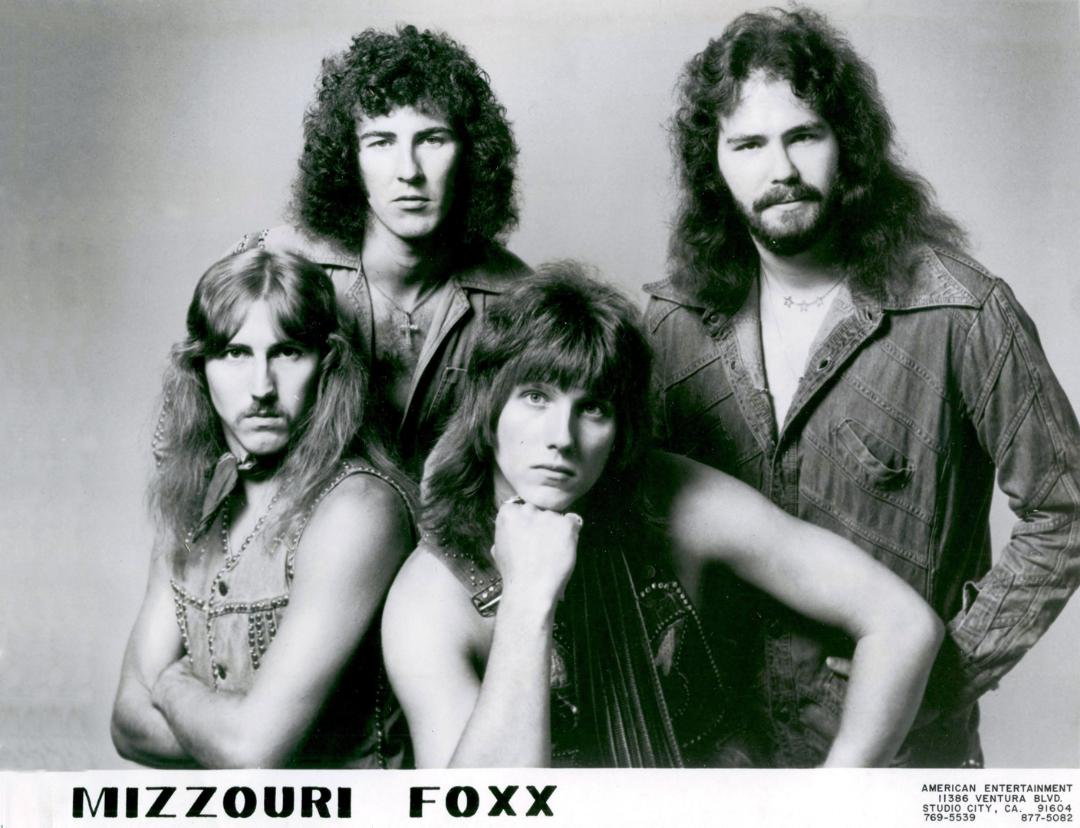
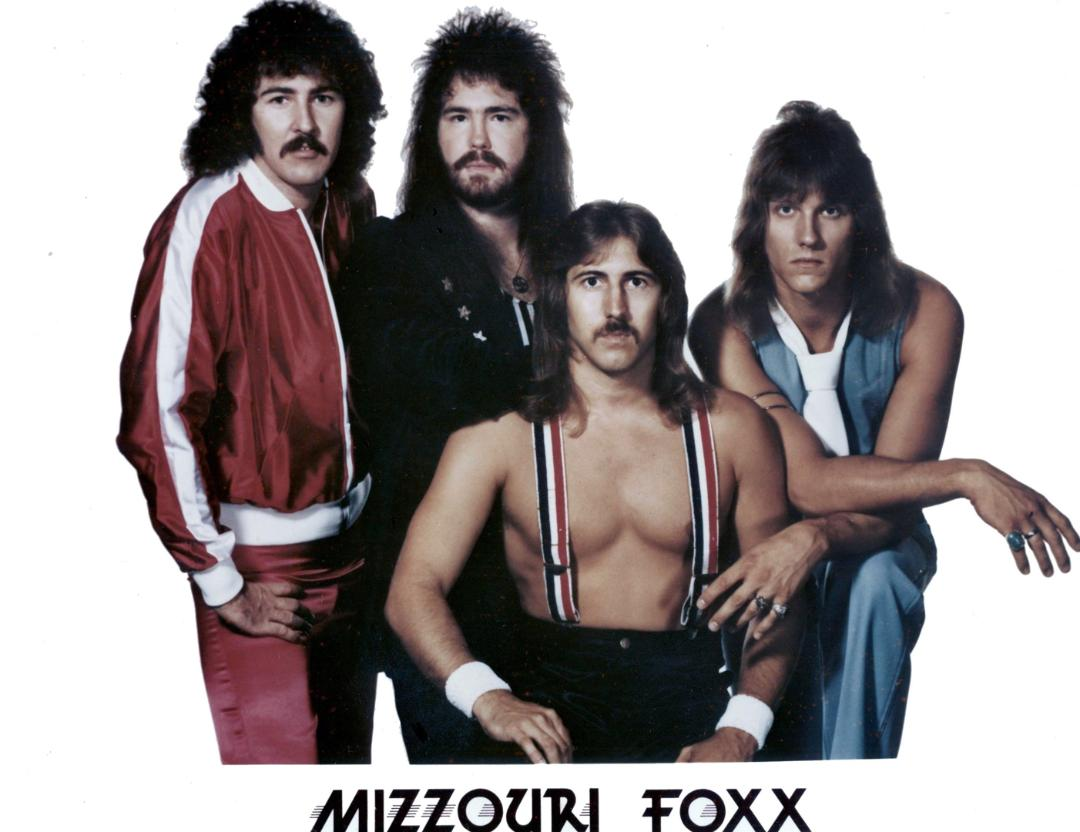
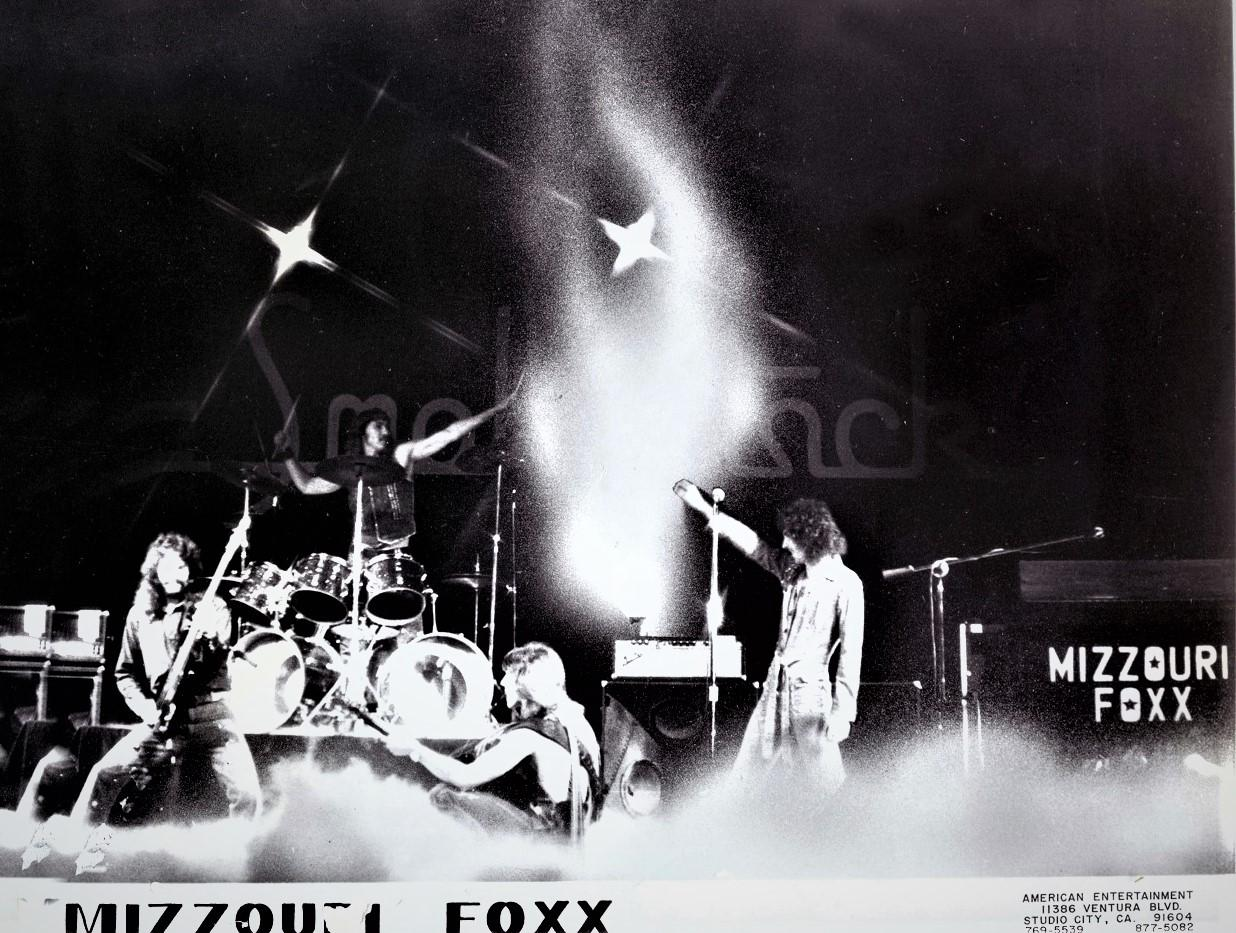
Looking back, what was the highlight of your time in the Sound Company / Mizzouri Foxx? Which songs are you most proud of? Where and when was your most memorable gig?
The MVP/Polydor Record Deal dinner with Freddie, Christine, Dino Fekaris and V.P. of Polydor! This was a high-end FANCY occasion and celebration on every level! There were people there from Billboard, Cashbox and Record World magazines. Our signing was mentioned in articles from each of those publications. Additionally, recording our album in the studio with Jay Senter was the pinnacle for me. Knowing the hard work, travelling and being in the music business for so long with the same guys made me so proud that our start up garage band from Neosho became Mizzouri Foxx and had played countless gigs and travelled thousands of miles to get to the next level!
Most memorable gig? There were several; of course opening for Van Halen, Styx, Fleetwood Mac and the concert on the USS Kitty Hawk are right up there. But honestly, my favorite gigs were when we played at Gator Gardens on Coronado Island. The lines were so long outside the building with people waiting to get in and we did four encores one night. It was the most exciting time I can remember from our band days! A few other bands we opened for were Black Oak Arkansas, Y&T, Canned Heat, Dr. Hook & the Medicine Show. I had developed a good friendship with Dave Meniketti, Leonard Haze, Phil Kennemore and Joey Alves, the original band named Yesterday & Today. It was very cool that we opened for them three or four times.
I had quite a few songs I was proud of and enjoy listening to even today. And they all were for different reasons. My favorite songs to play drums on were ‘Here To Play’ and ‘Slow Motion Love’. My favorites as song writing melody/ lyrics would probably be ‘Holly Would,’ ‘Long Road Home,’ ‘Cheater’ and ‘Baby Hold On’. Although I also really like ‘Born For You’. I enjoy listening to all the songs on the ‘What If’ CD too! But for all of us there was certainly a nostalgic feeling whenever we played ‘Missouri Nights’!
Gary and I thought we should do a decent recording of a few of the old Mizzouri Foxx songs that we never did a quality studio recording of as well as some newer tunes Gary had written more recently. He has his own recording gear and studio in his home so he sent me the music tracks so I could develop my drum parts. I was fortunate to have Backline Rehearsal Studios close to my home in Buena Park and I had become friends with the owner Shaul Dali who is also a drummer and a great guy on every level!! Once I learned my drum parts I went to Backline, rented a room and recorded the drum tracks with T.K. Wiley who also was a jazz drummer. T.K. was the perfect engineer and “producer” for that project. My drum tracks were sent to Gary in Neosho so he could do all the music and vocal tracks. He was also able to get both Randy and Rick to play and sing on most of the tracks! Once they finished their parts, they sent it back to T.K. Wiley who mastered the CD. All things considered the project came out pretty solid and it was obviously based upon the questions we’ve all had since 1982, “what if we would have continued to play and record our music?” All of the cuts from this CD can be found on Spotify and CD Baby.
Another great Sound Company memory was when we were asked to play on Tulsa’s “Dance Party” TV show that was hosted by a great Keli Radio Deejay – Les Garland. Of course, TV programs at that time would play the record over the air and have the band fake like they are playing the song live. The song we played was “I Am Your Hour”, and it was a cool experience-none-the-less.
Back in the early 70’s while I lived part time in Tulsa, I became friends with Les and he would let me sit in his radio studio while doing his DJ gig on the air. Now that was a super cool experience to say the least! Some years later Les became the co-founder of MTV Productions and he is the Deejay voice on Jefferson Airplane’s hit ‘We Built This City’. I estimate that we sold all but about 30 of the vinyl 45’s we had made. There are some very interesting follow up stories that happened fifty years later that include both the 45 and Acetate recordings via Massimo Contreras who lives in Chesterfield, Missouri today.
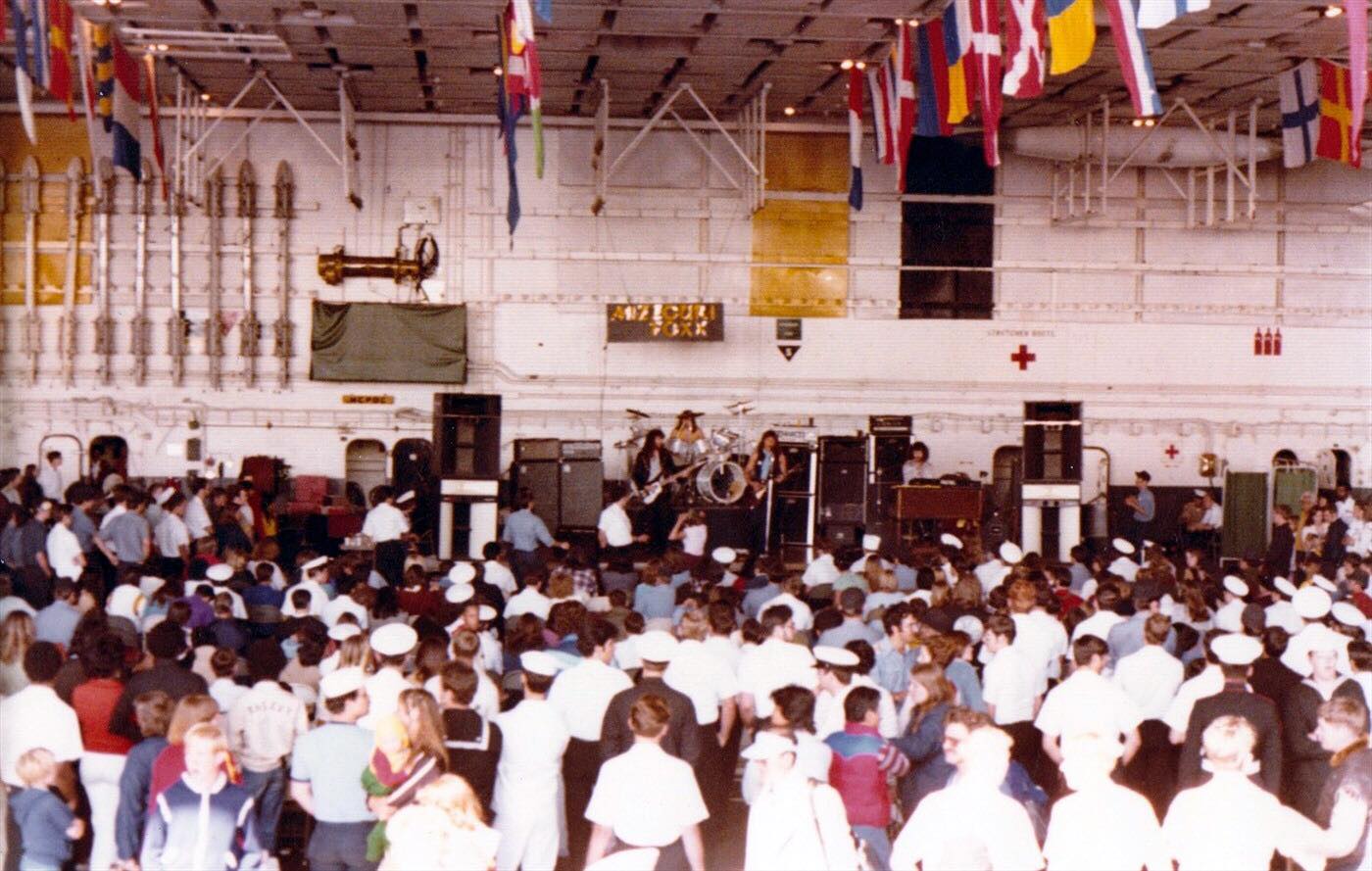
Is there any unreleased material left, beside the discussed material? Maybe from a separate project by a band member?
‘Stereoghosts MF/GF’
In 2017 my wife Virginia was elected to the Buena Park City Council. Part of her political exposure included Todd Trout, the CEO of the Buena Park Boys and Girls Club. Todd is a co-founder of a band called Gameface. He approached me with a proposal to jam on some original songs he and his bass player buddy Jeff Nelson had been working on. By that time, I had been tinkering around with drums again and had purchased a Roland electronic kit and a Yamaha five piece Stage kit. It sounded interesting at the time, and I liked Todd. We were able to practice in the B.P. Boys and Girls Club and I could keep my drums in a locked closet which was very convenient for getting set up. Jeff is a “Private Jet Company” pilot, so he was doing a lot of travel due to his work. Virginia and I also became friends with Greg and Dina Parker. Greg, as it turned out, was a good lead guitarist so after he joined things started to get better! The total number of songs we wrote under the name Stereoghosts was nine tunes. Todd knew Paul Miner (bass player for the group Death By Stereo) and Paul owned/ operated Buzzbomb Studio in Orange, Ca.
As our material got better, I was envisioning we might play some live gigs locally and I purchased my red DW Performance drums in hopes that live gigs would eventually happen. I did use the DW kit for all of our studio tracks. One of the songs we recorded and had CD’s made is ‘Our Town’. That song was used in a video for my wife’s State of the City luncheon after she was the Mayor of Buena Park. Unfortunately, Virginia lost her bid to be re-elected on City Council in 2018 and the political ramifications from that forced Todd to stop hanging with me or playing any more with Stereoghosts… That ending ranks right below the Polydor “kick in the nuts” decision as far as my music endeavors are concerned. I do have the tunes we recorded posted on the Mizzouri Foxx website and on my own I had a lyric video made from my favorite SG tune ‘Lions and Lambs’ which is on YouTube and the MF site.
UPDATE – 10-31-23
Following the first release of the Sound Company vinyl 45 rpm records vitually all 300 copies were sold within the first week!!
Klemen Breznikar
Headline photo: Sound Company group photo
Mizzouri Foxx Official Website / Facebook

